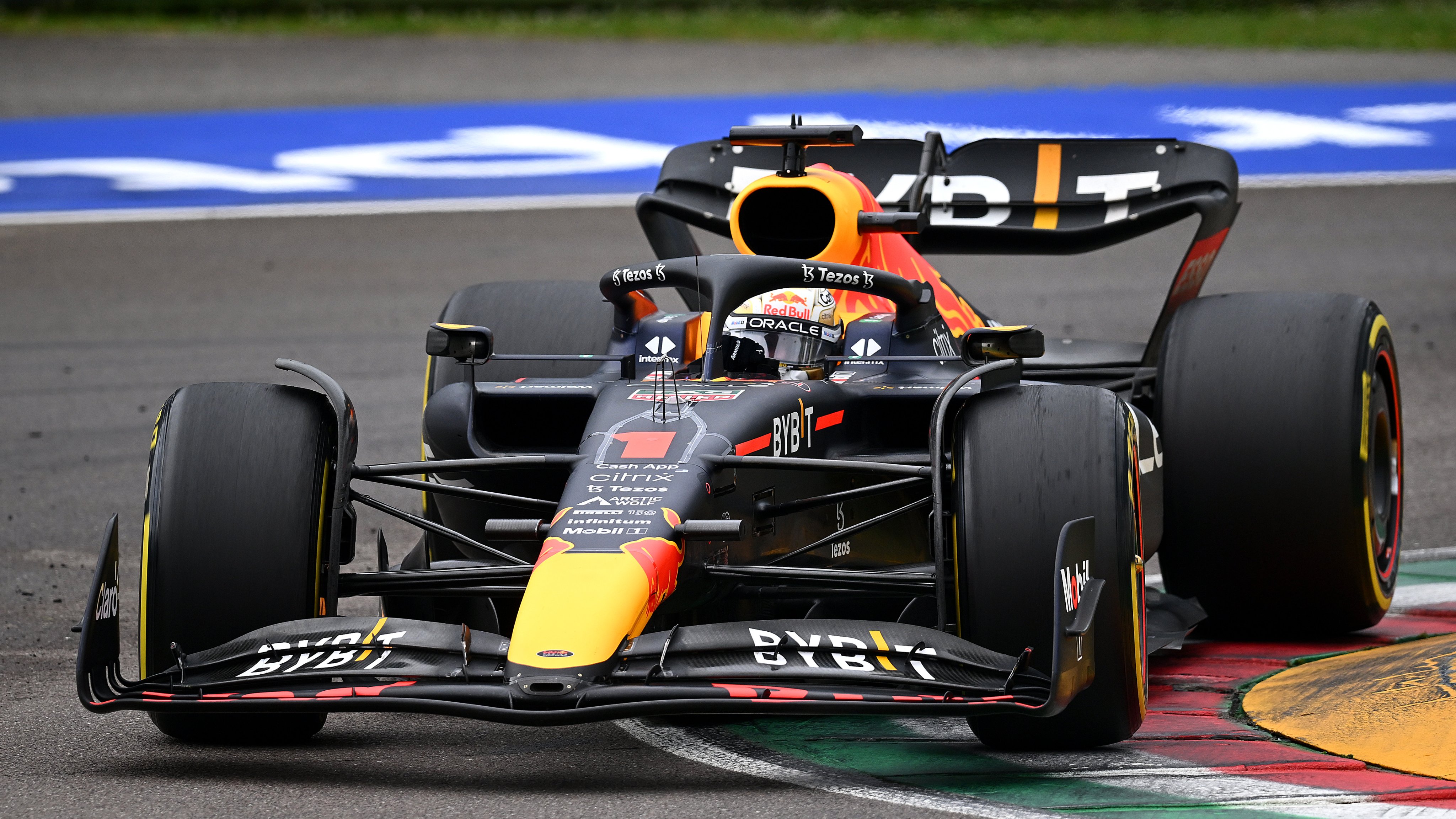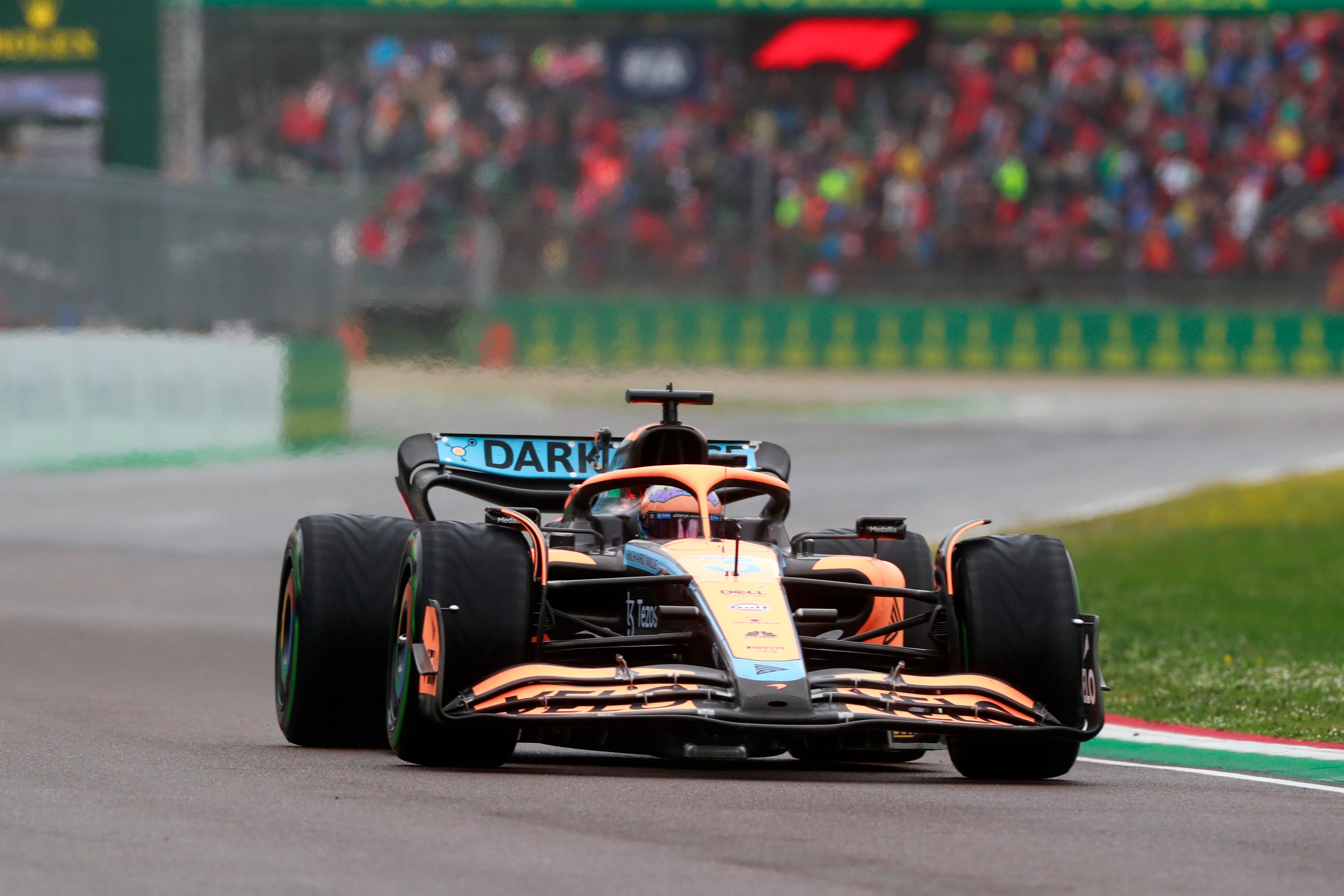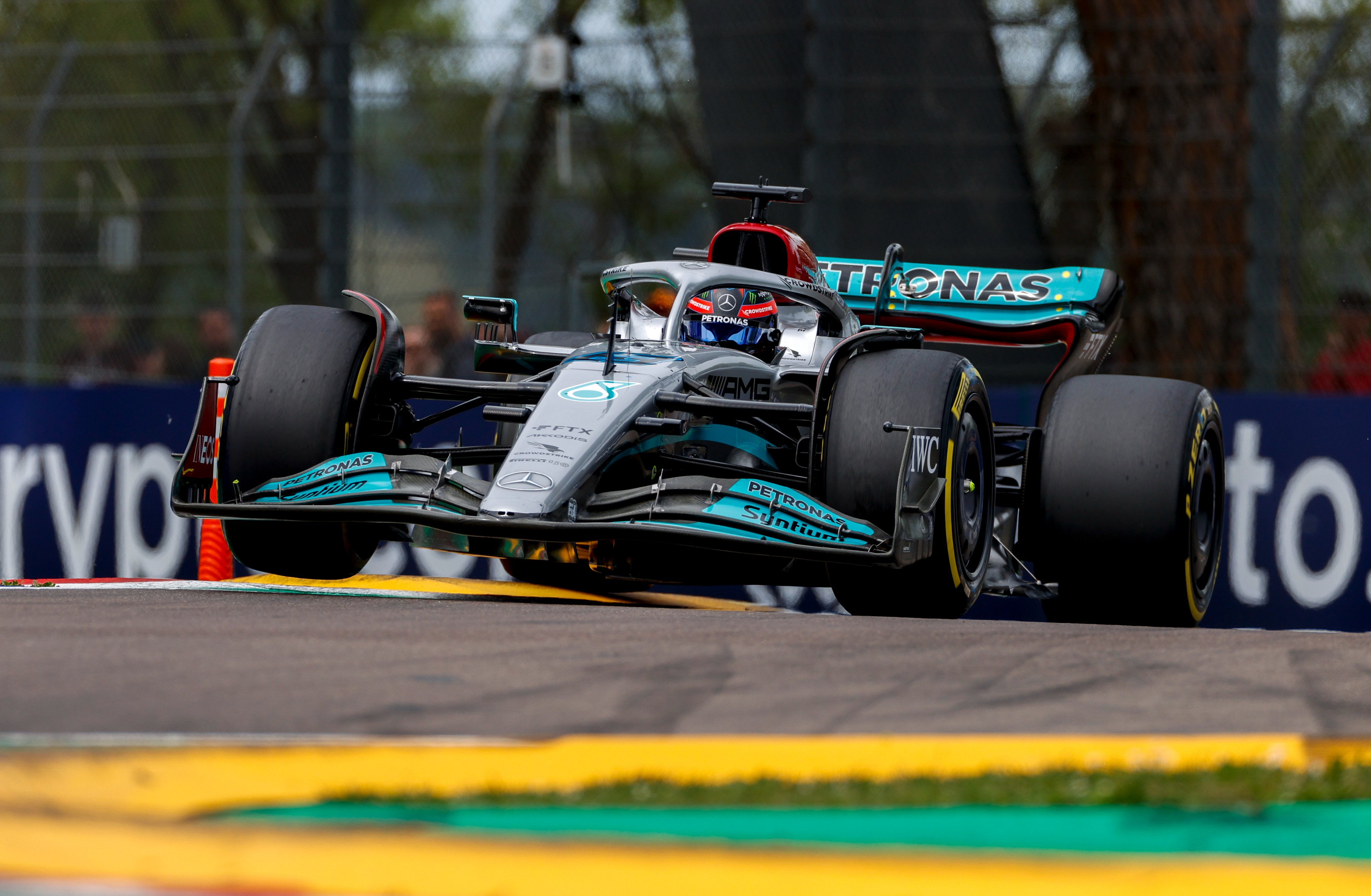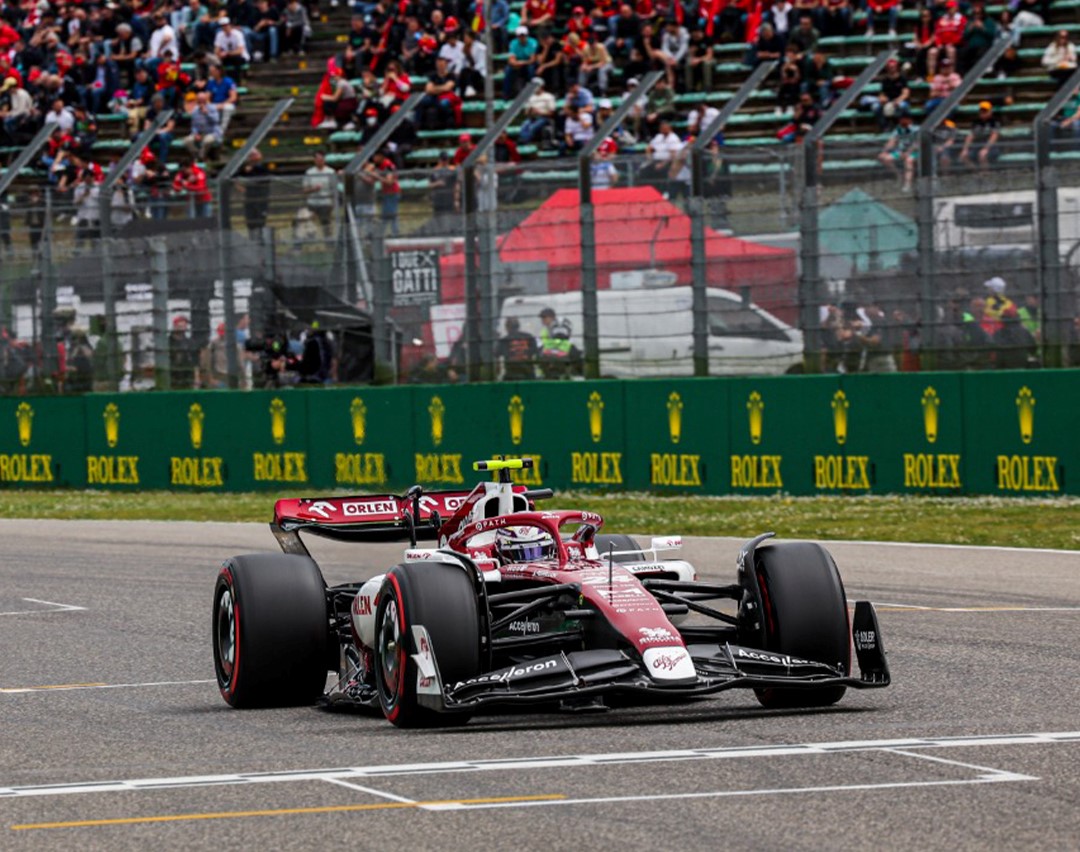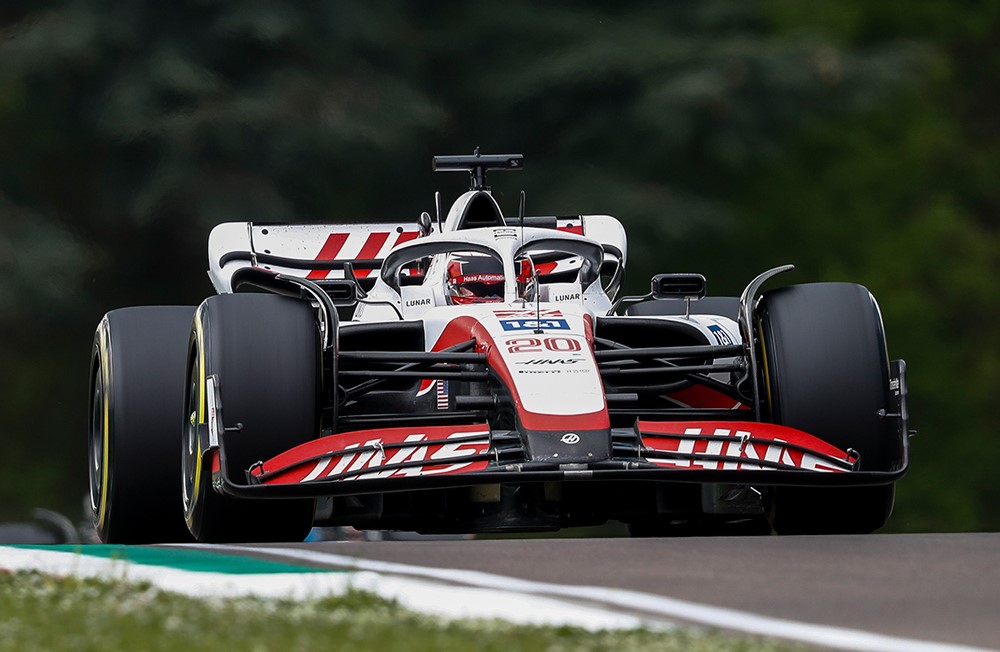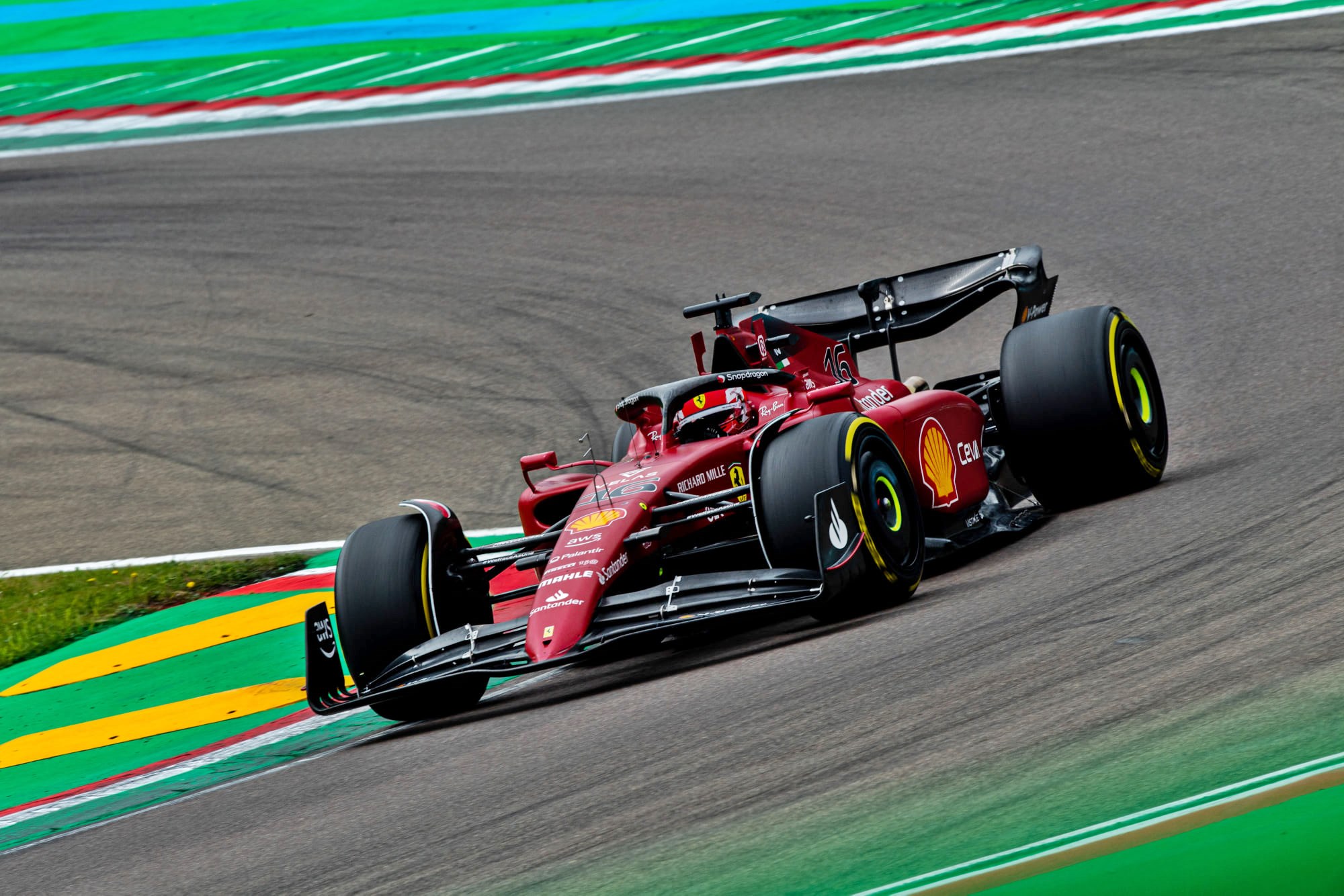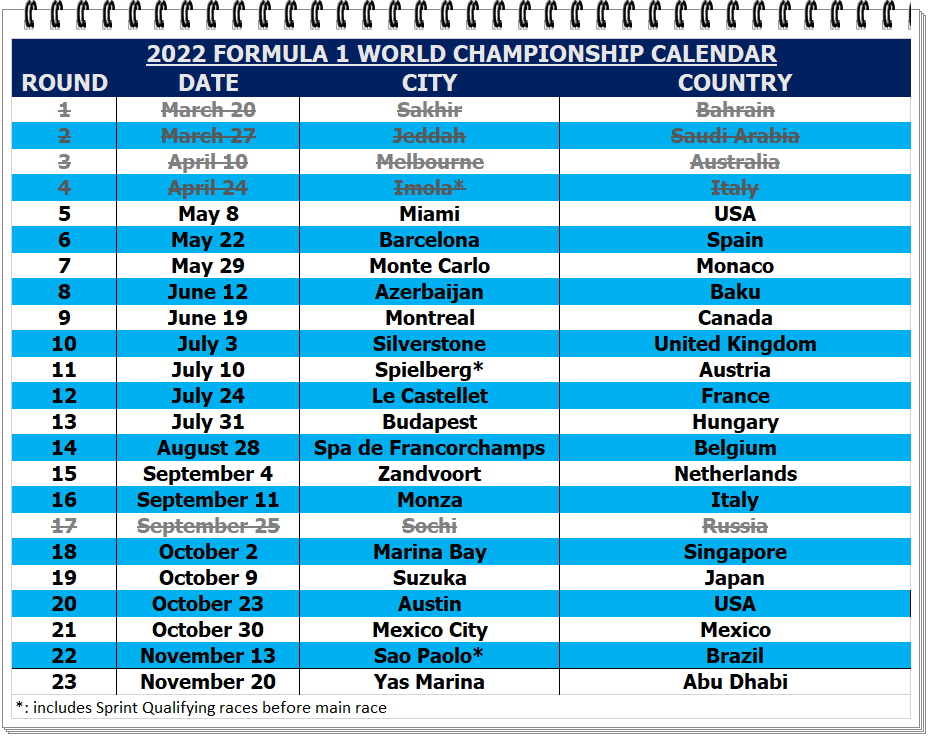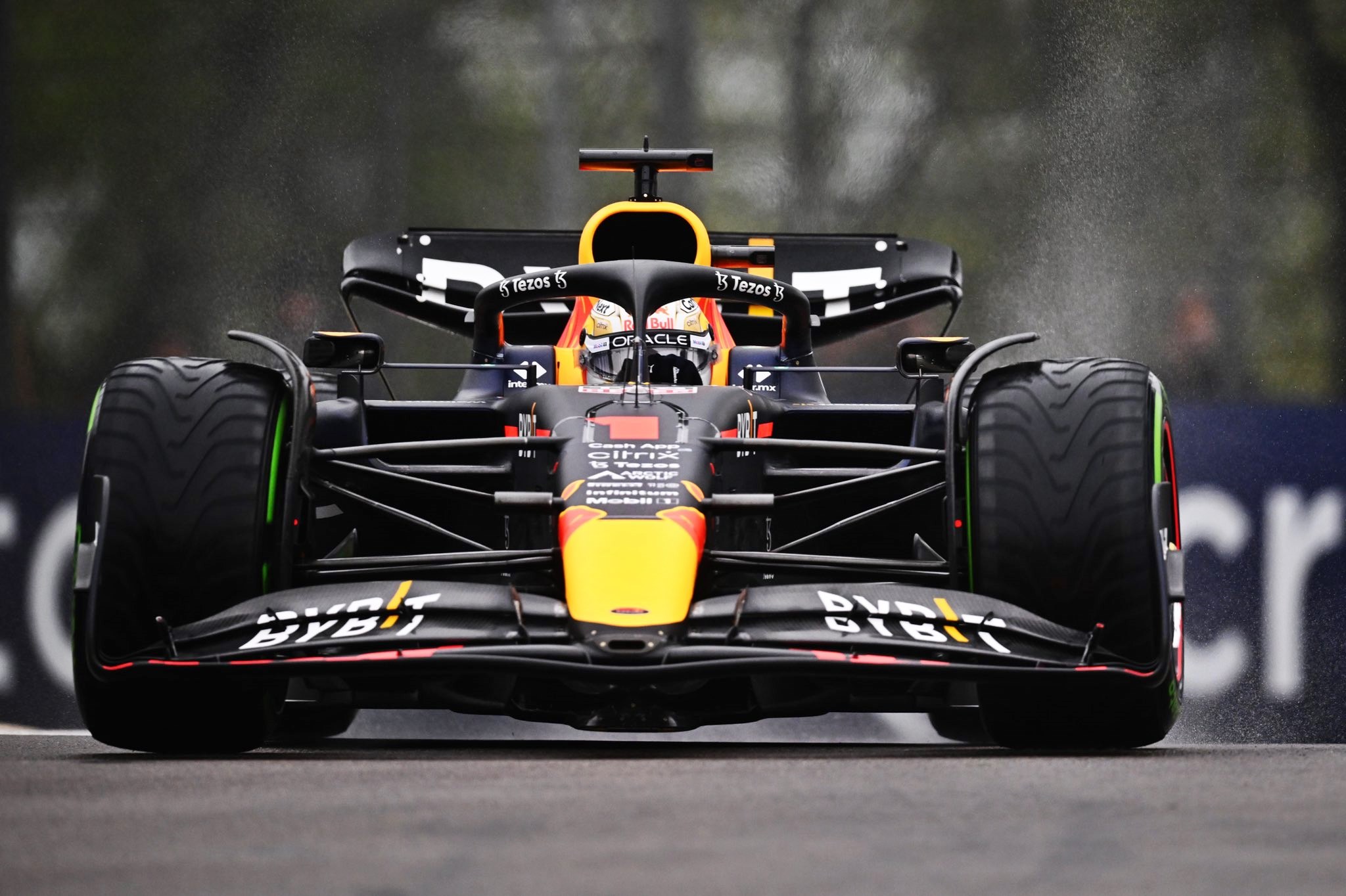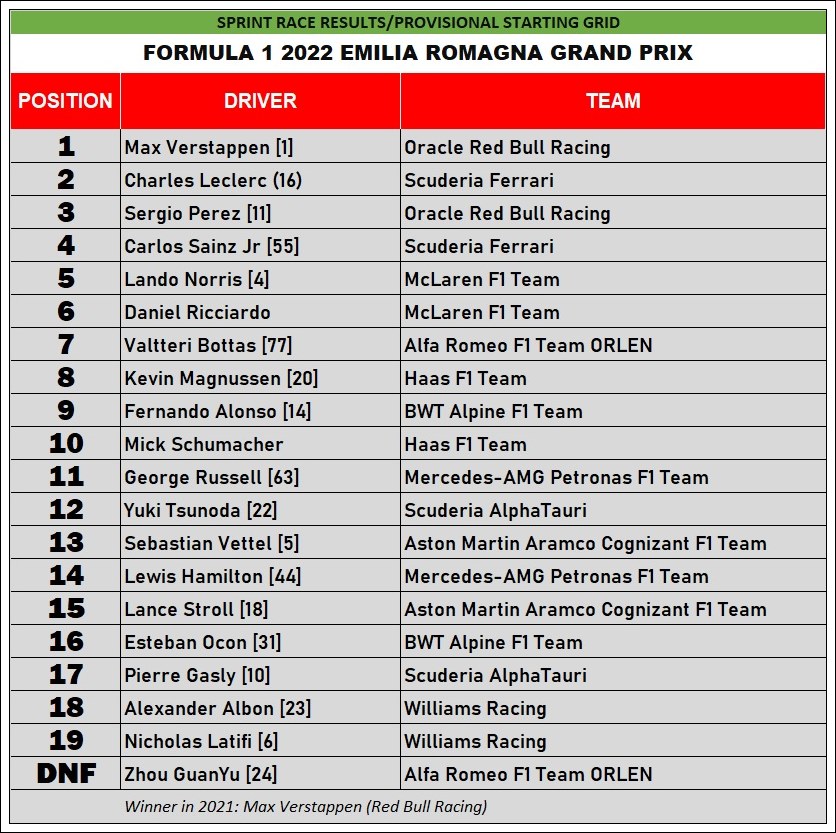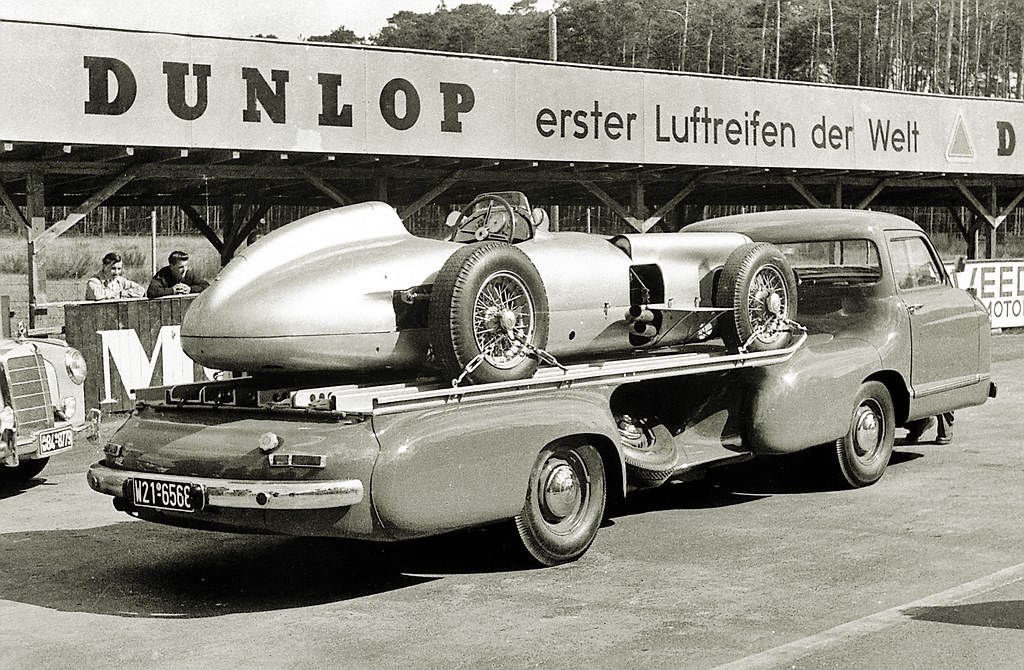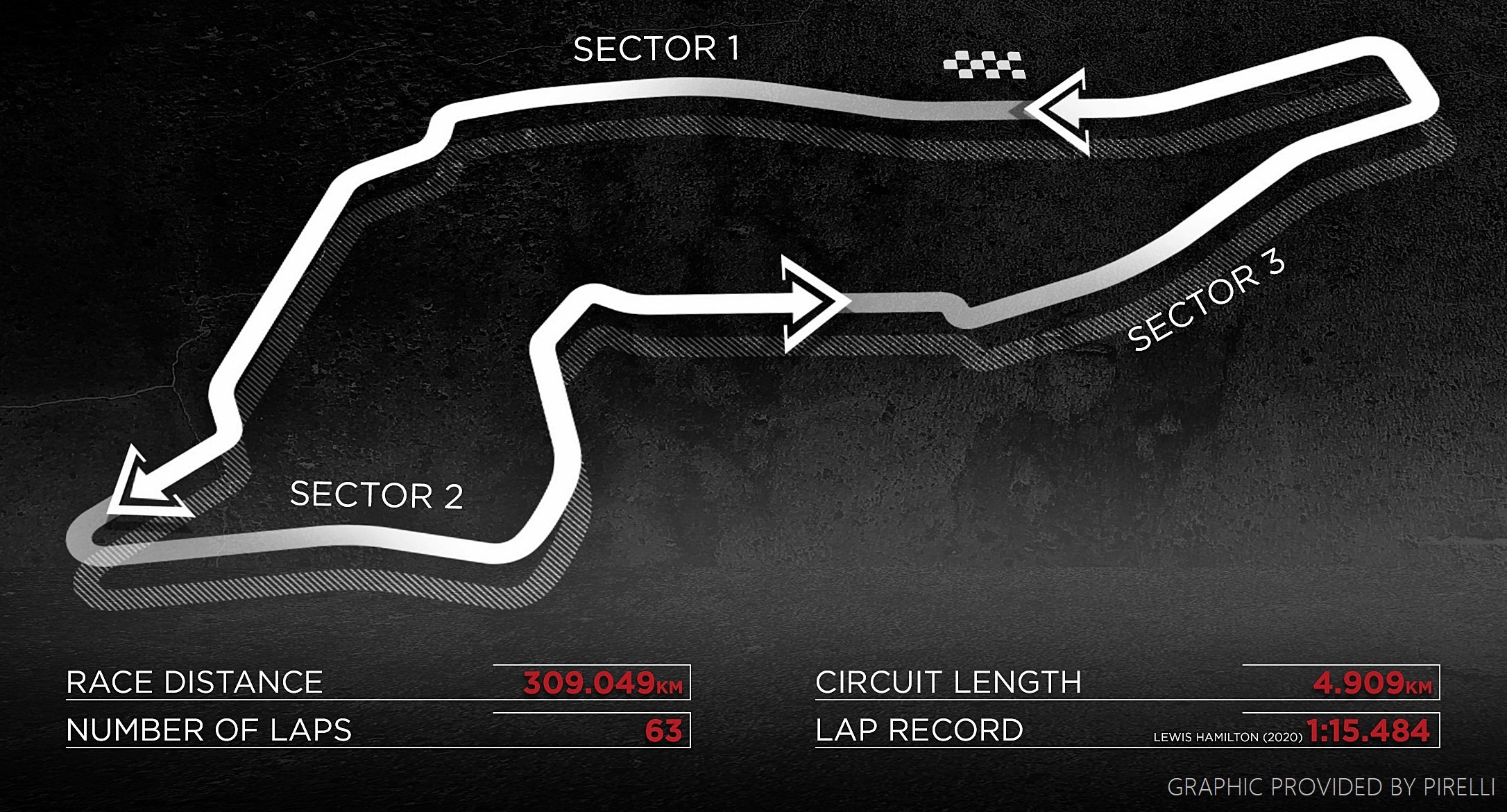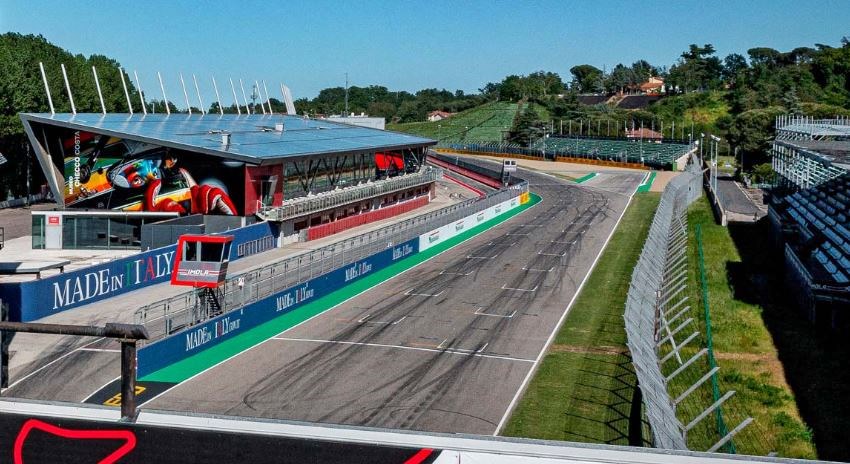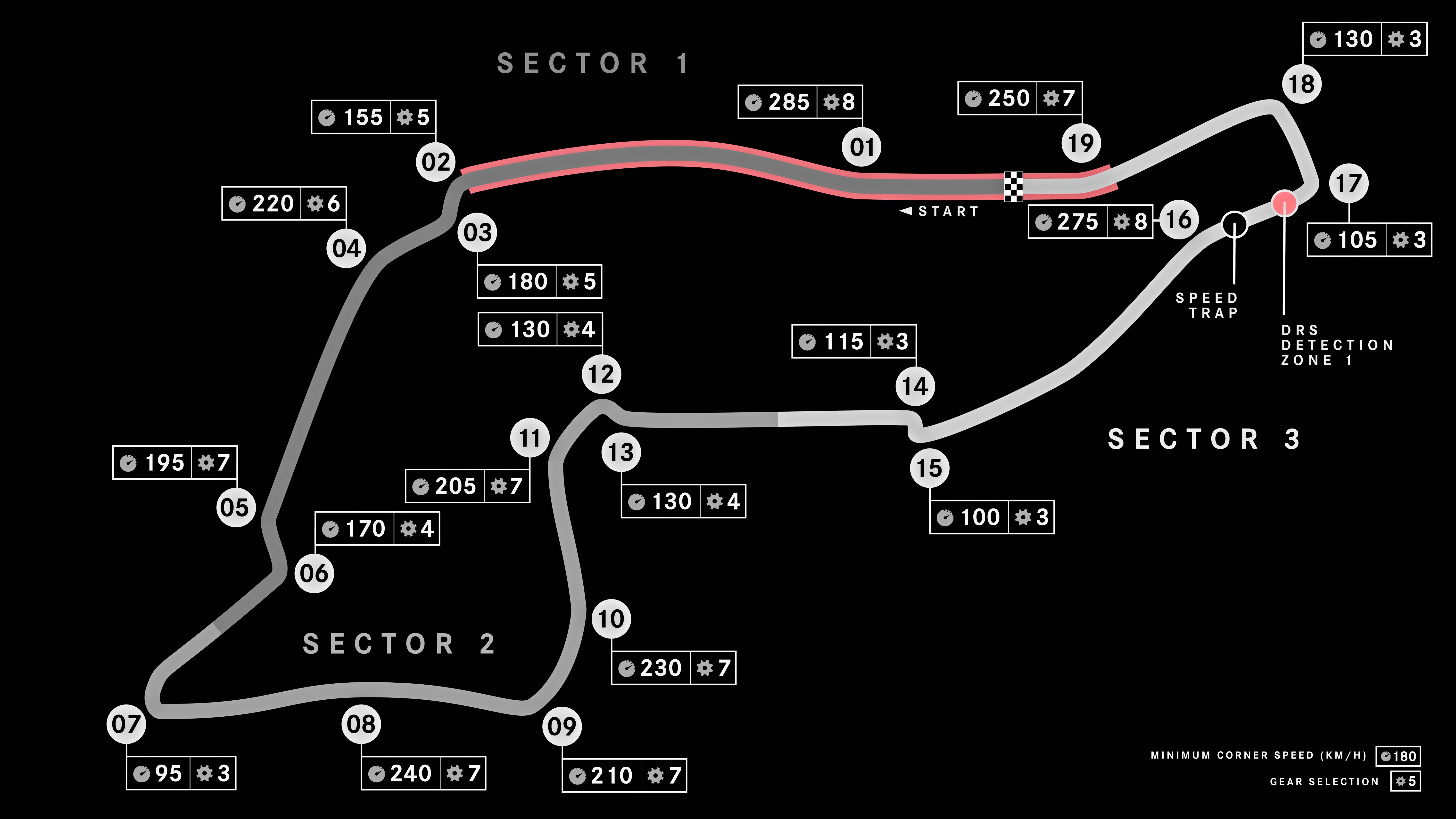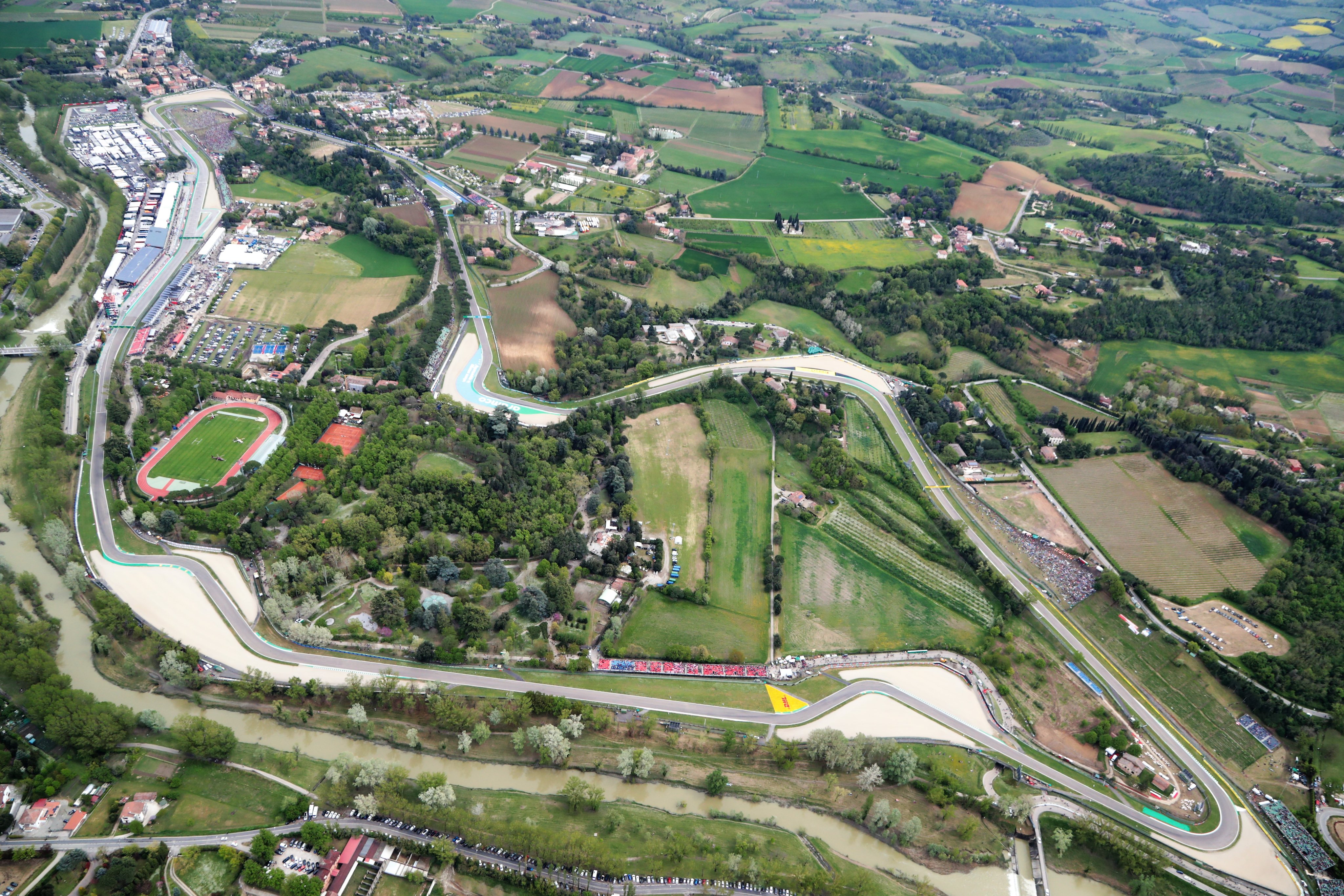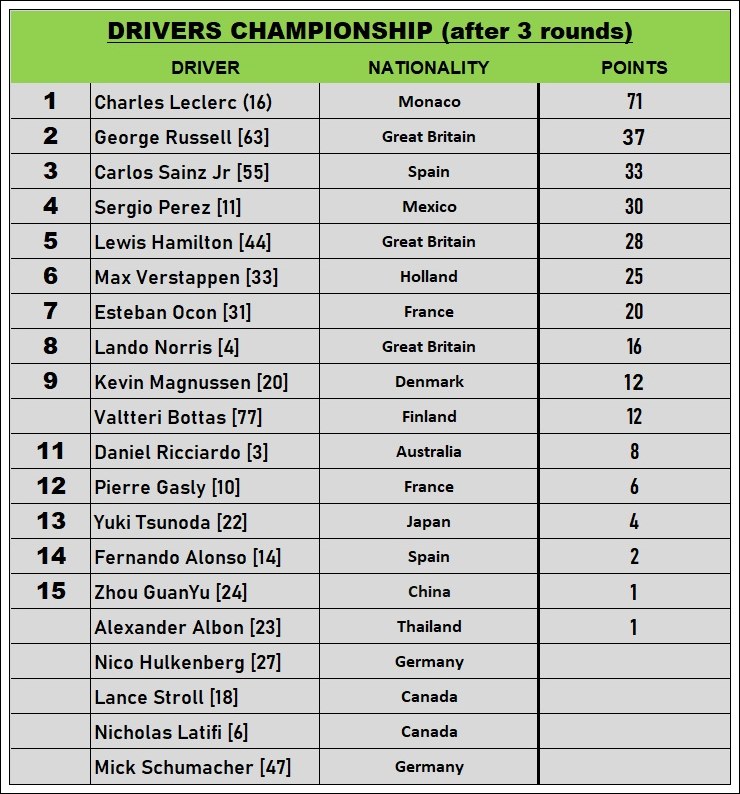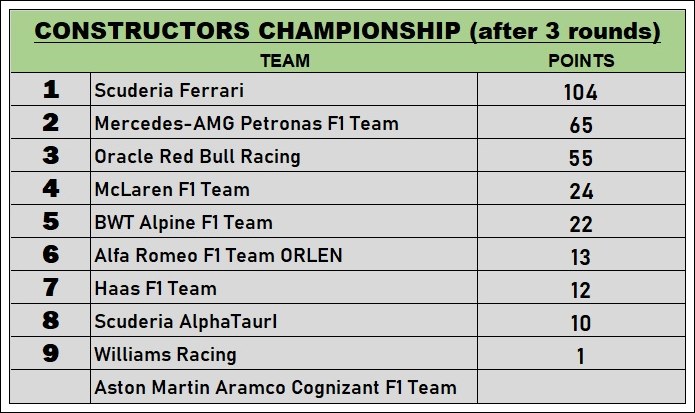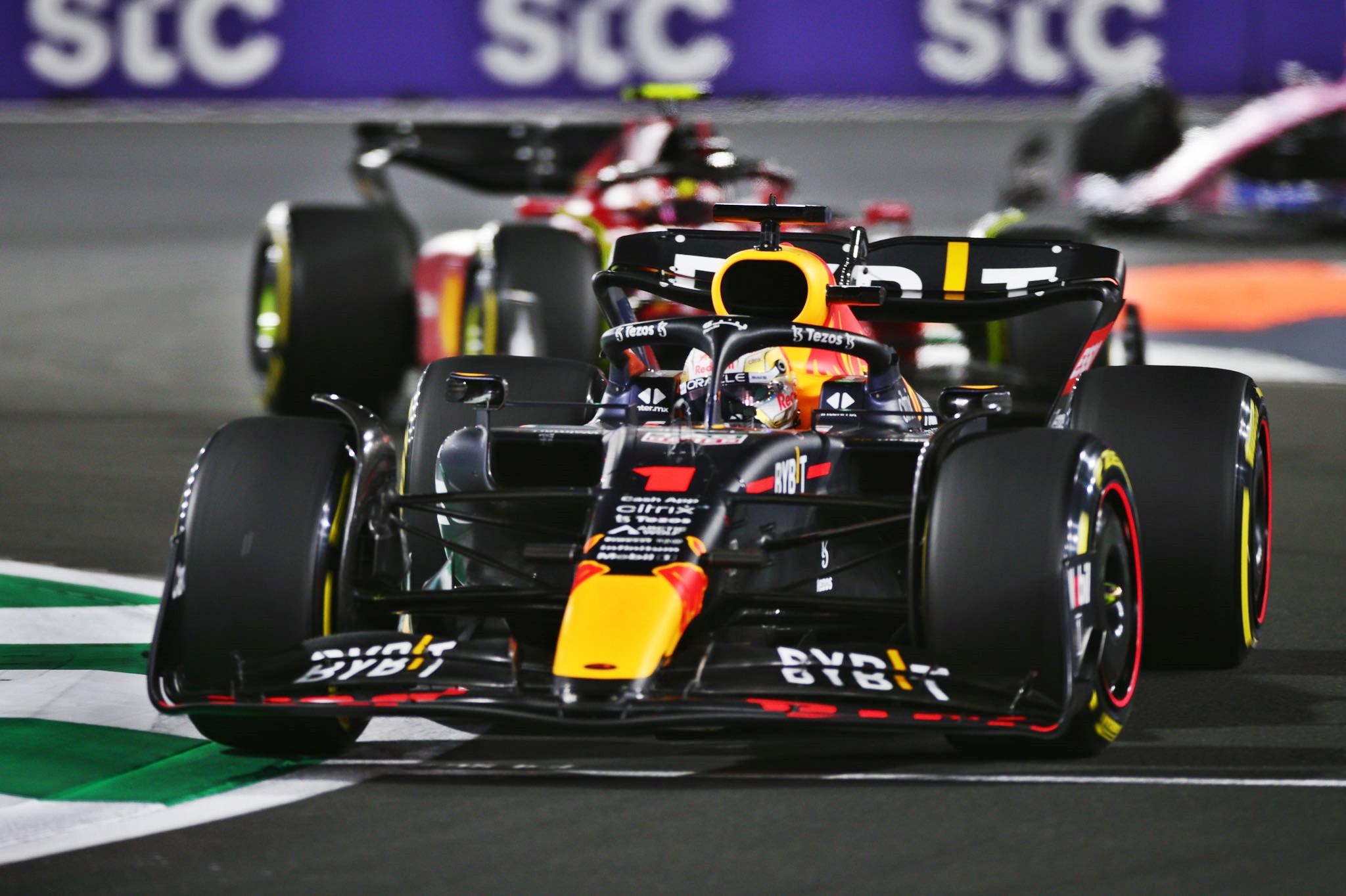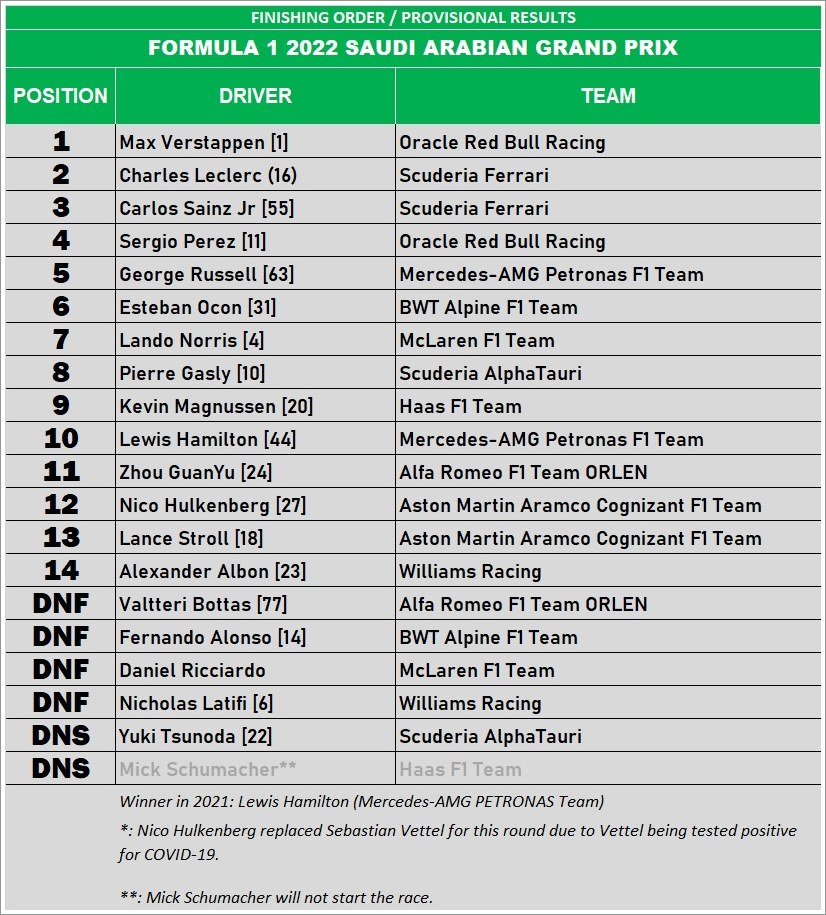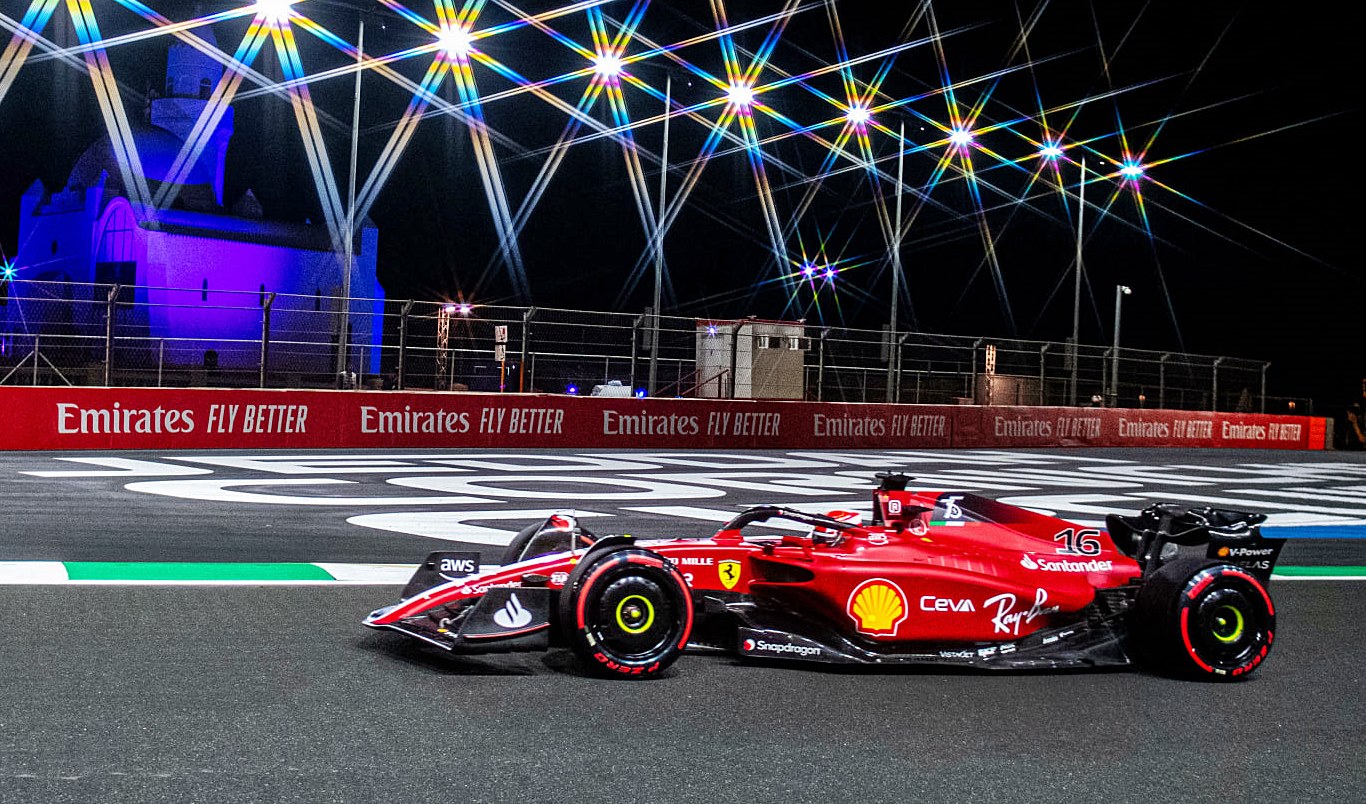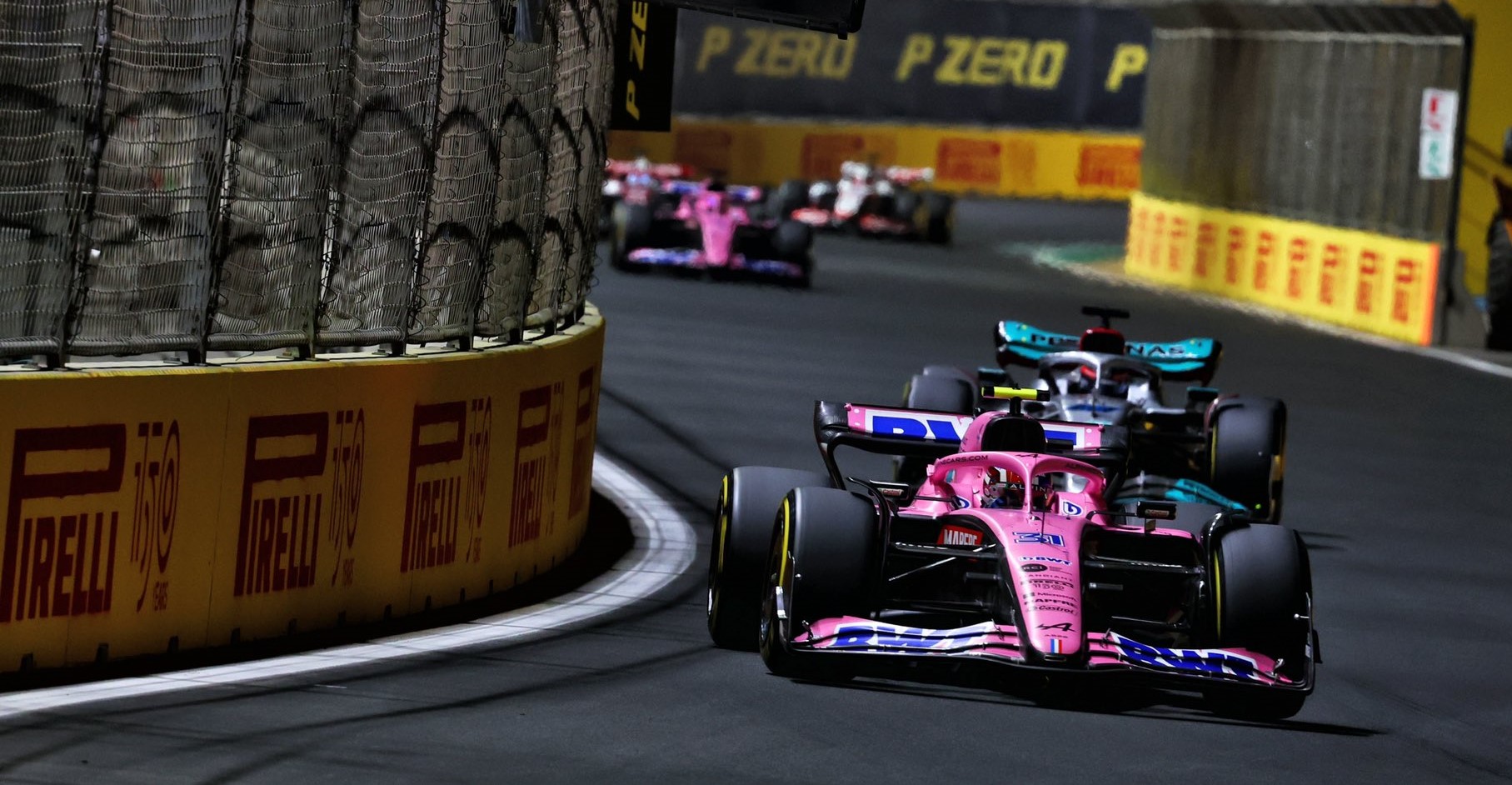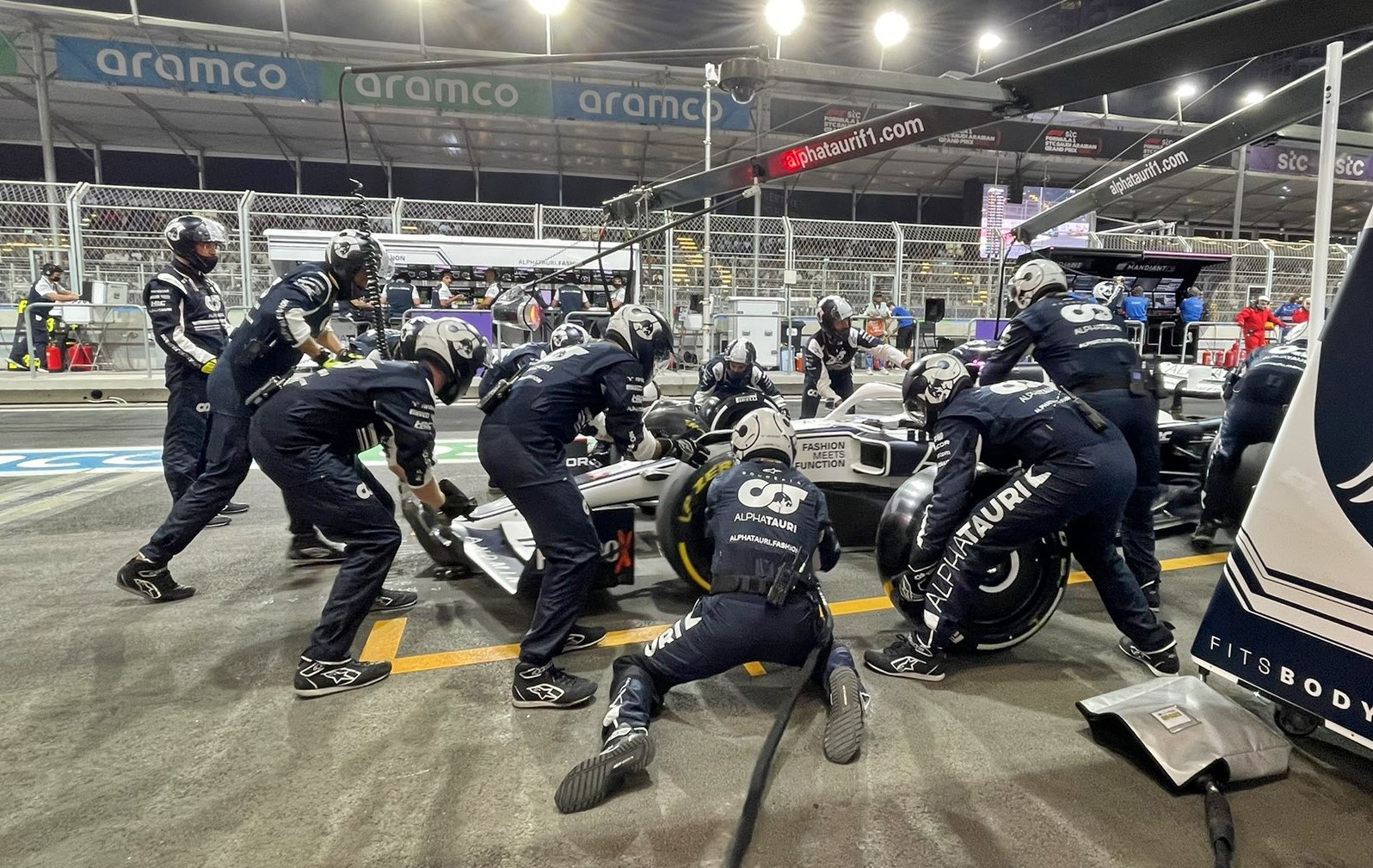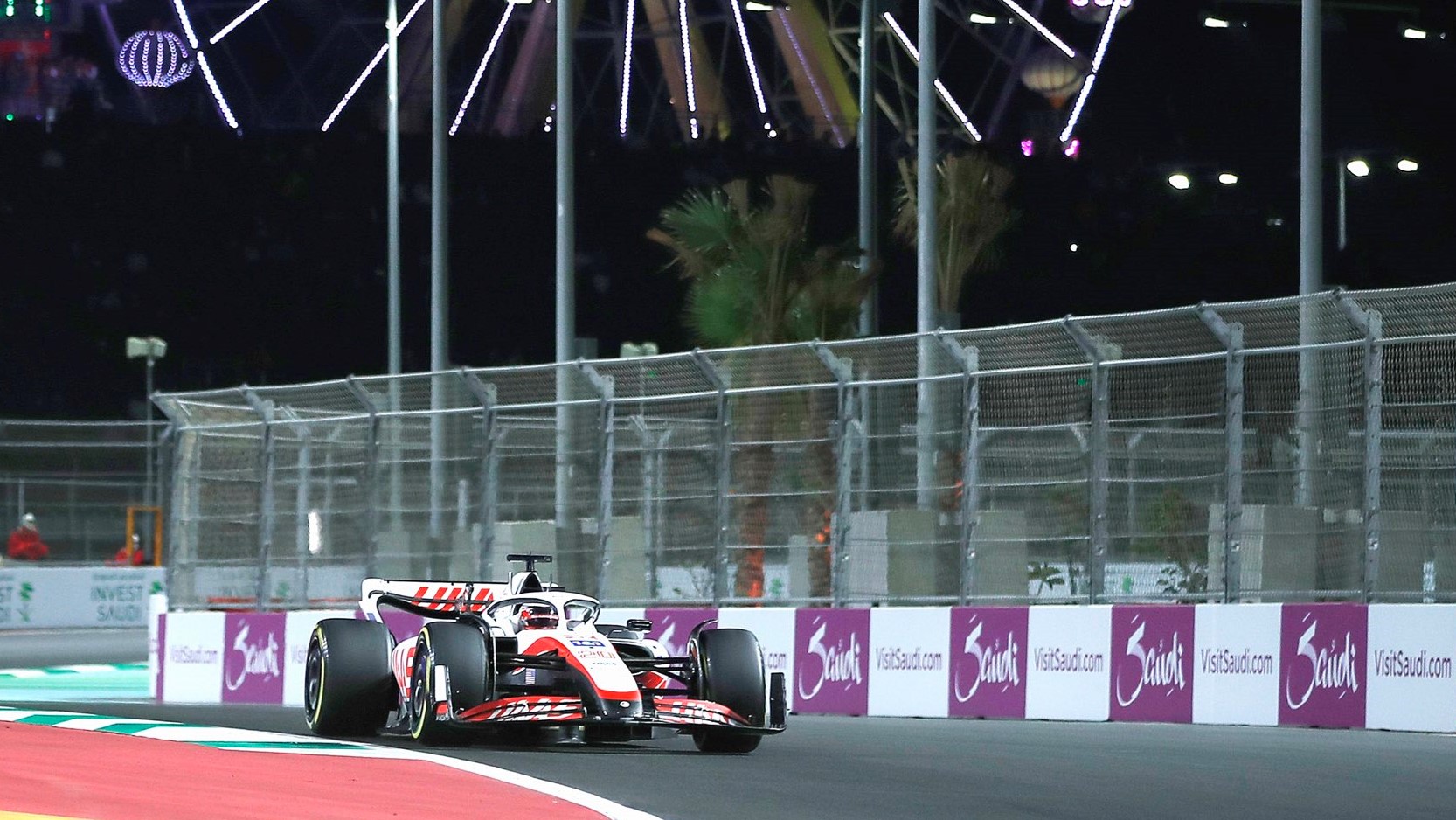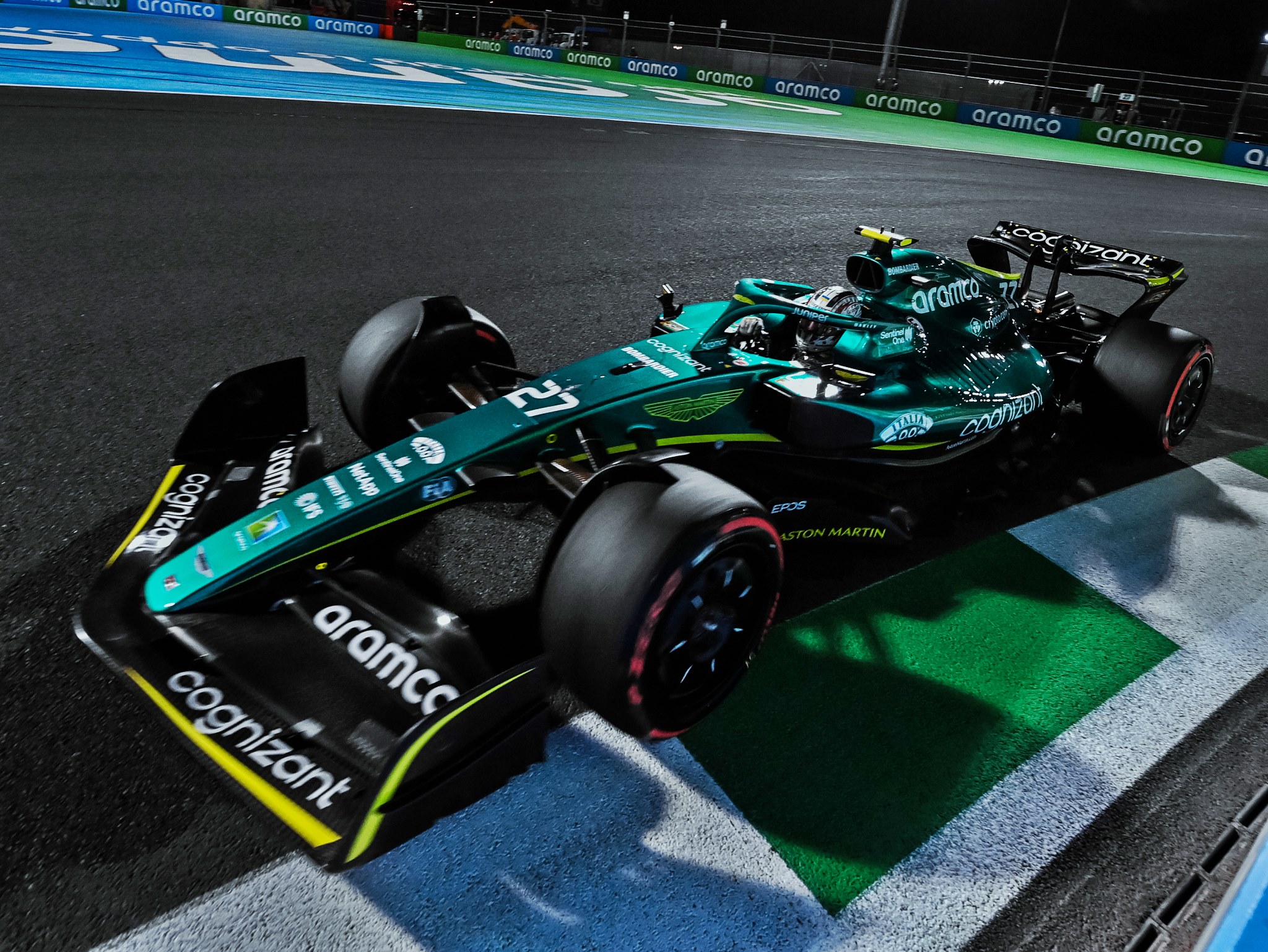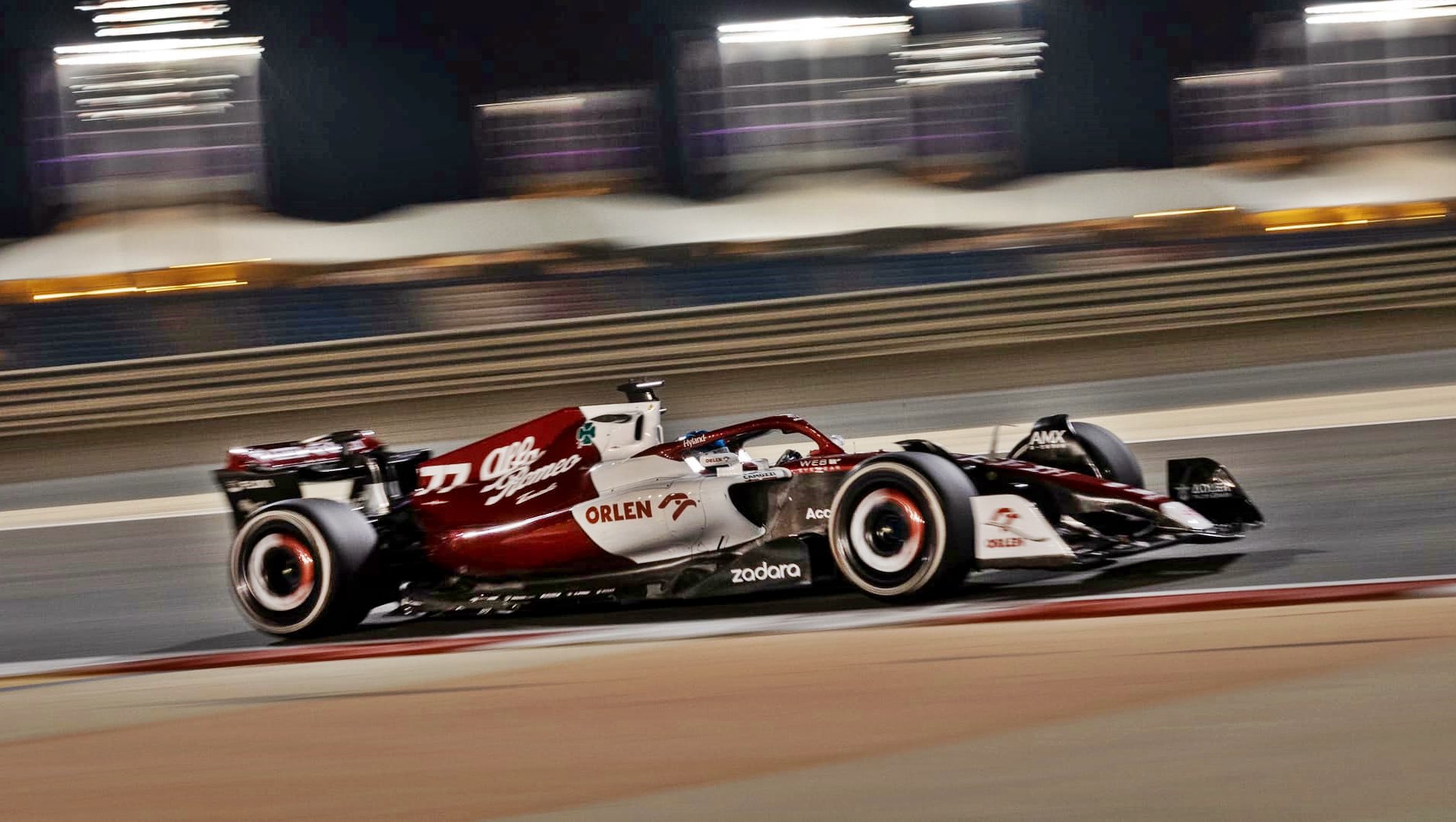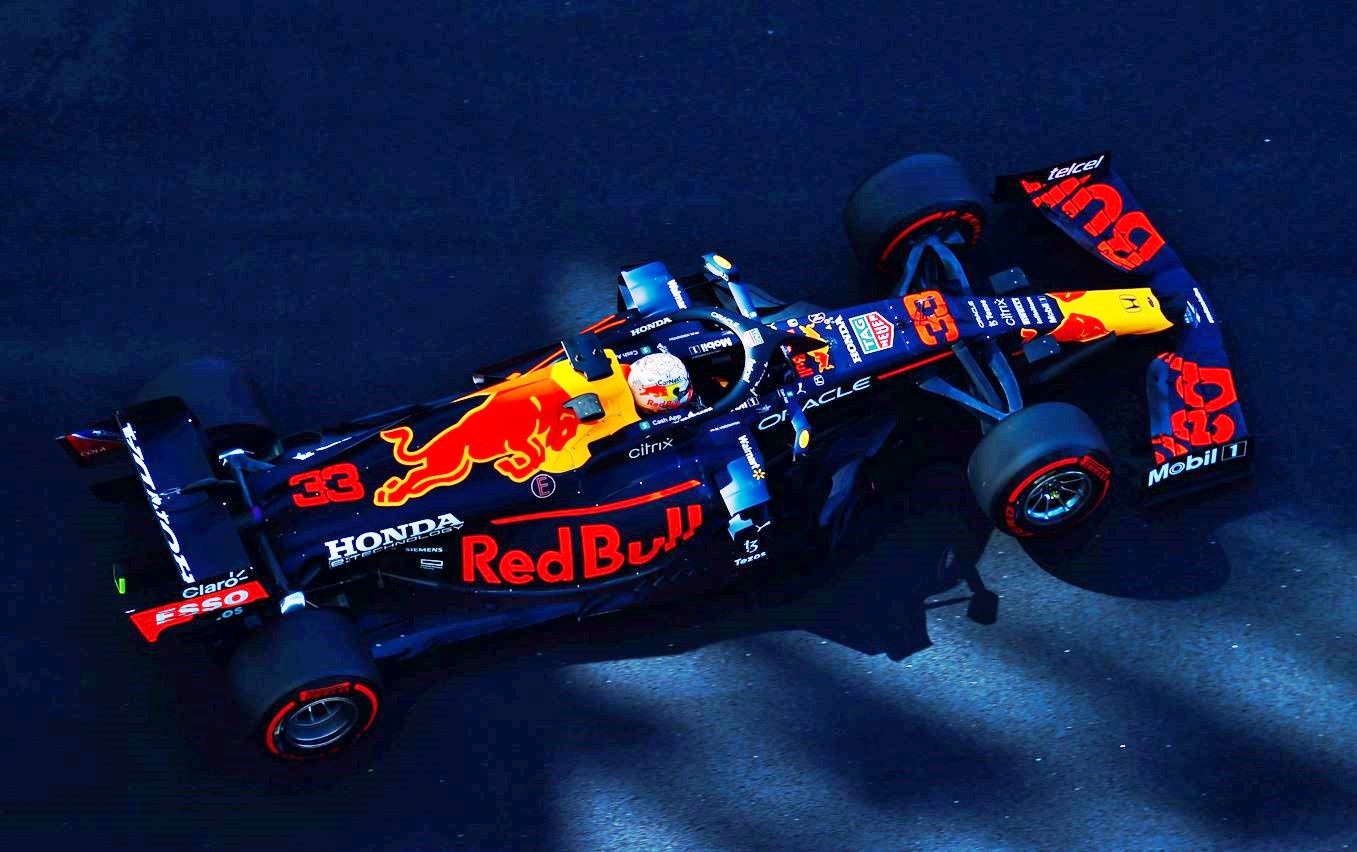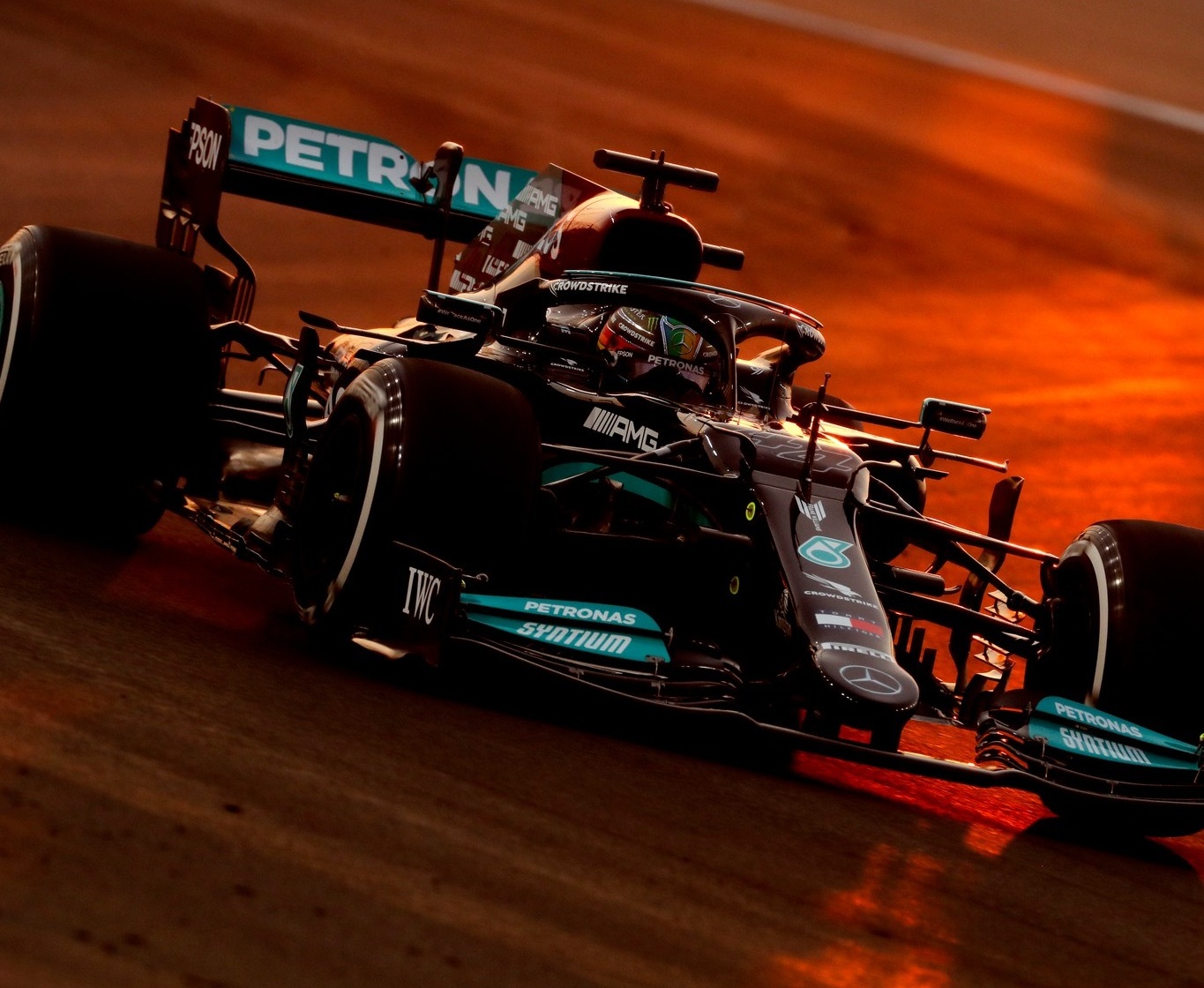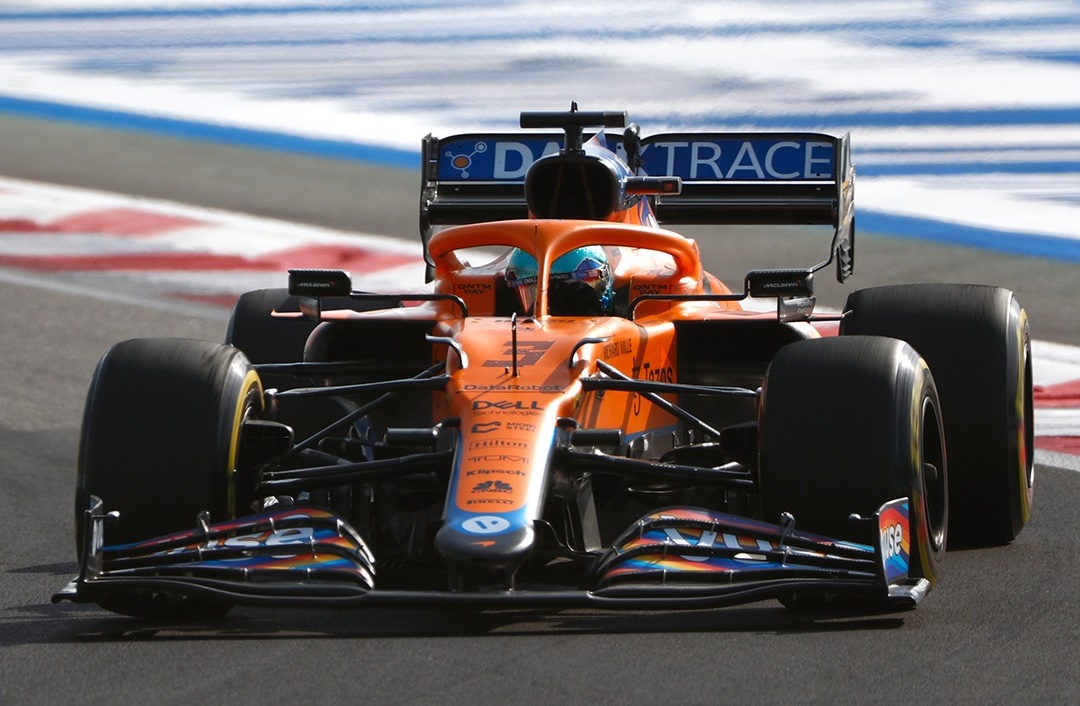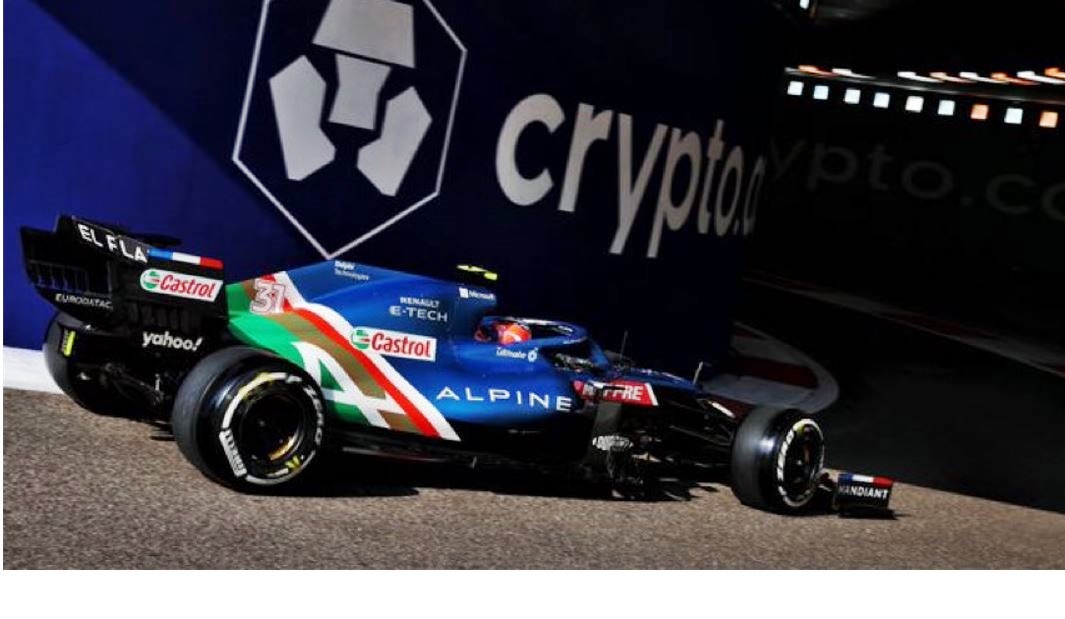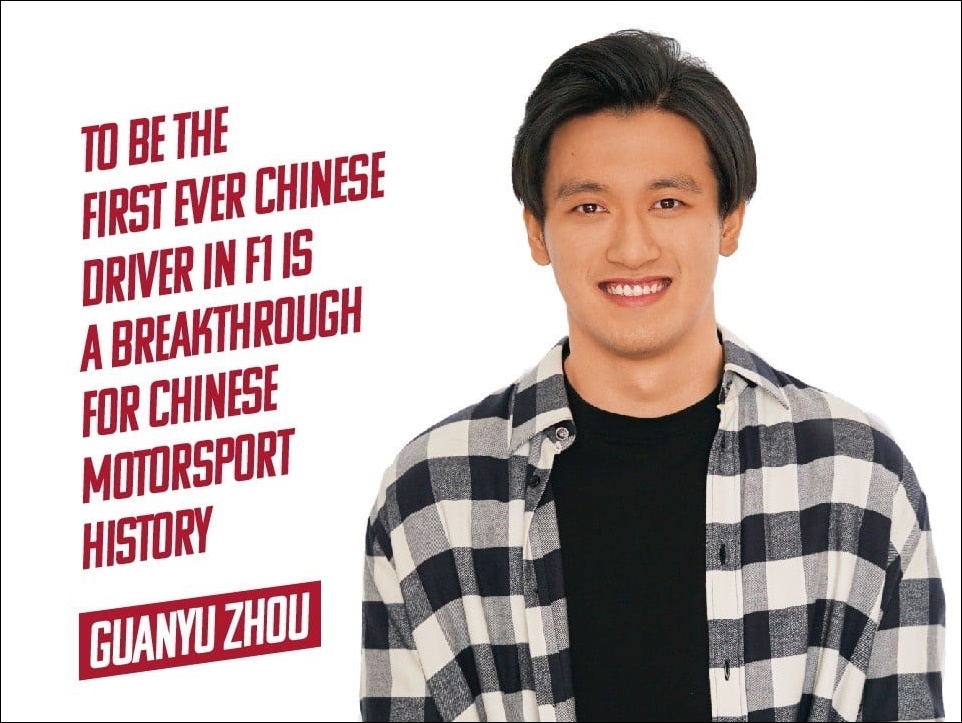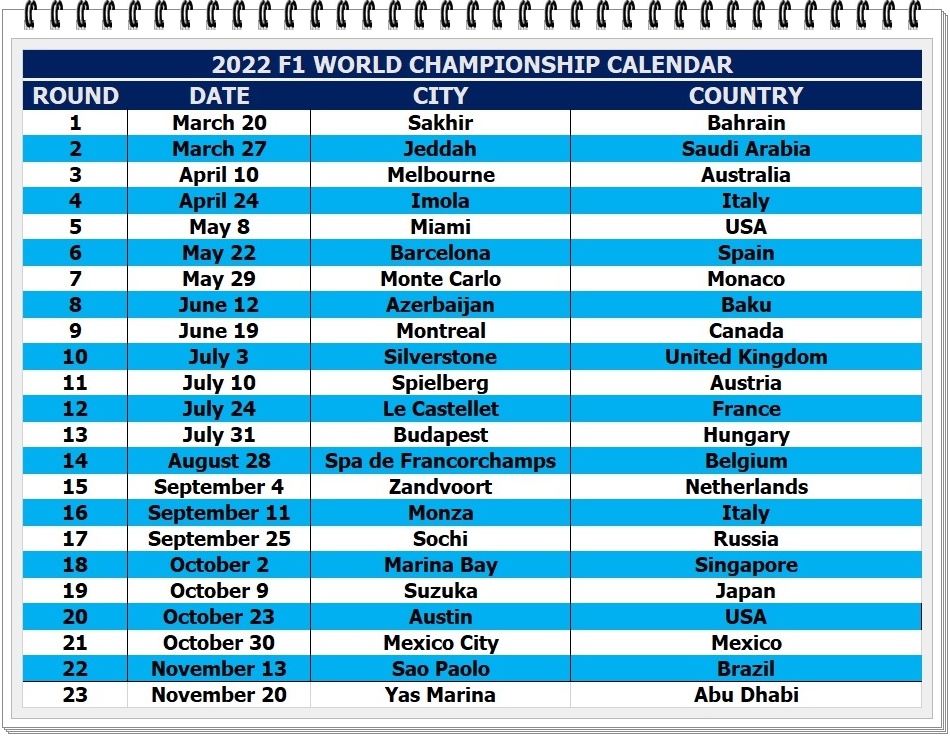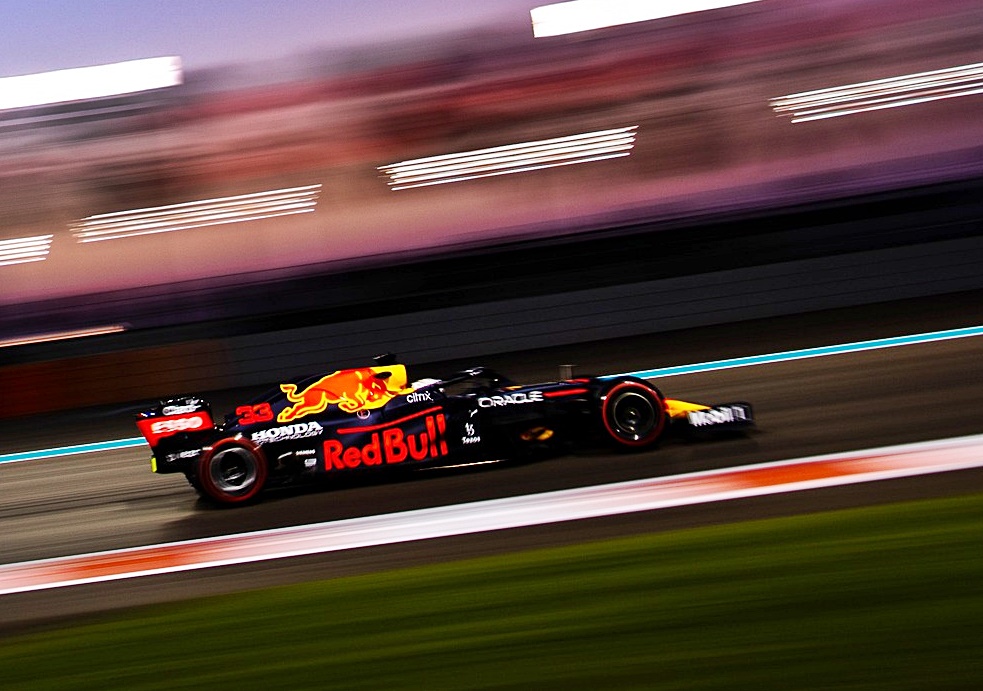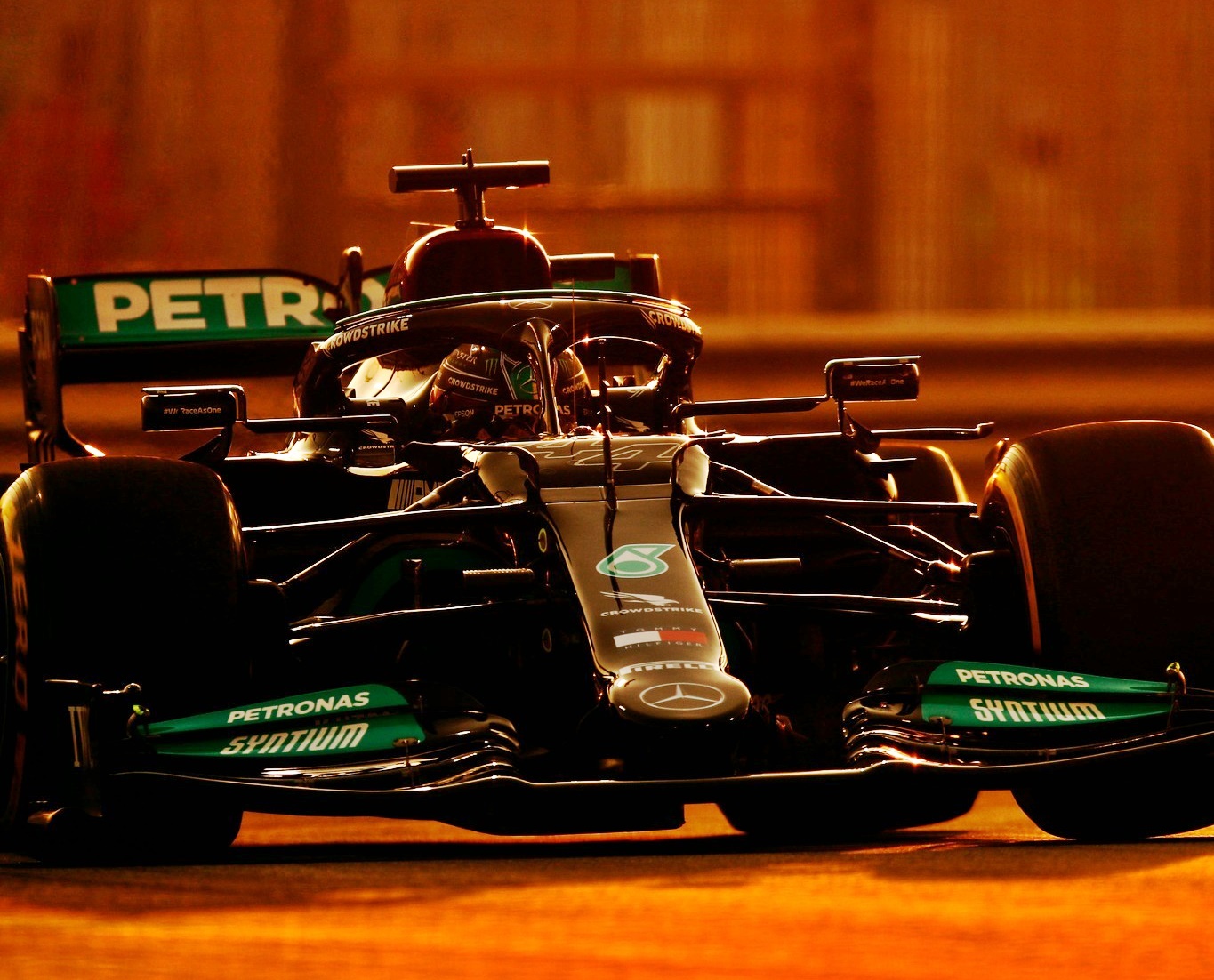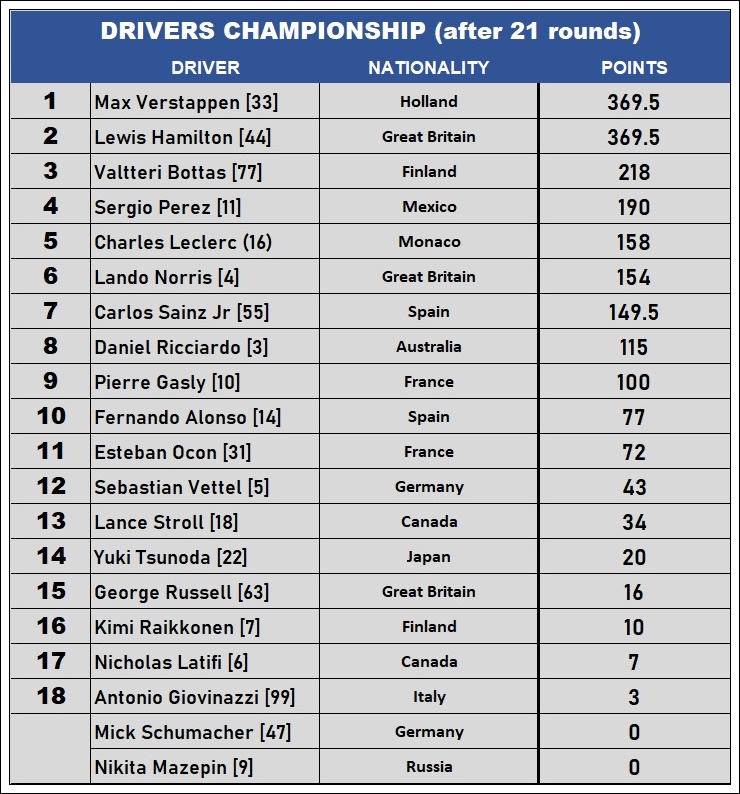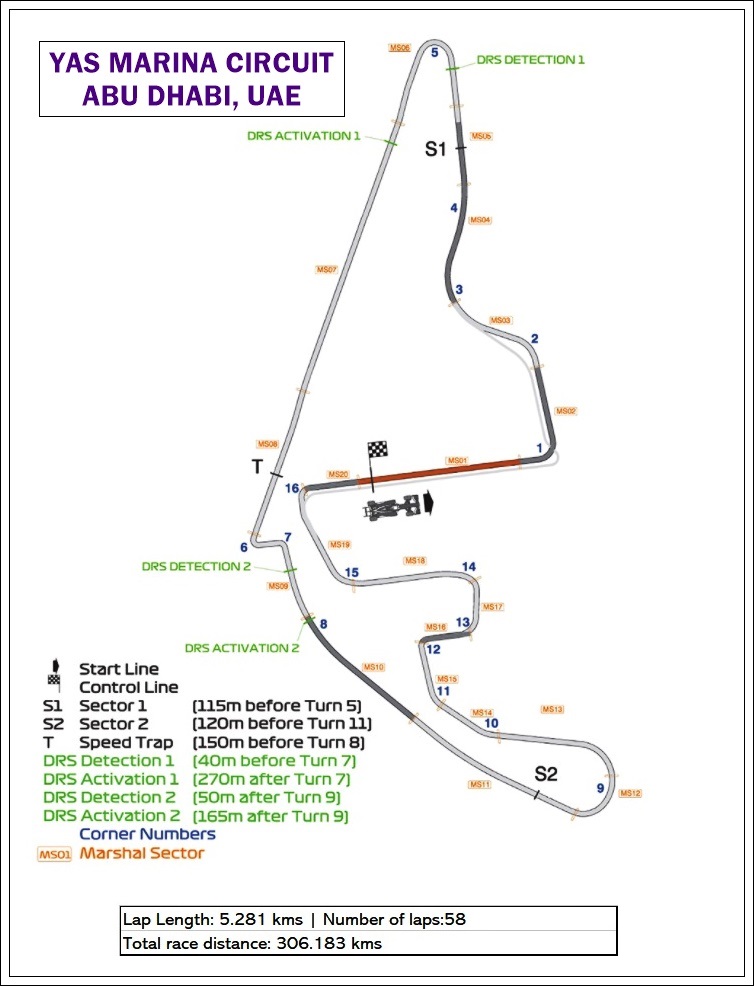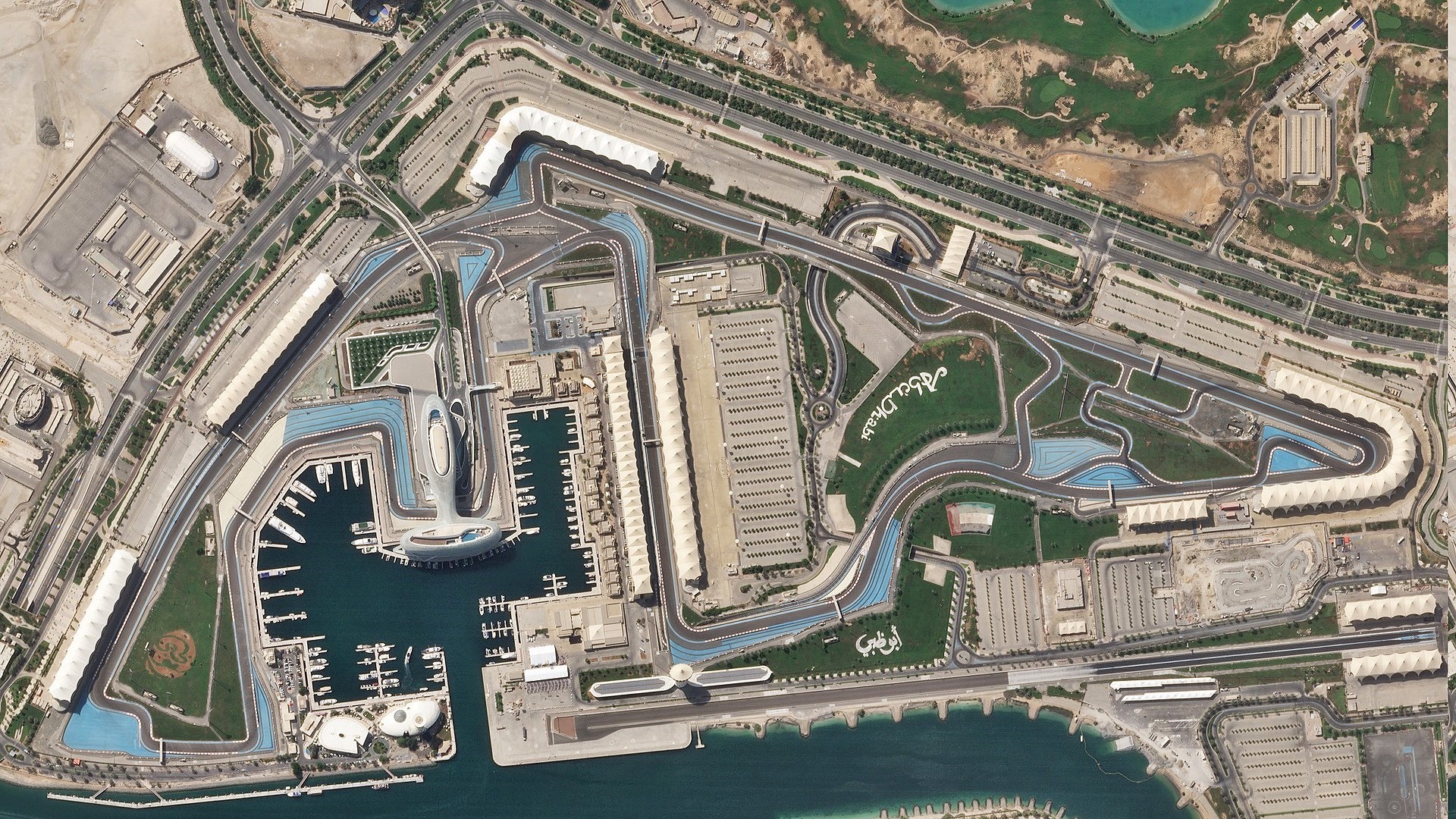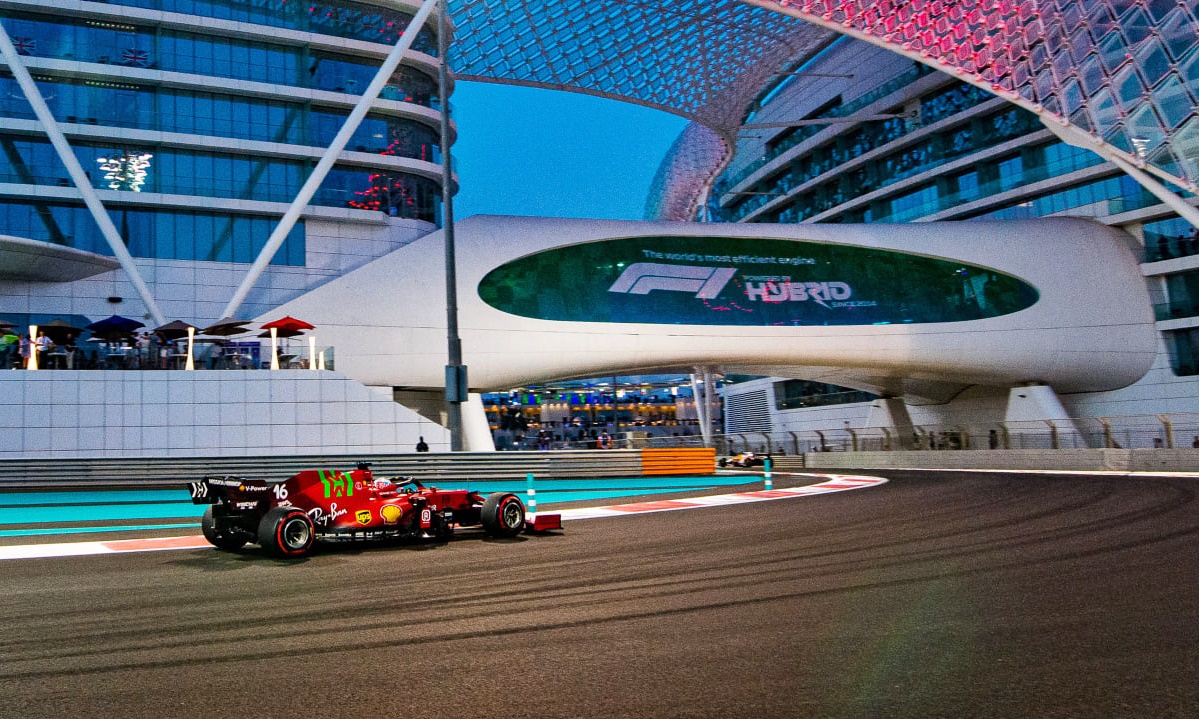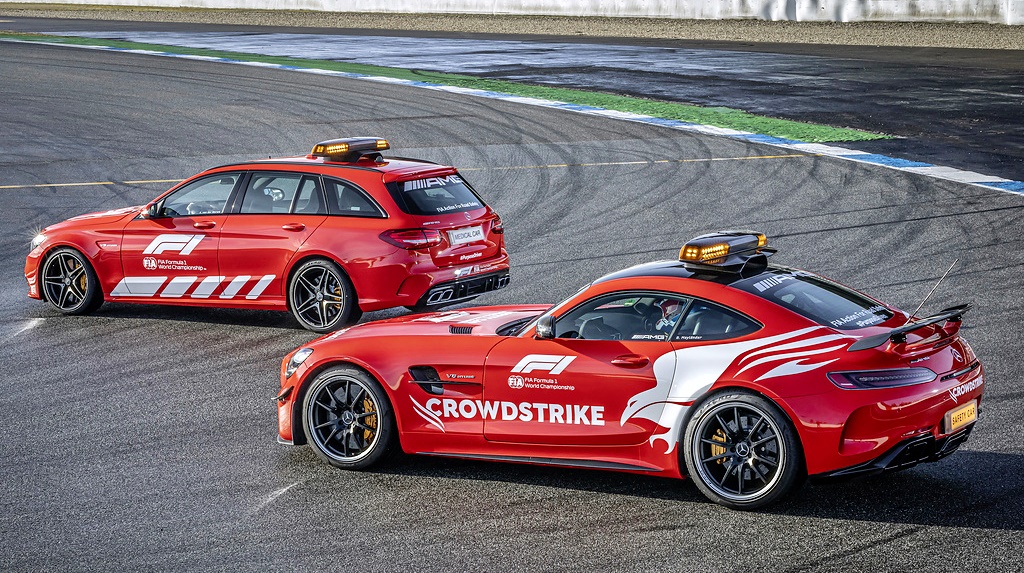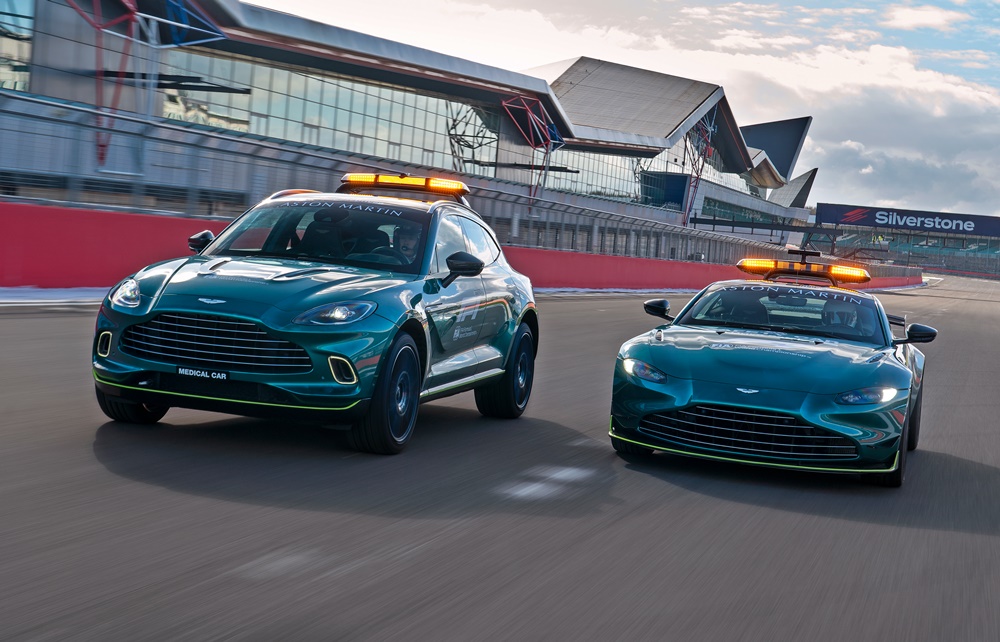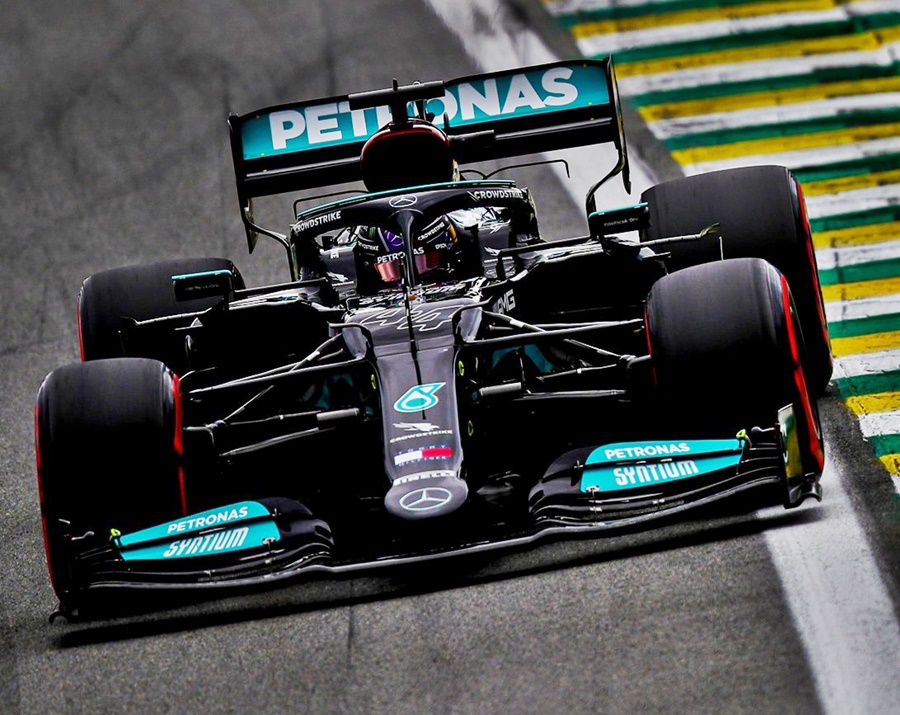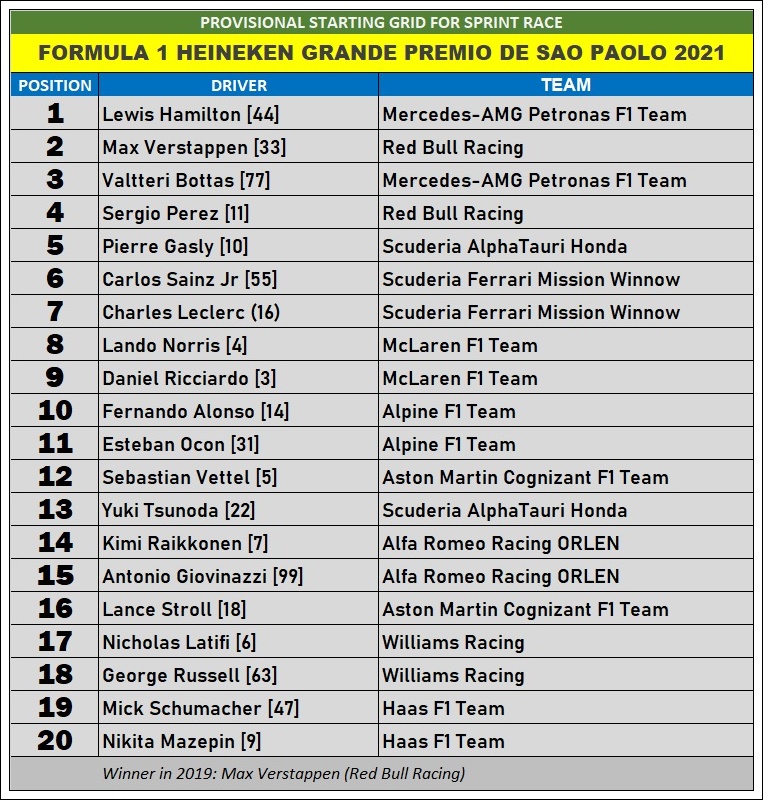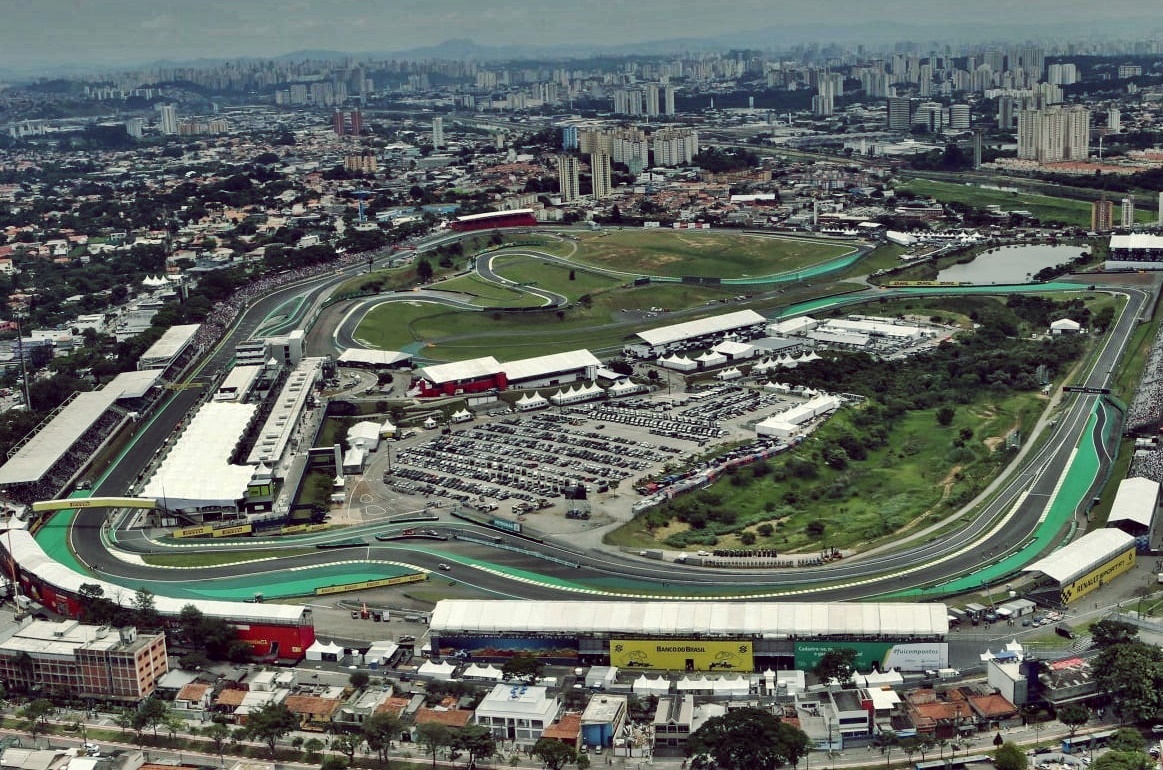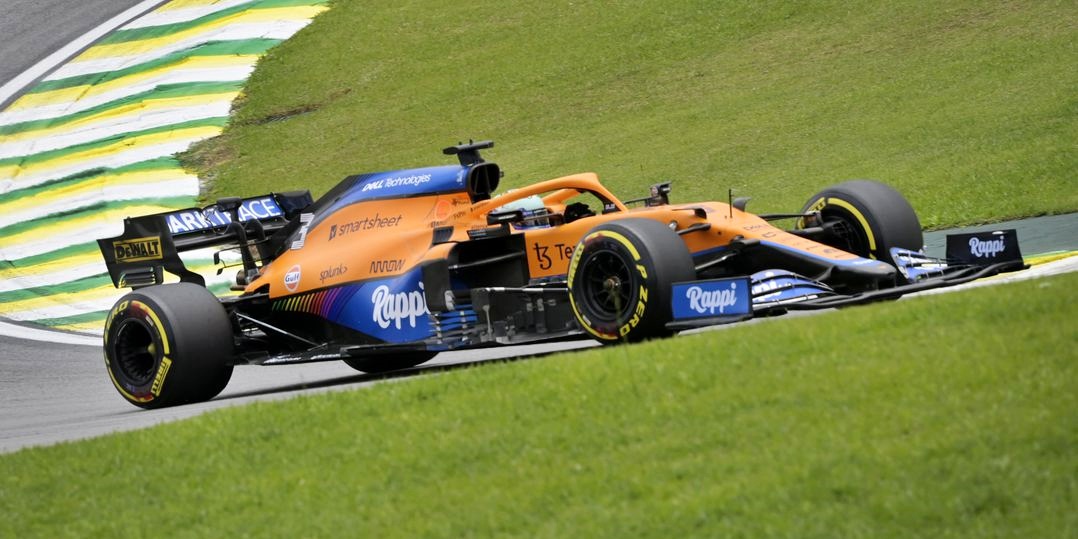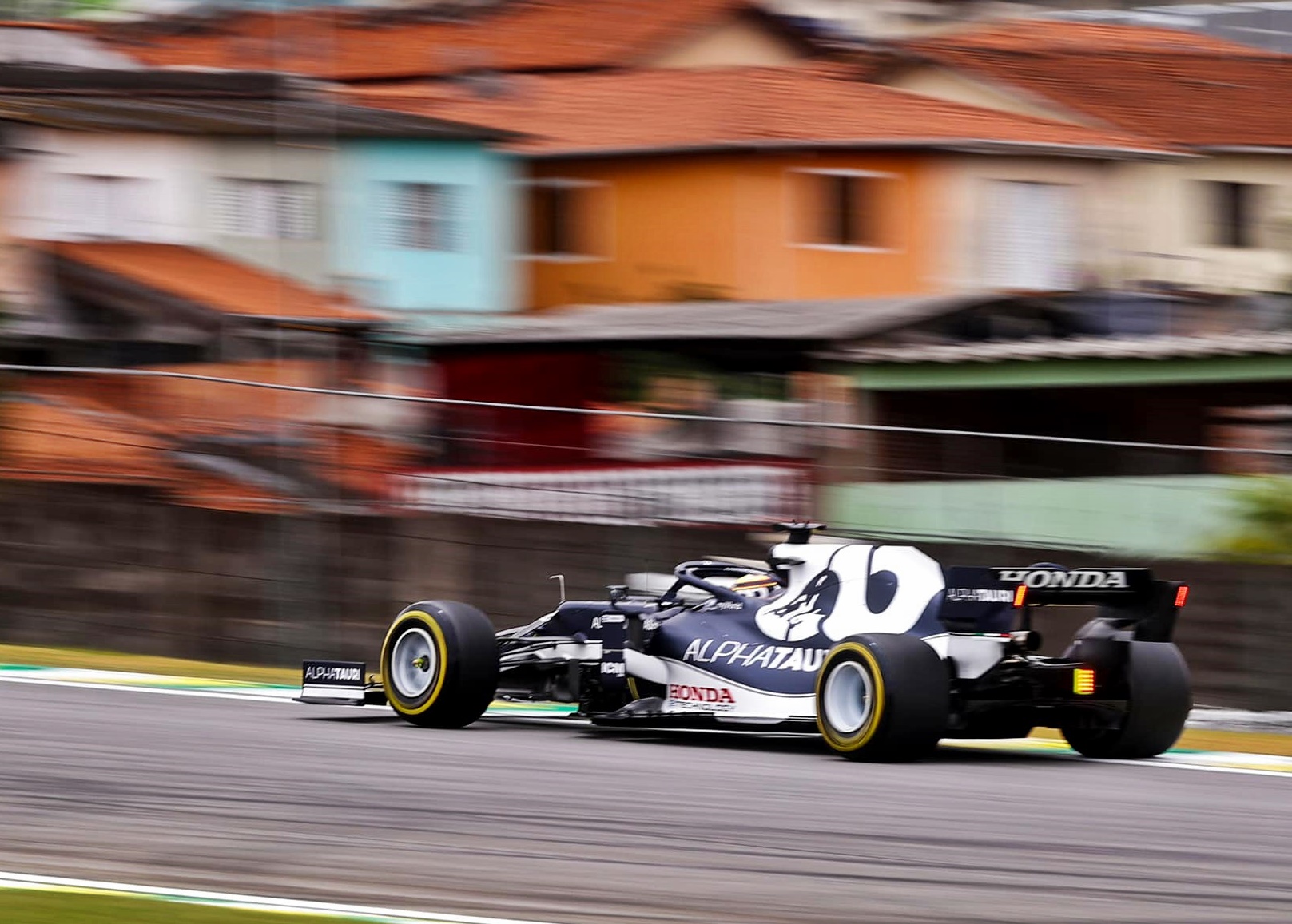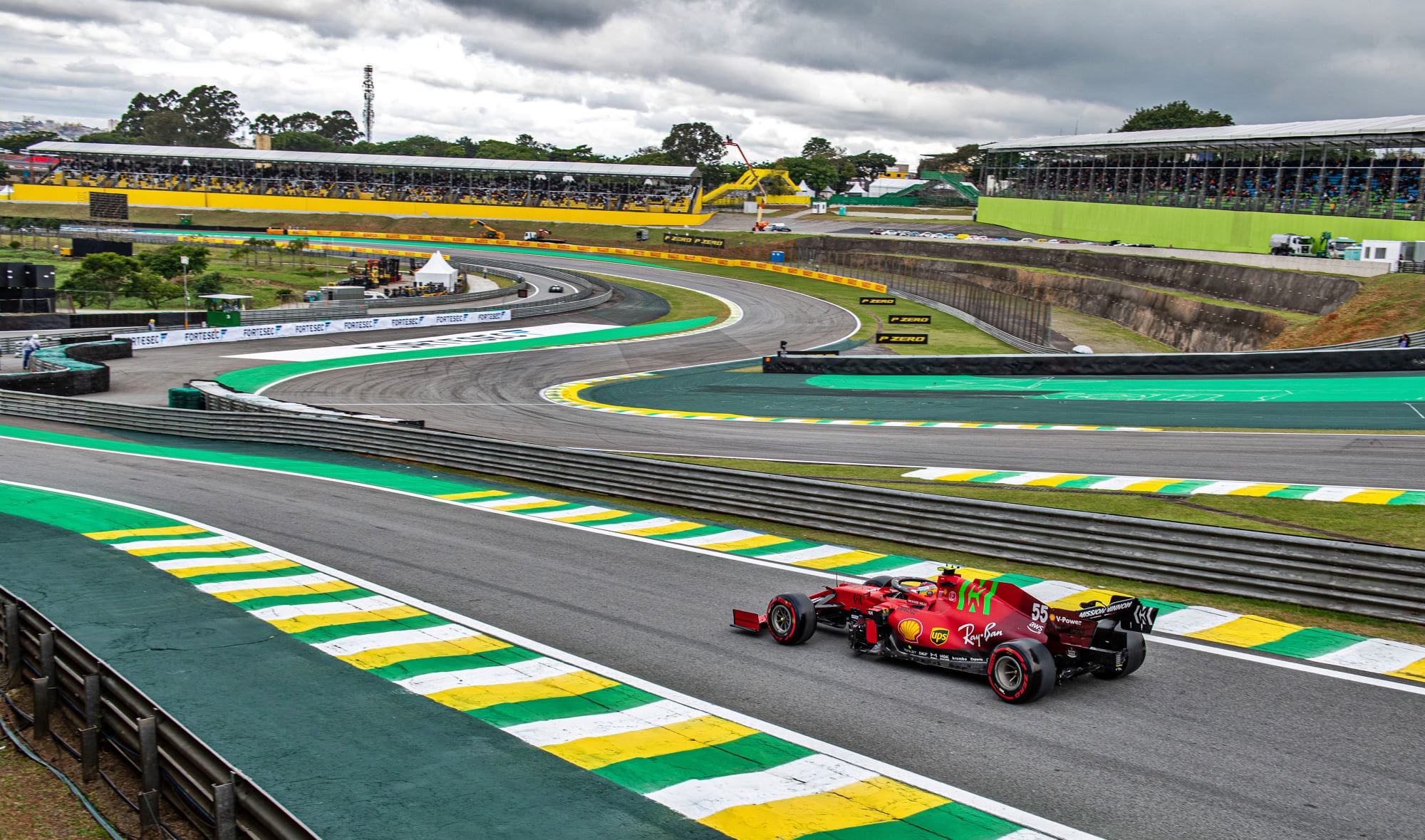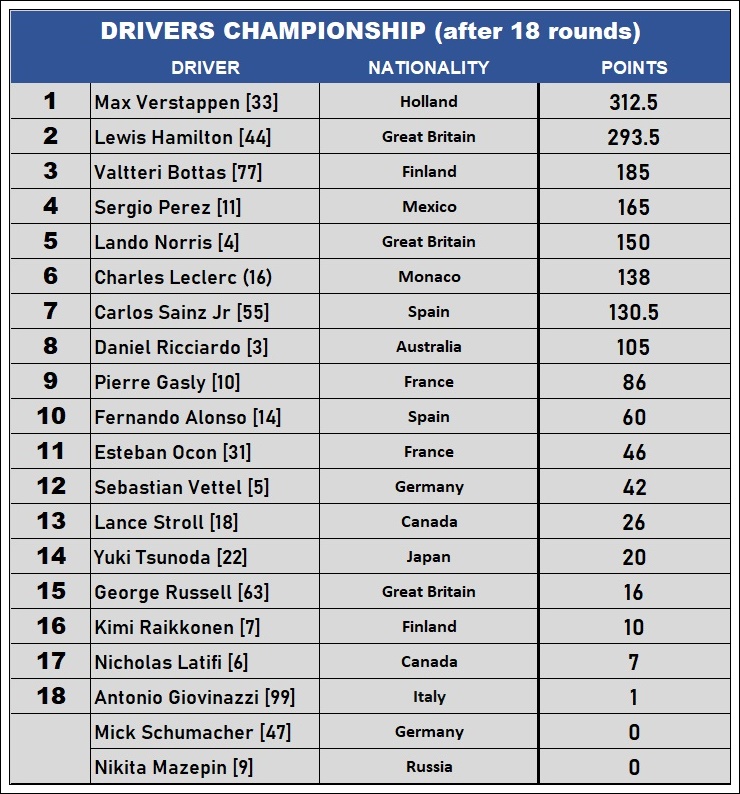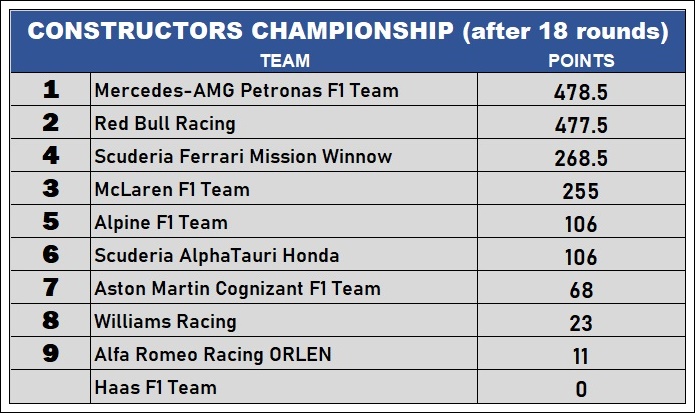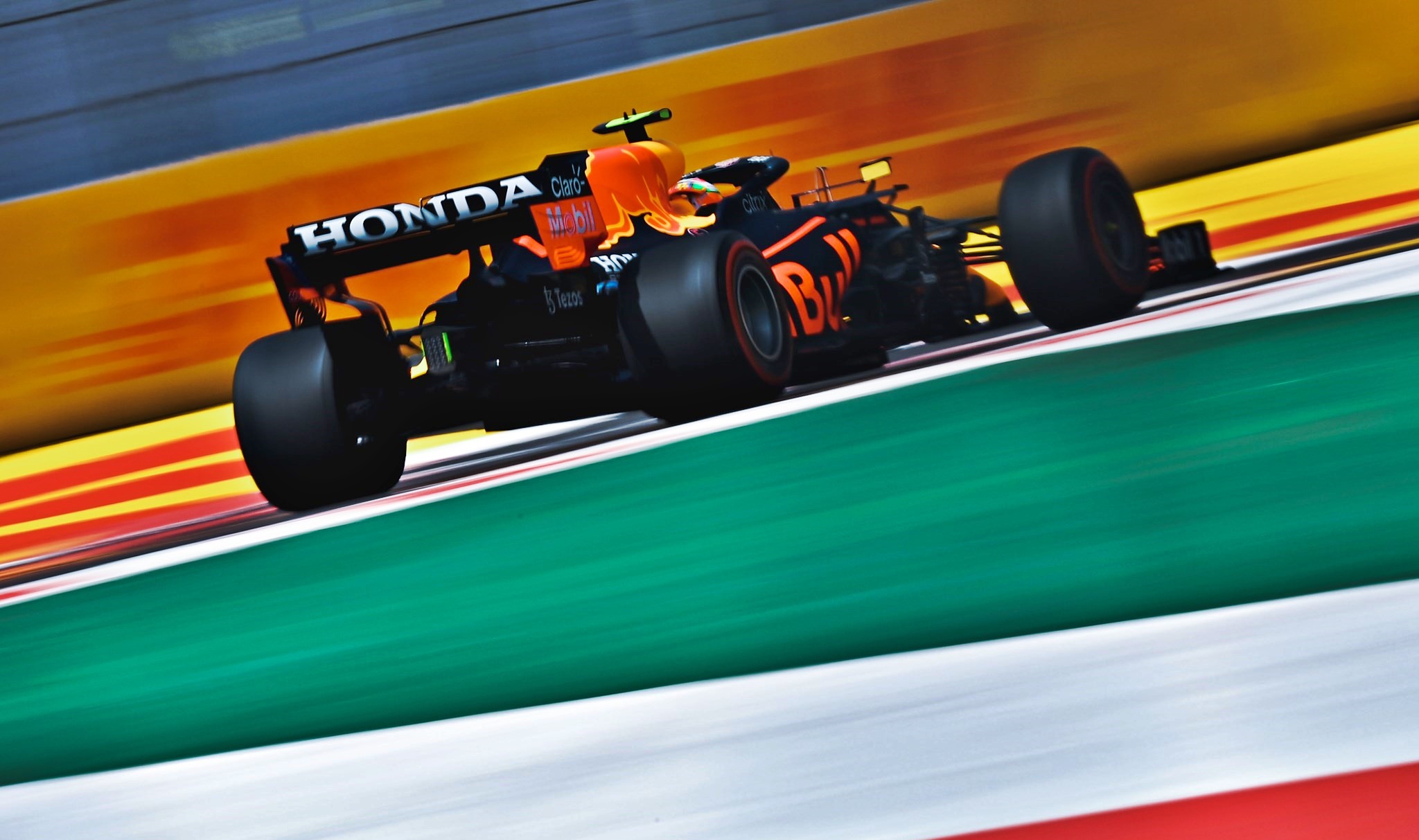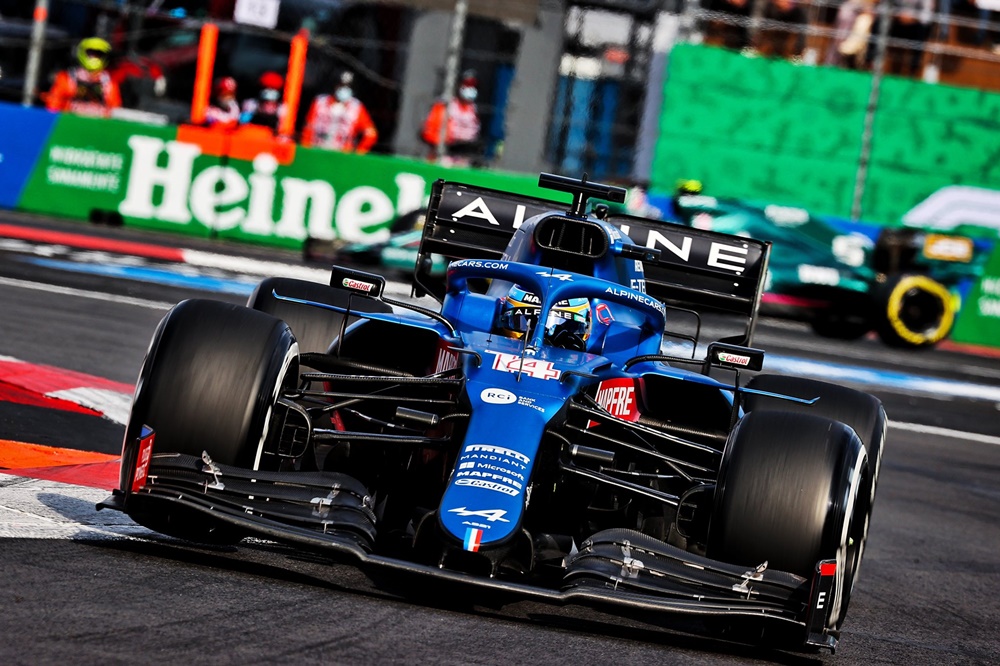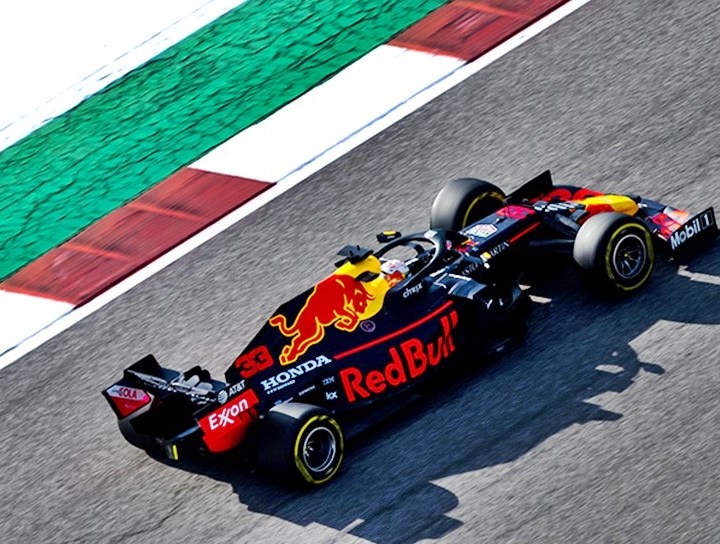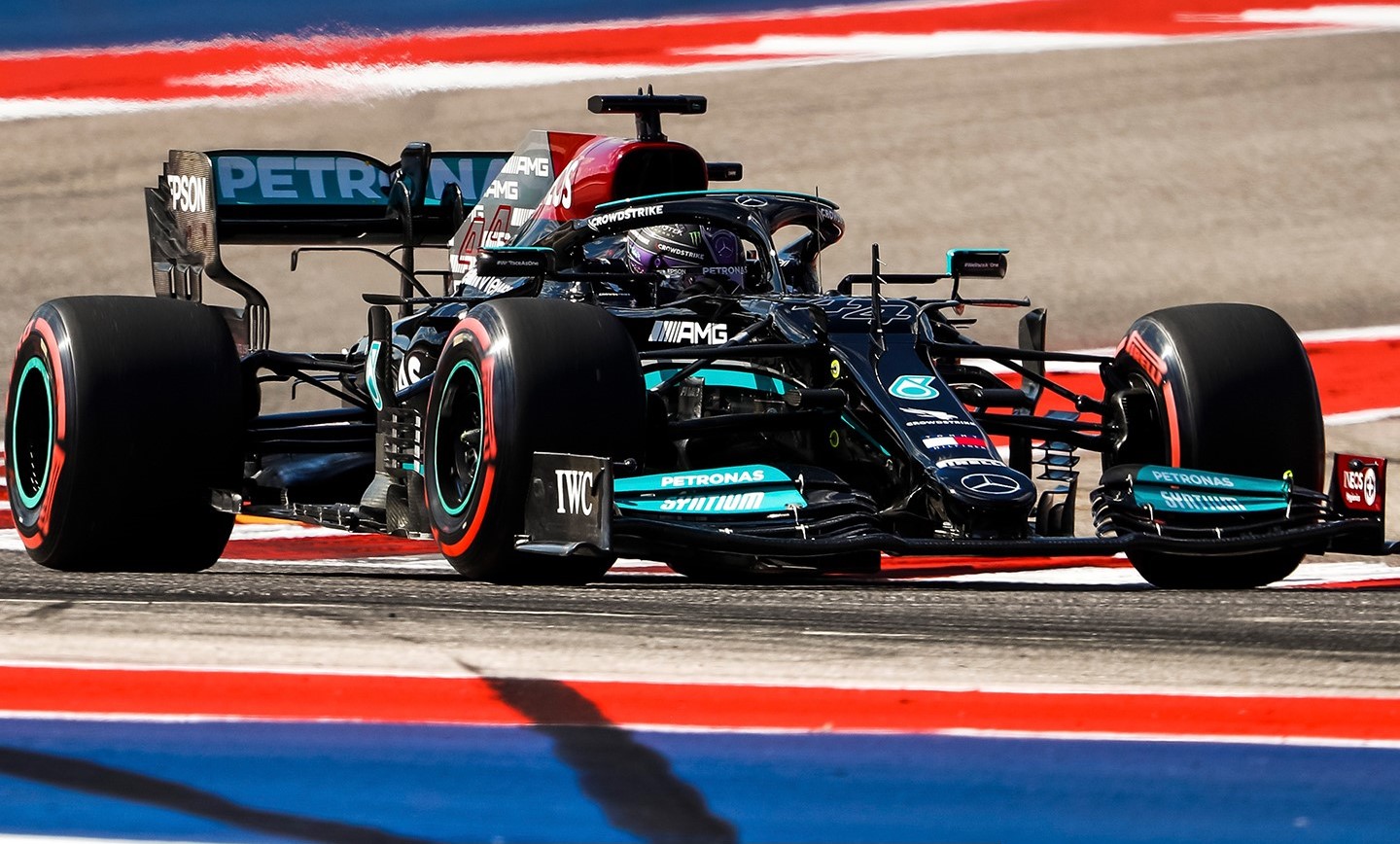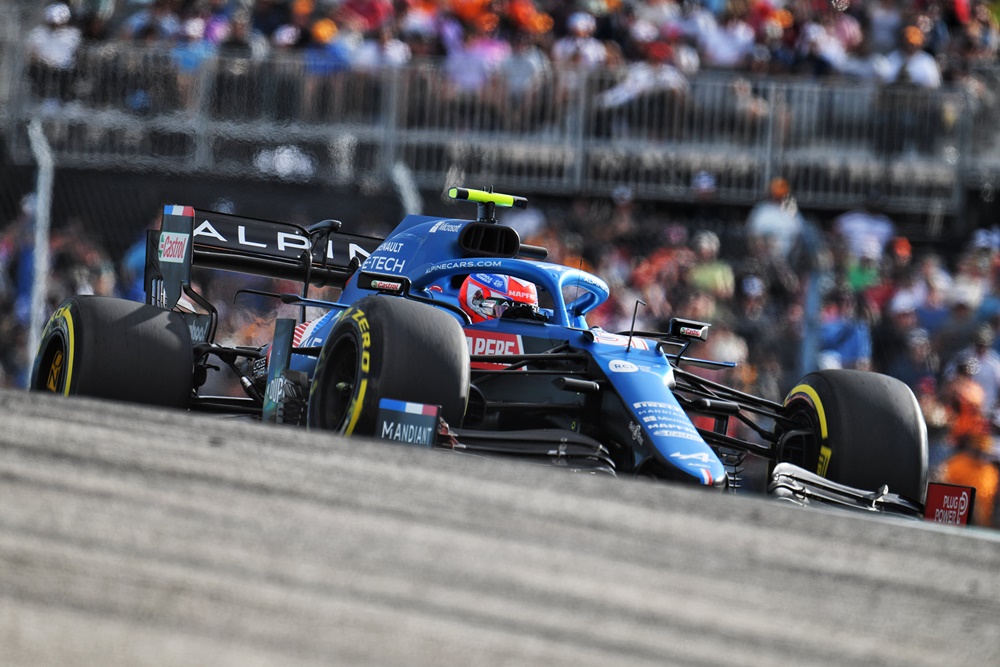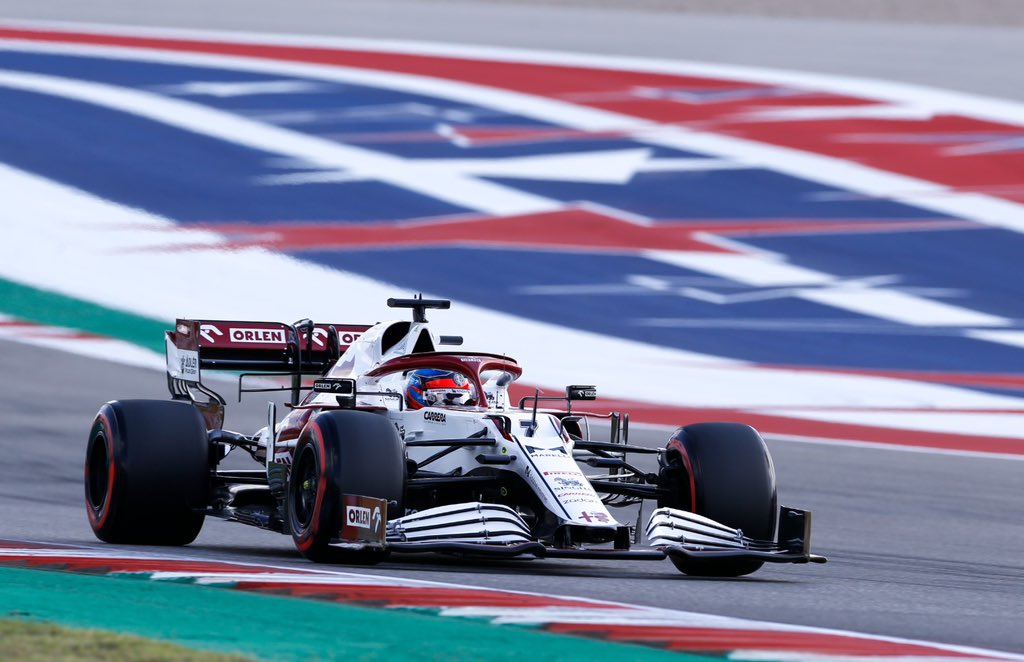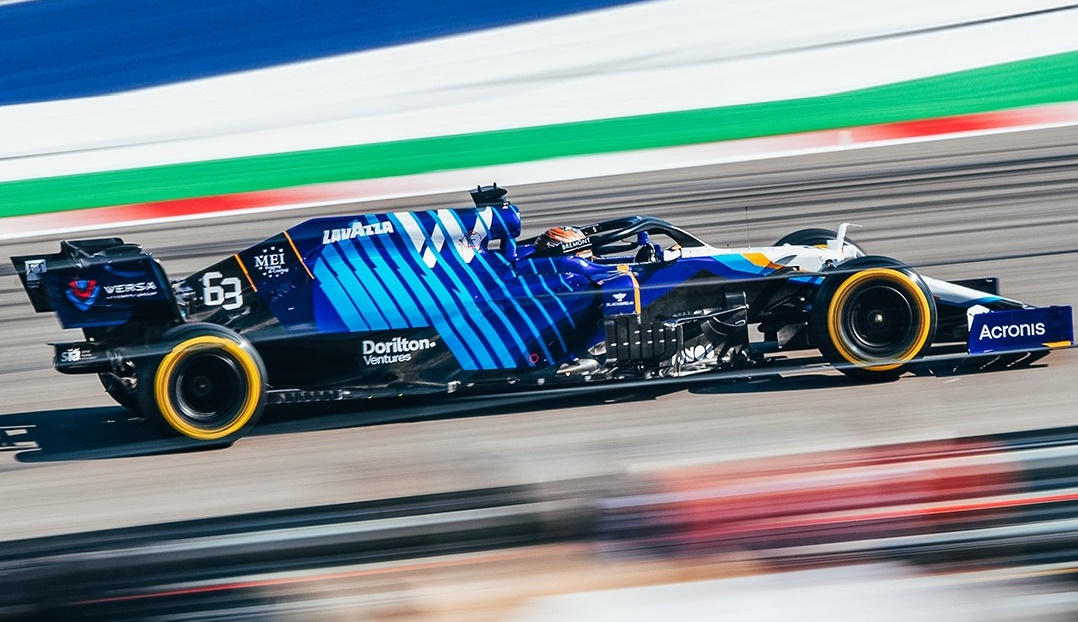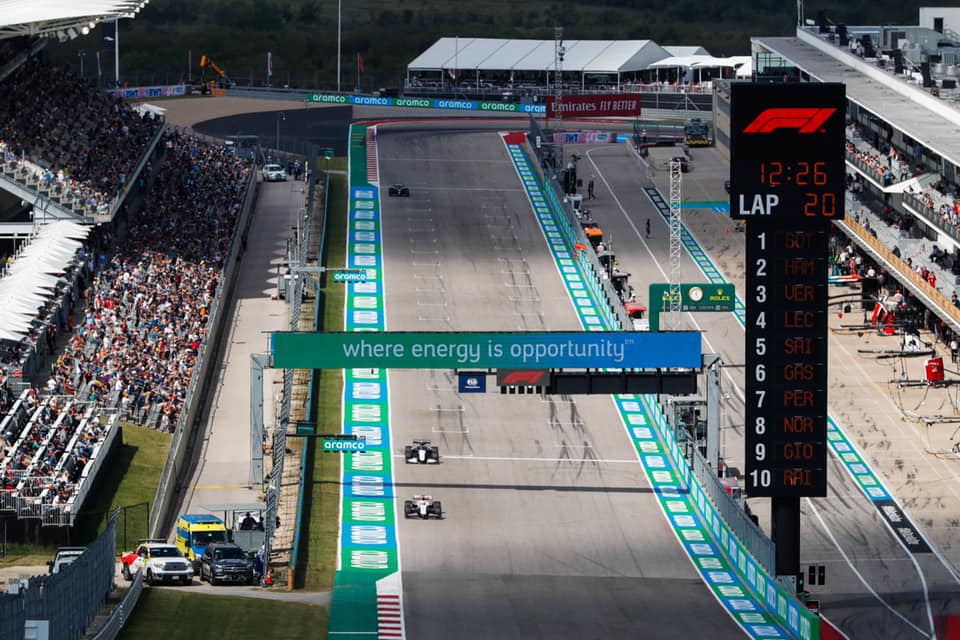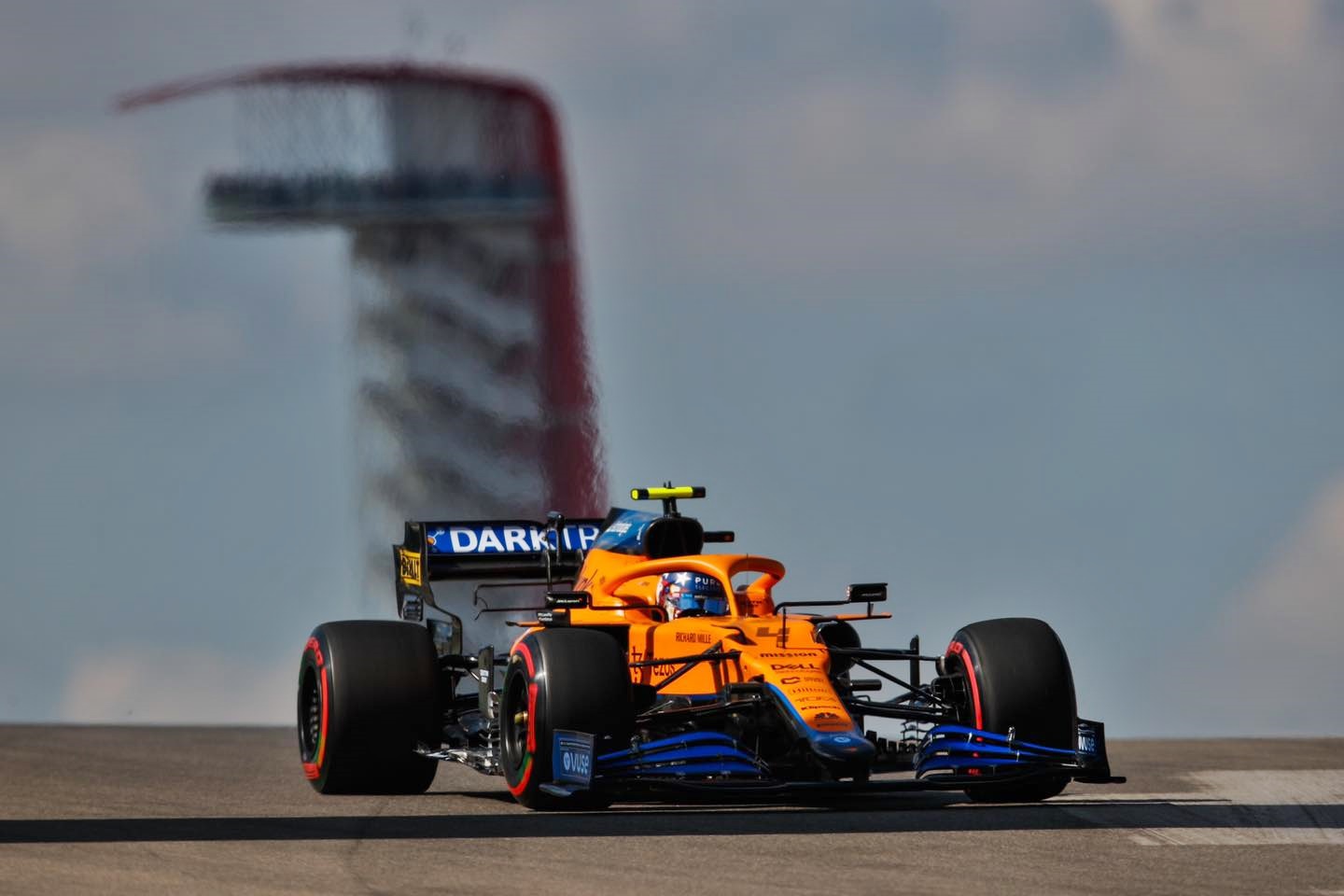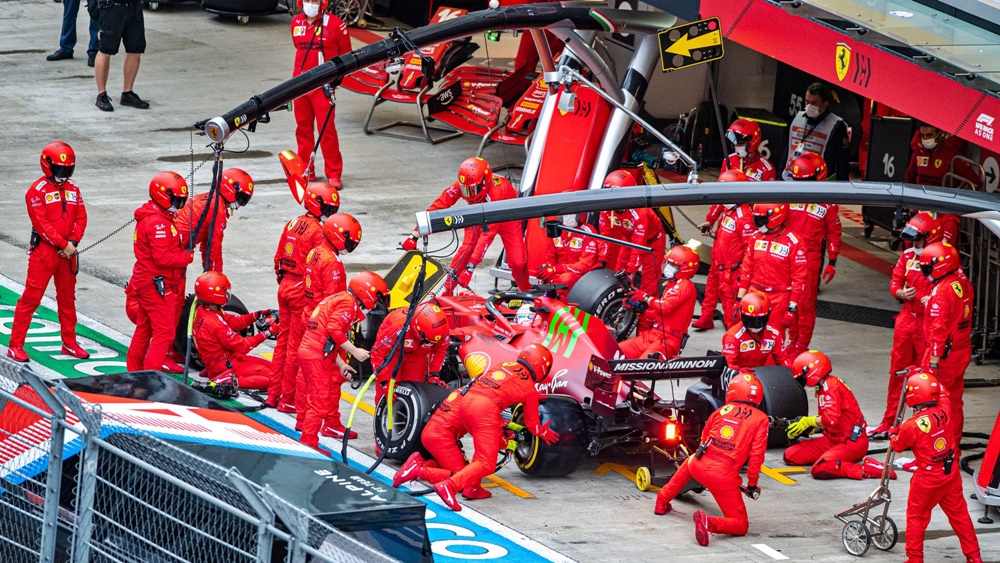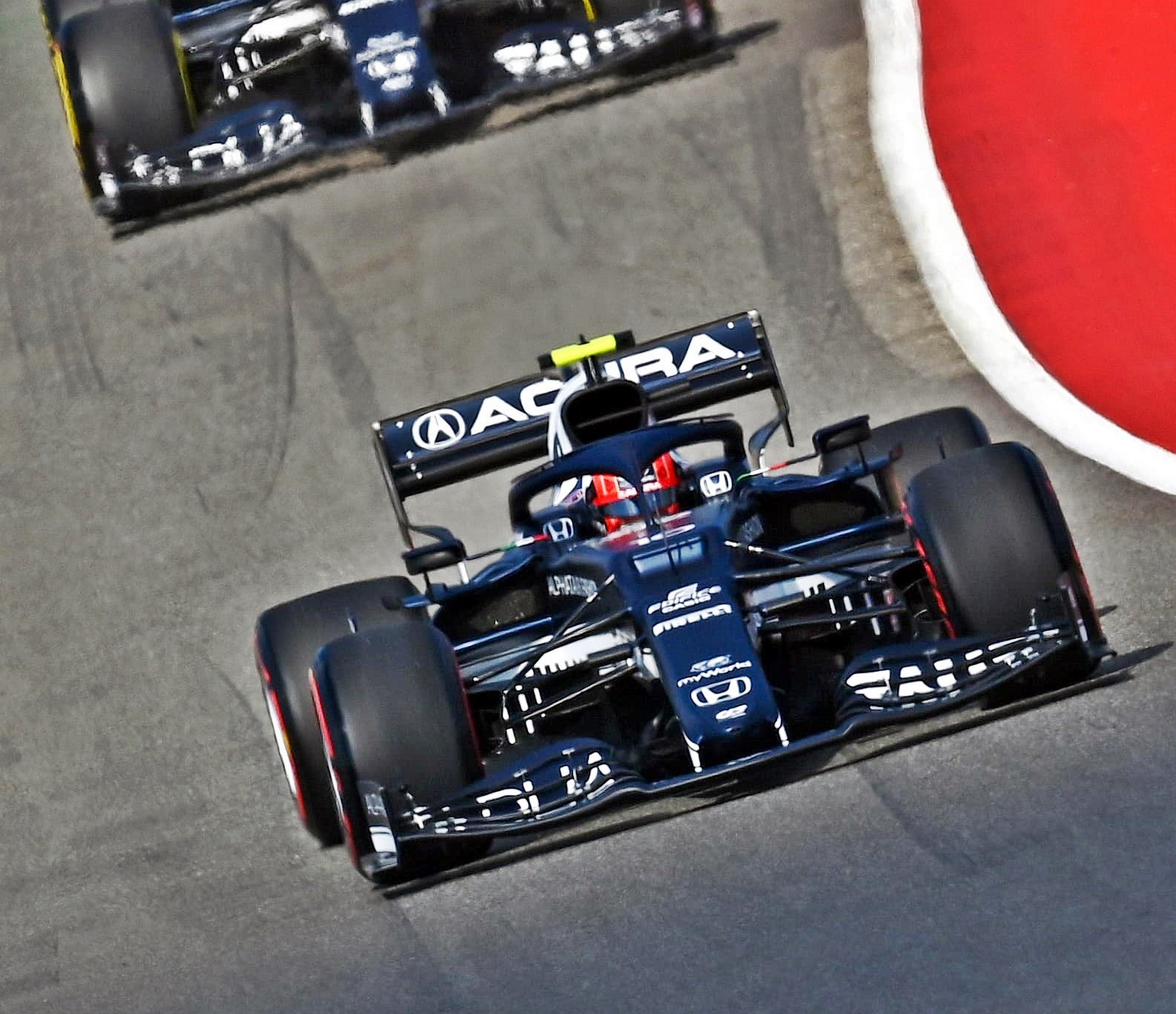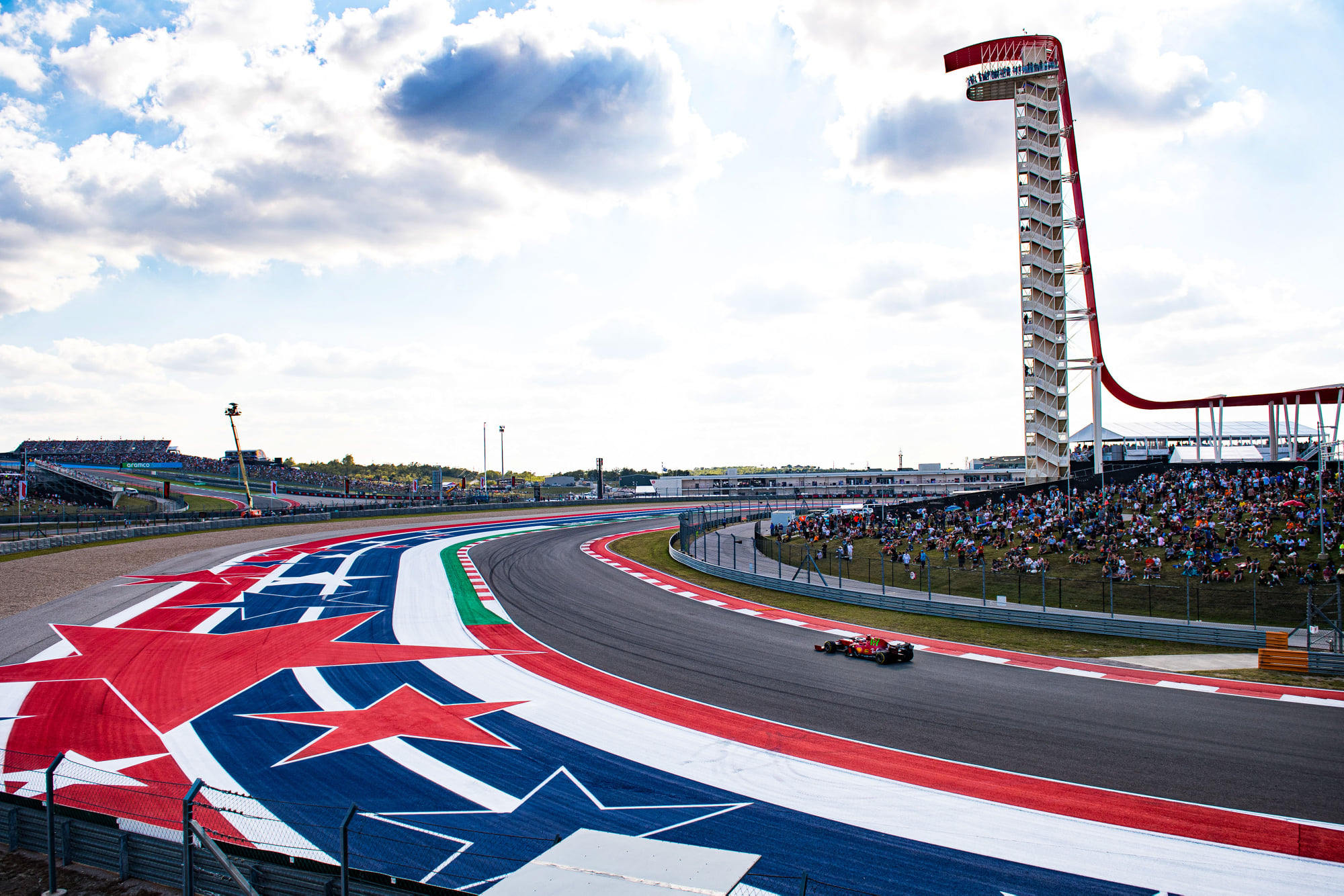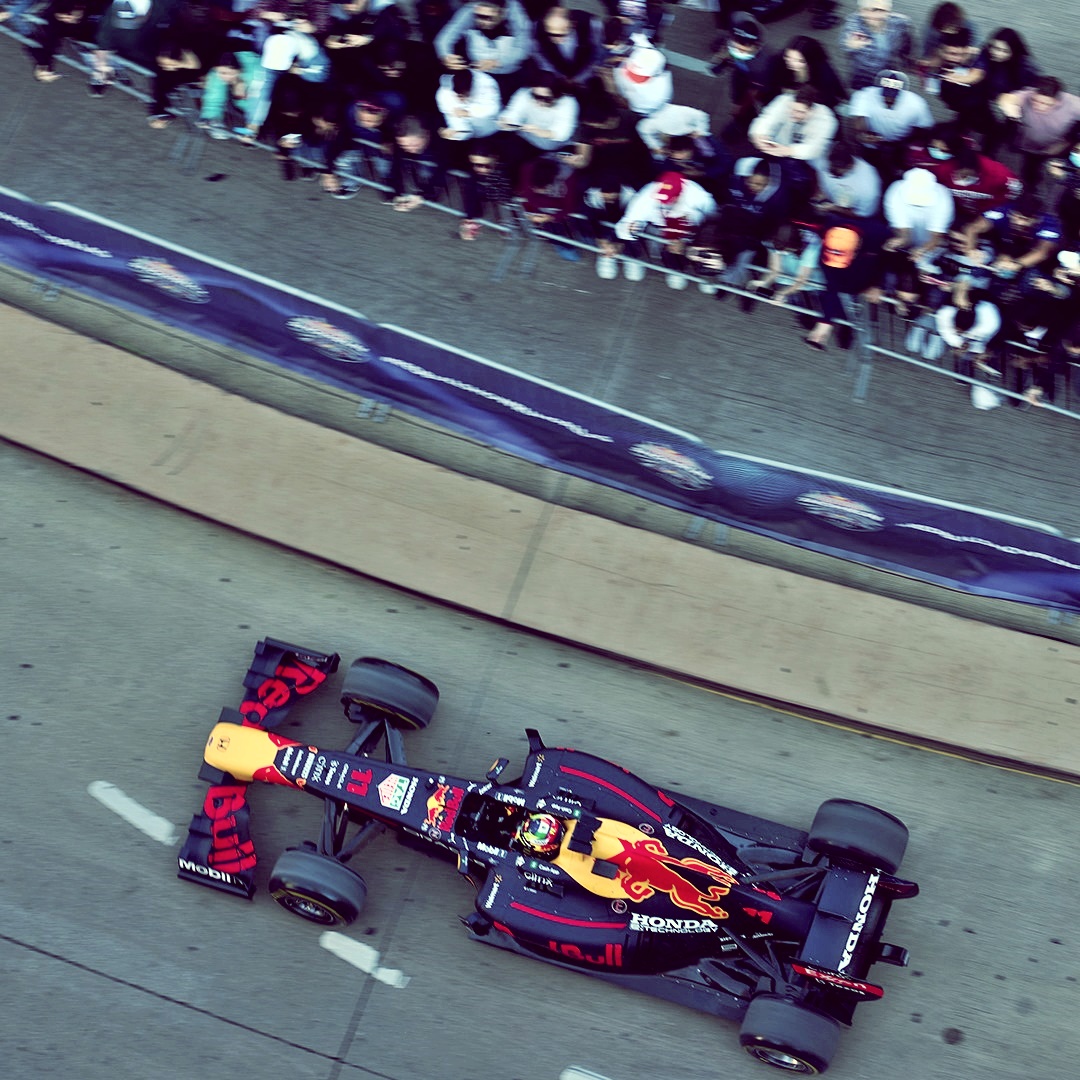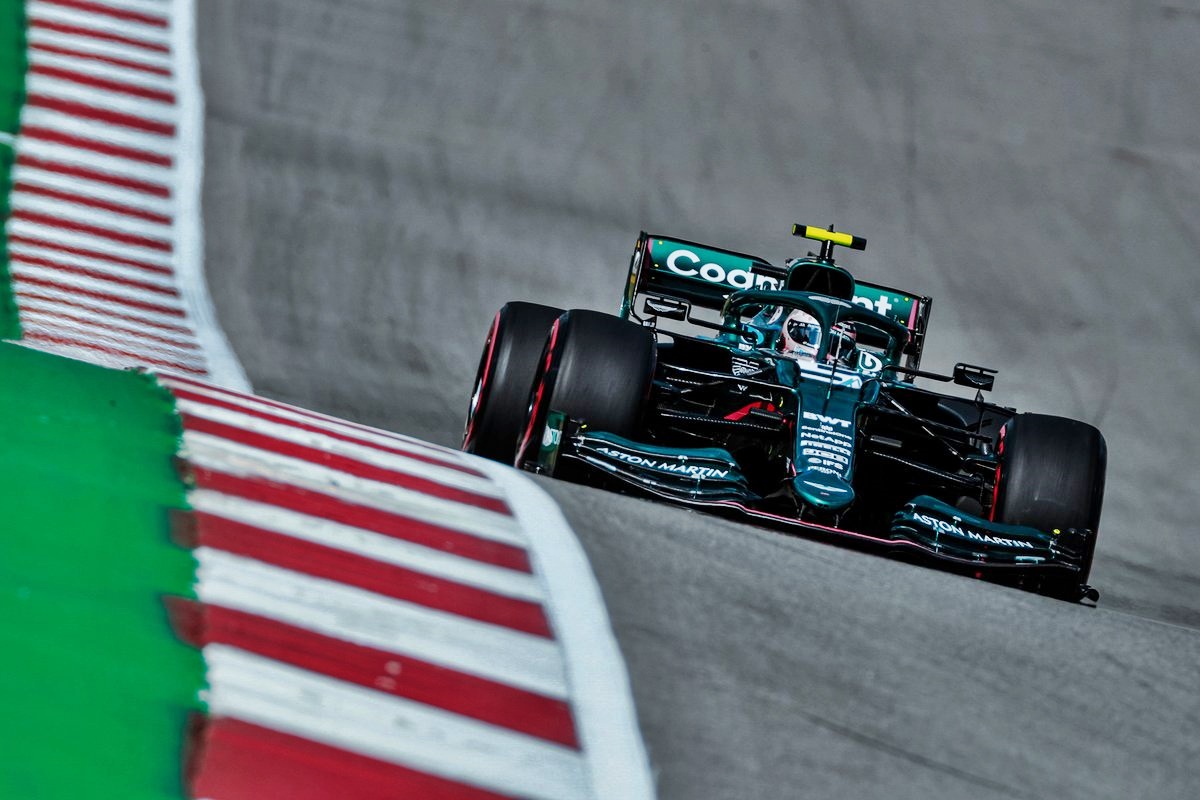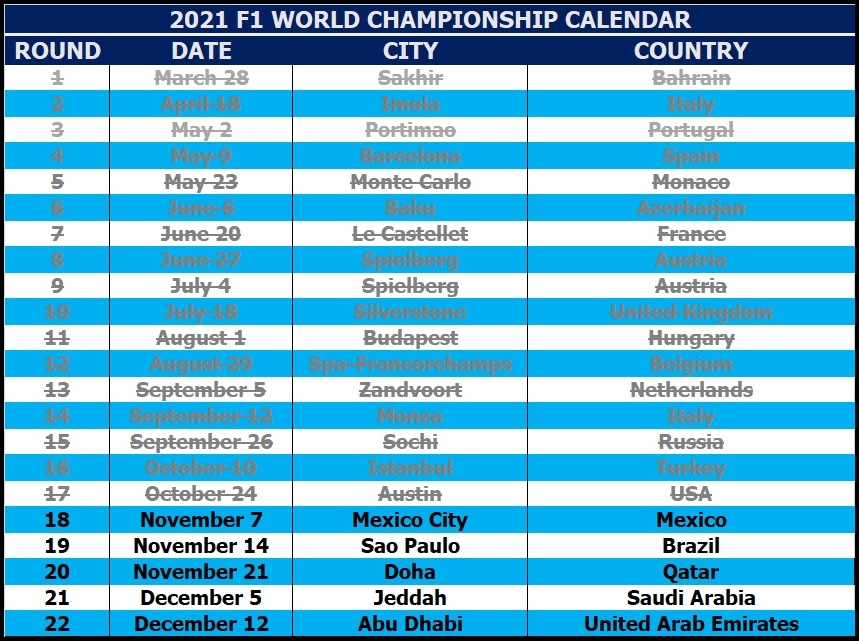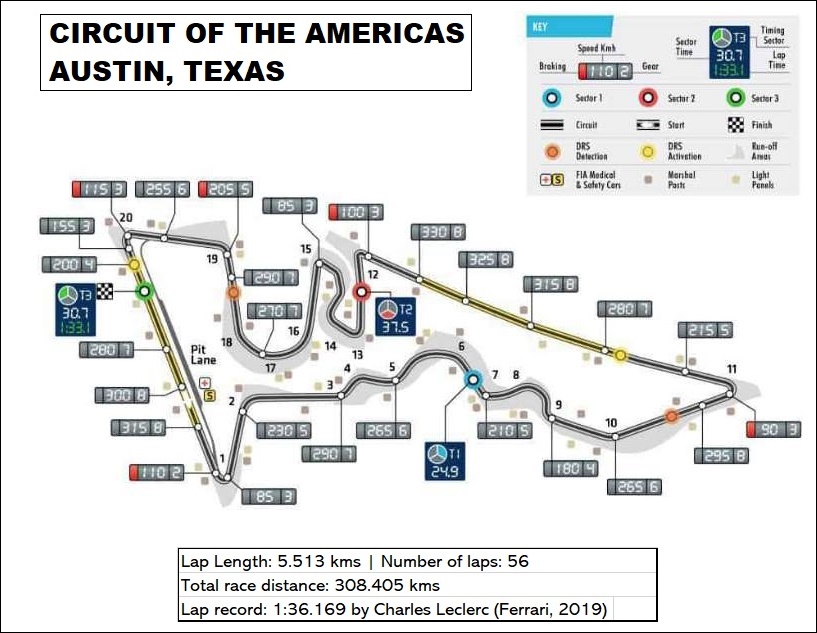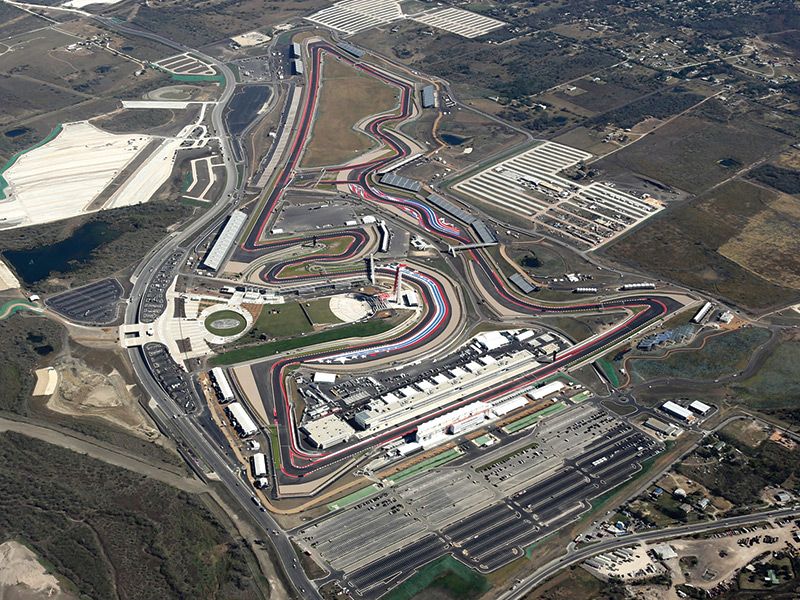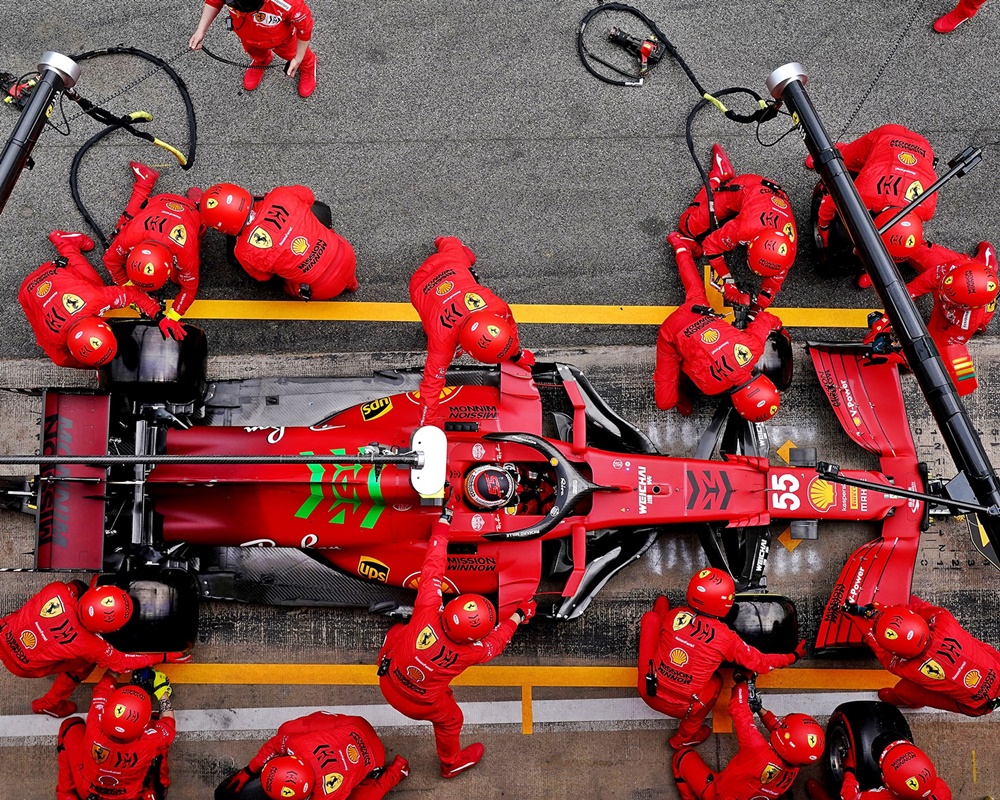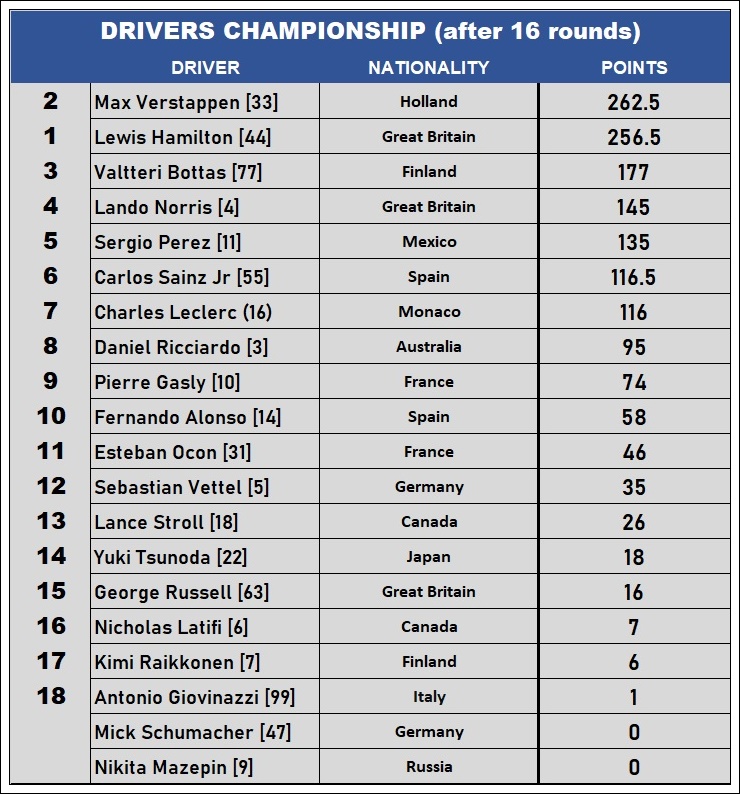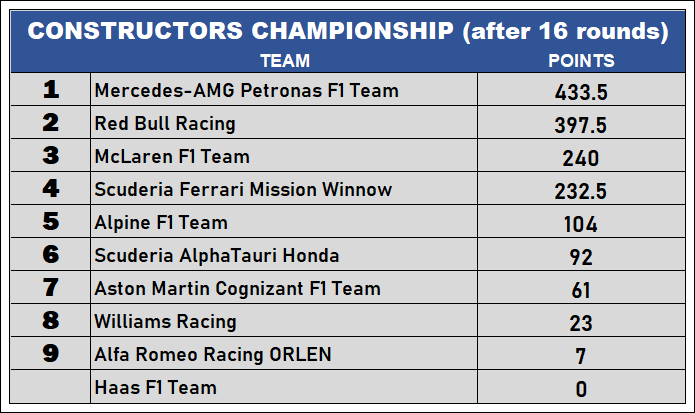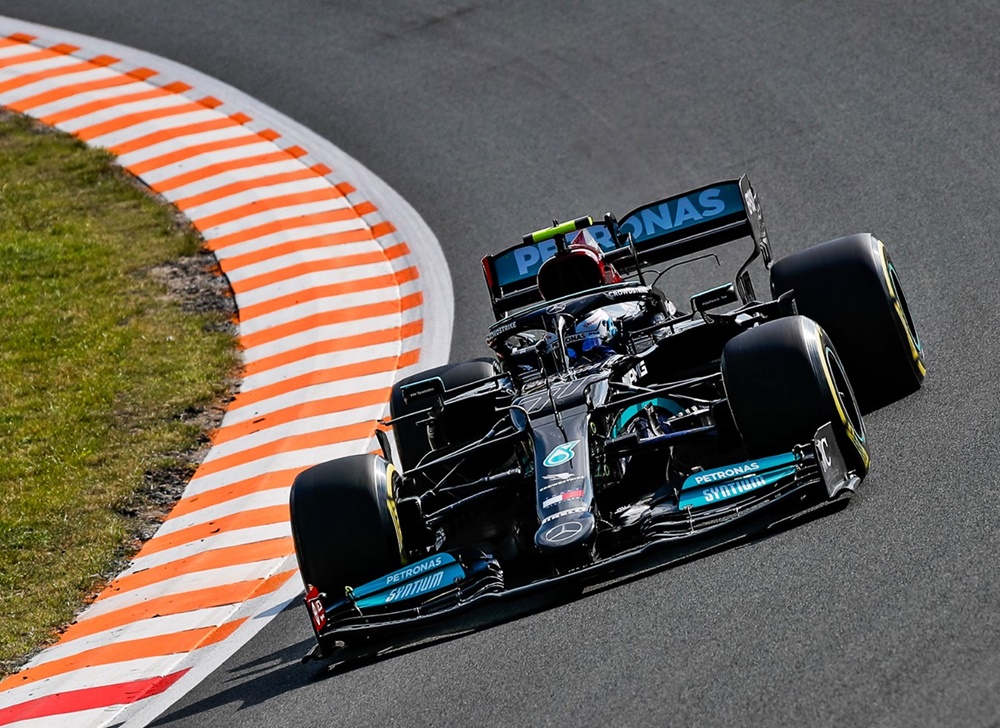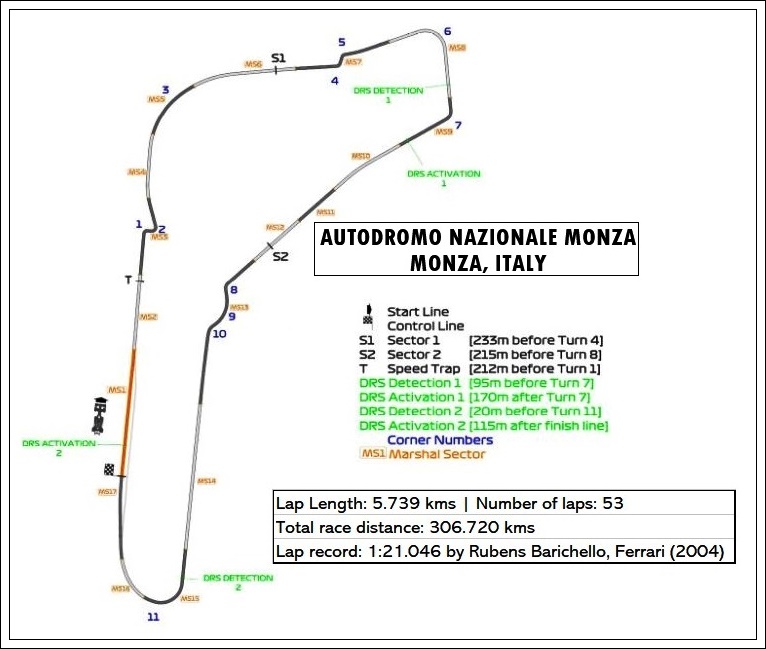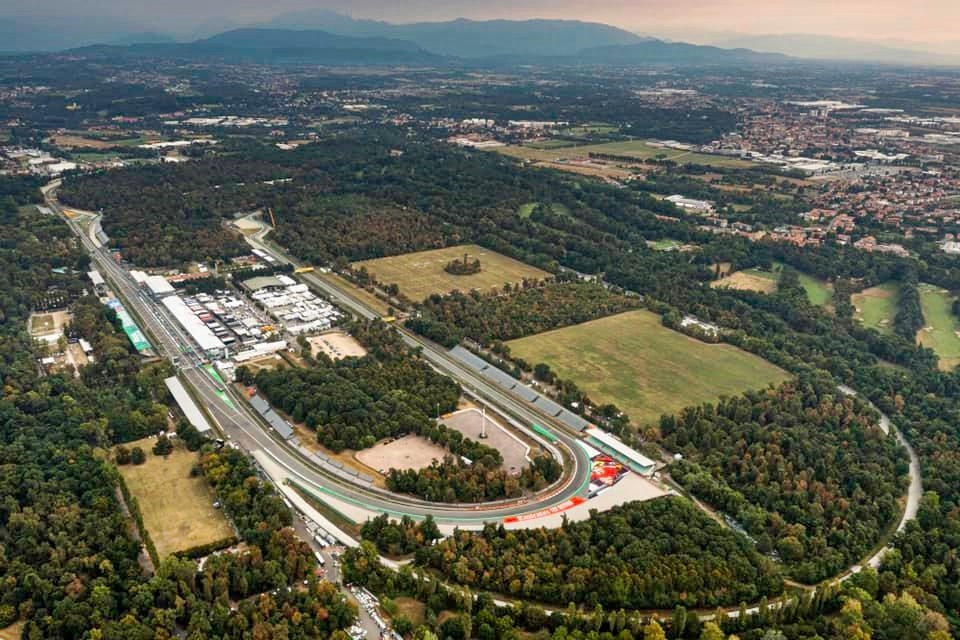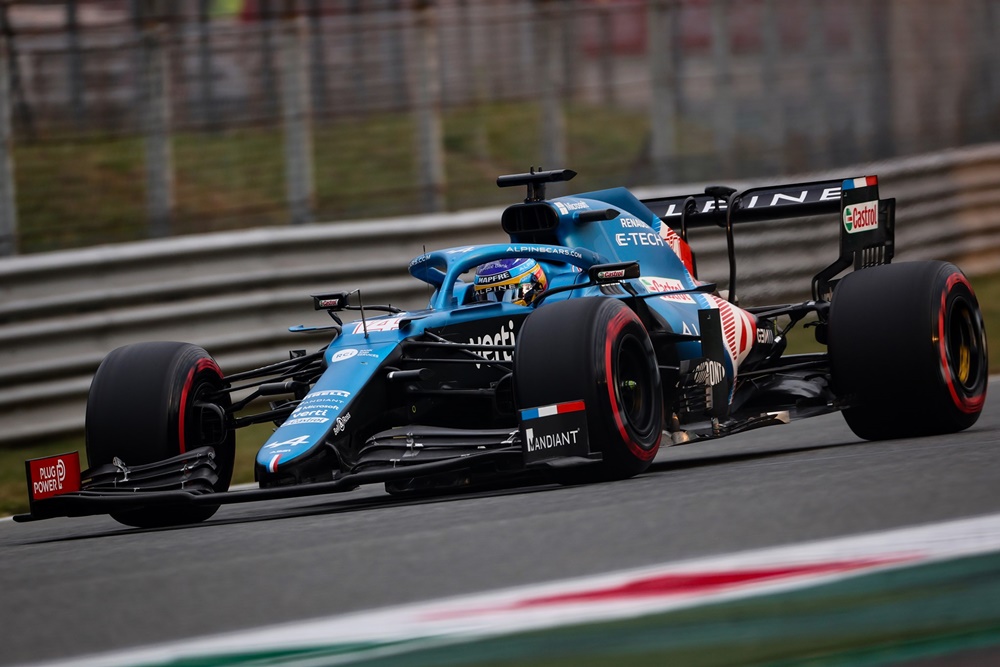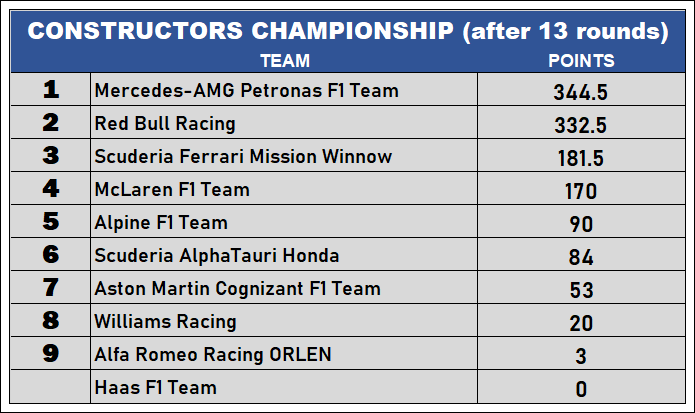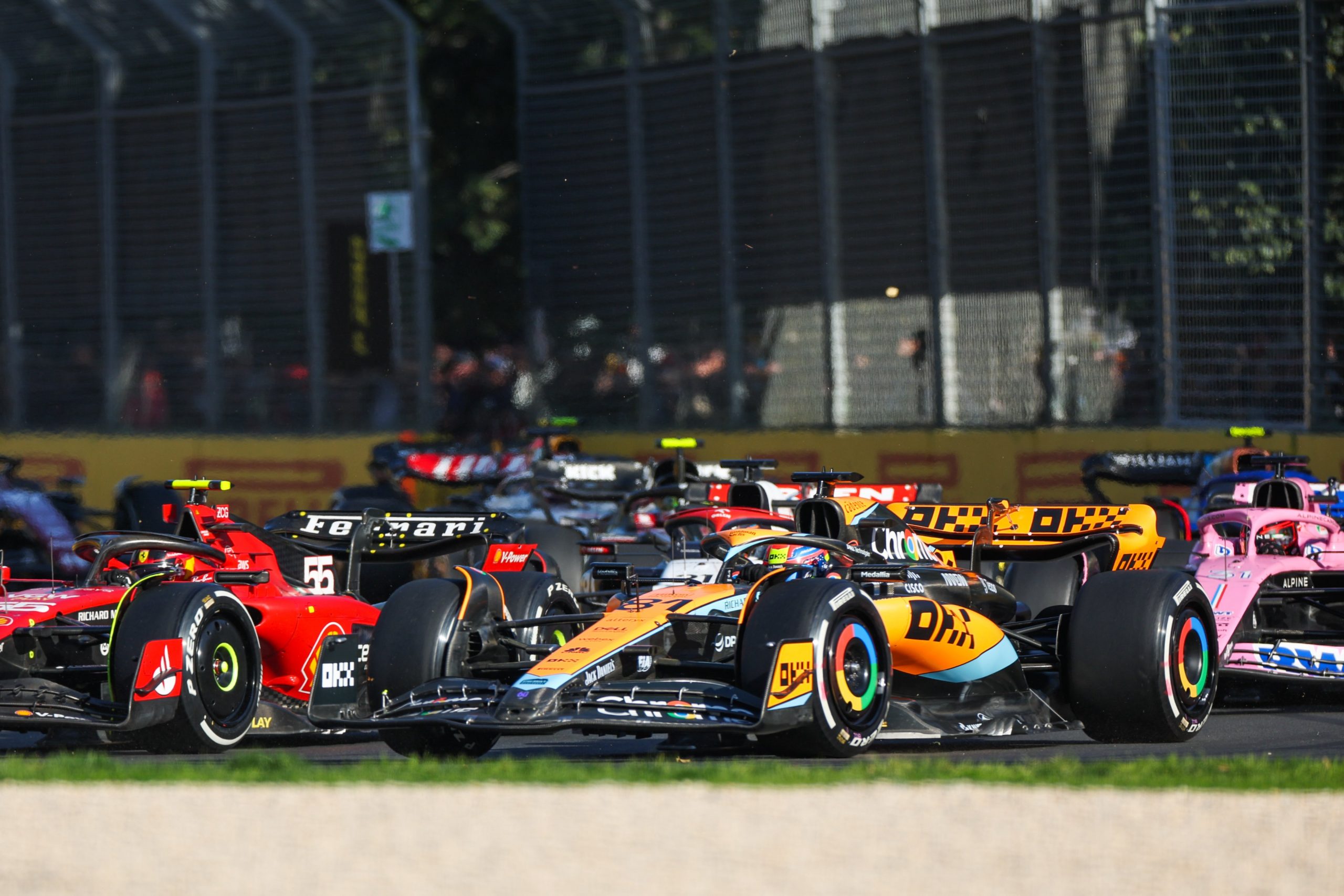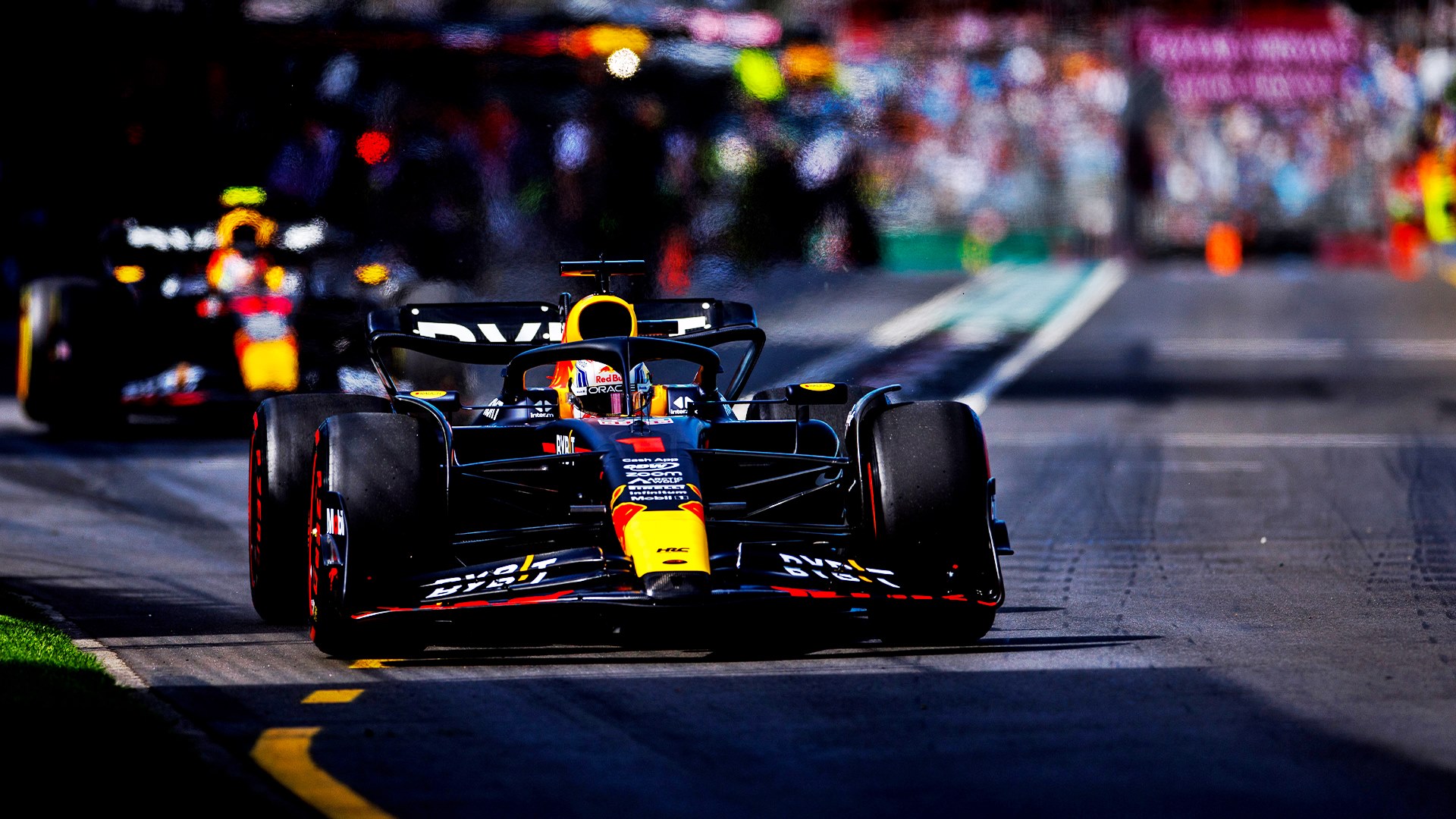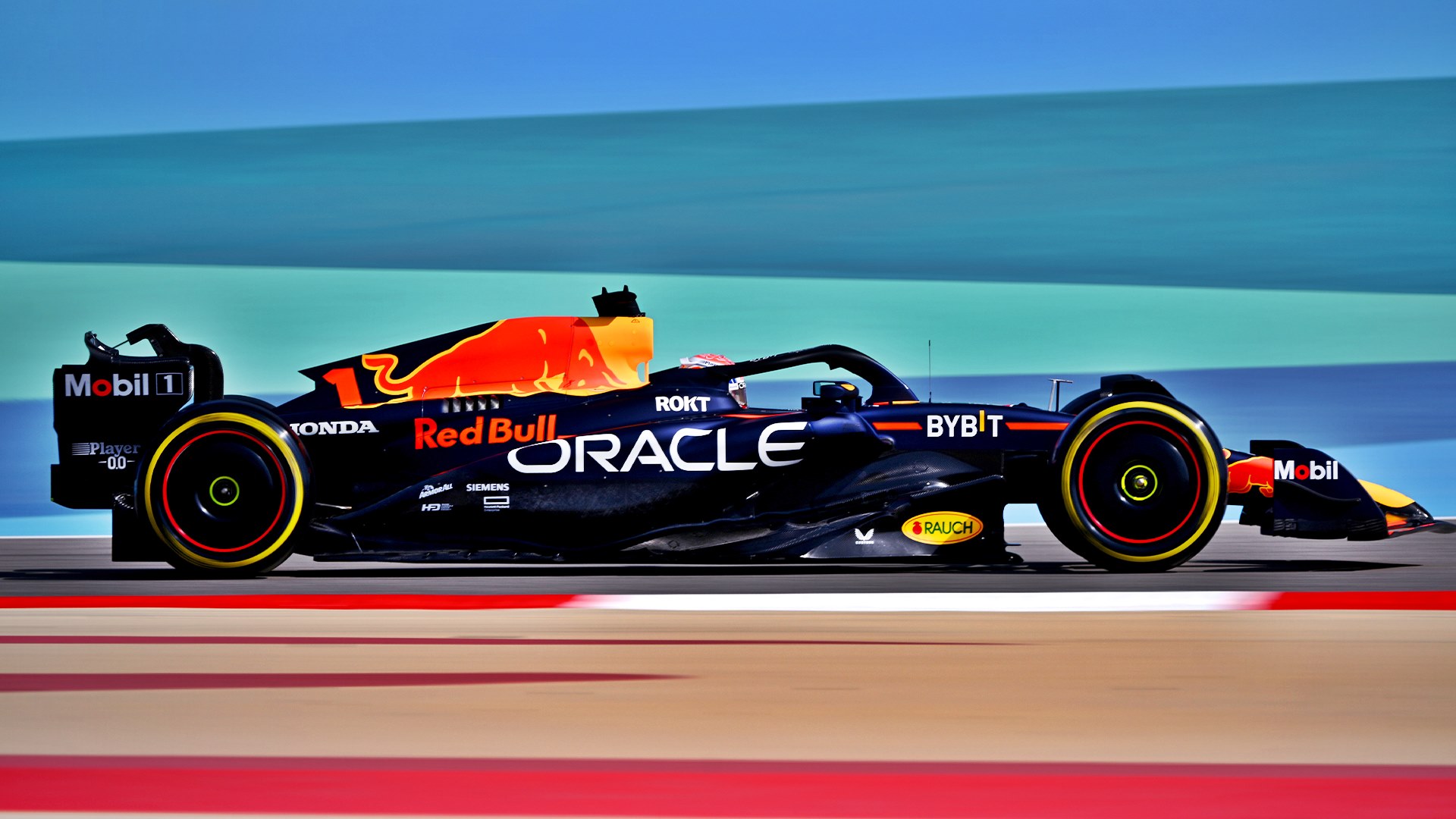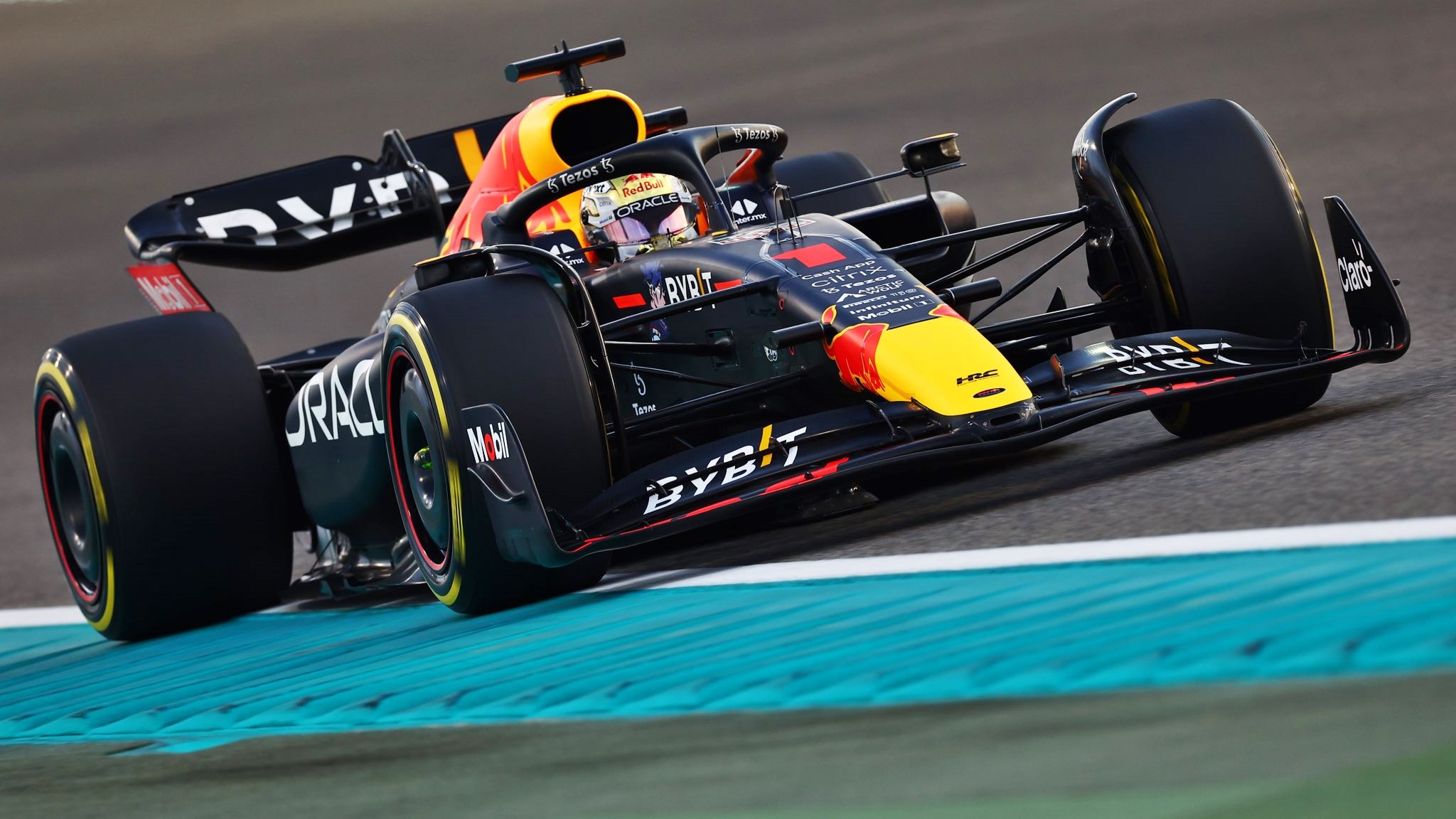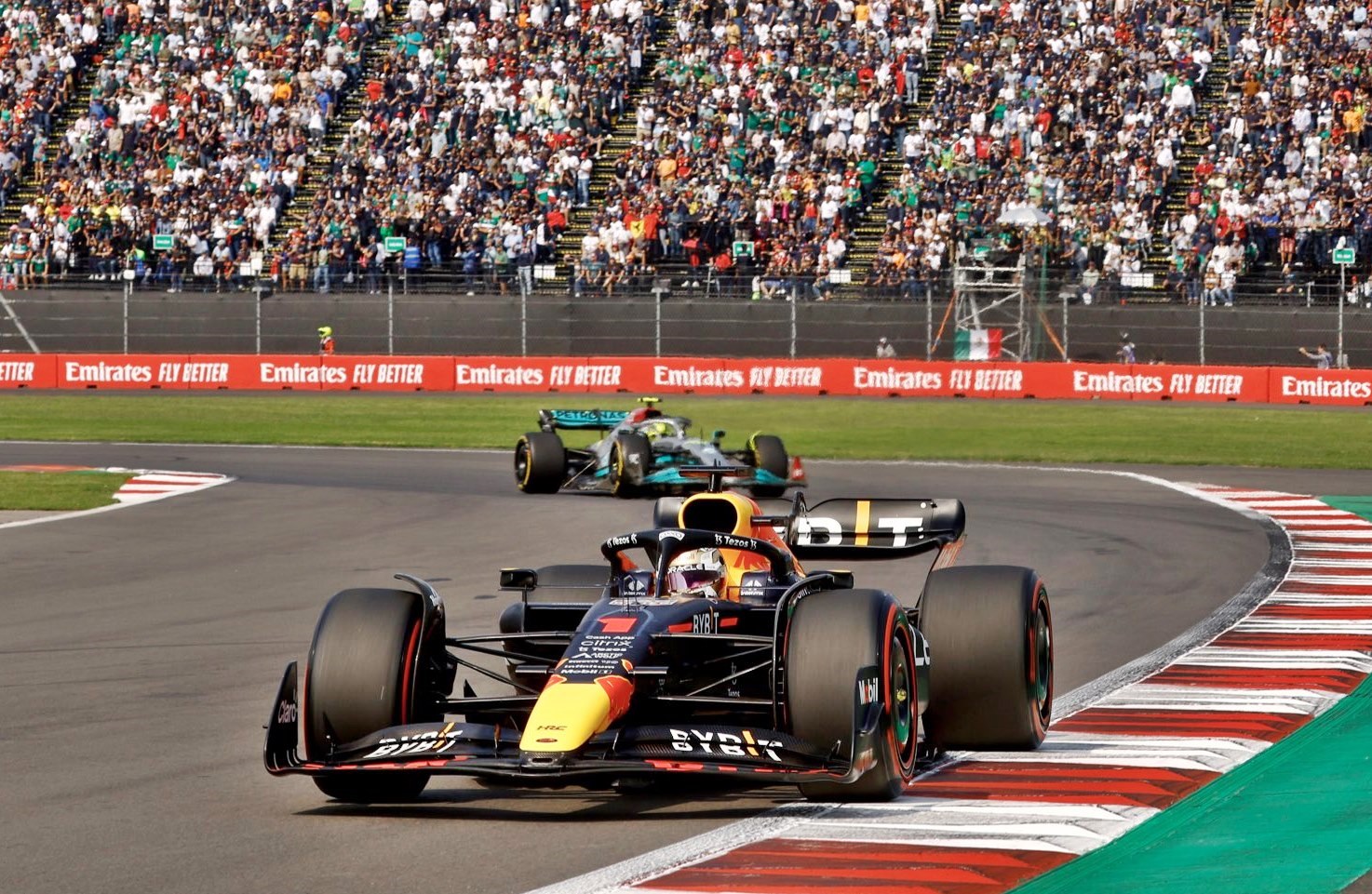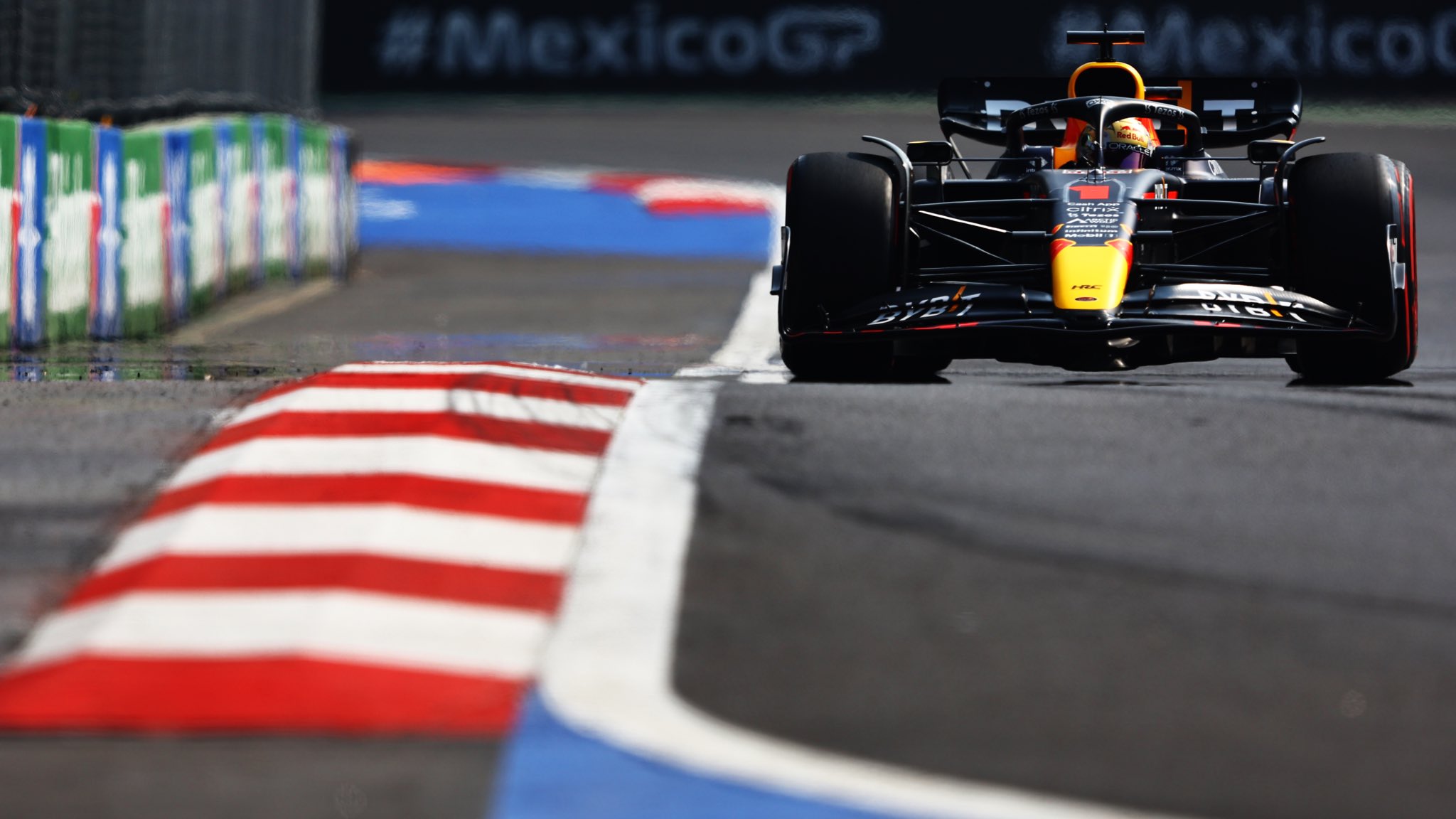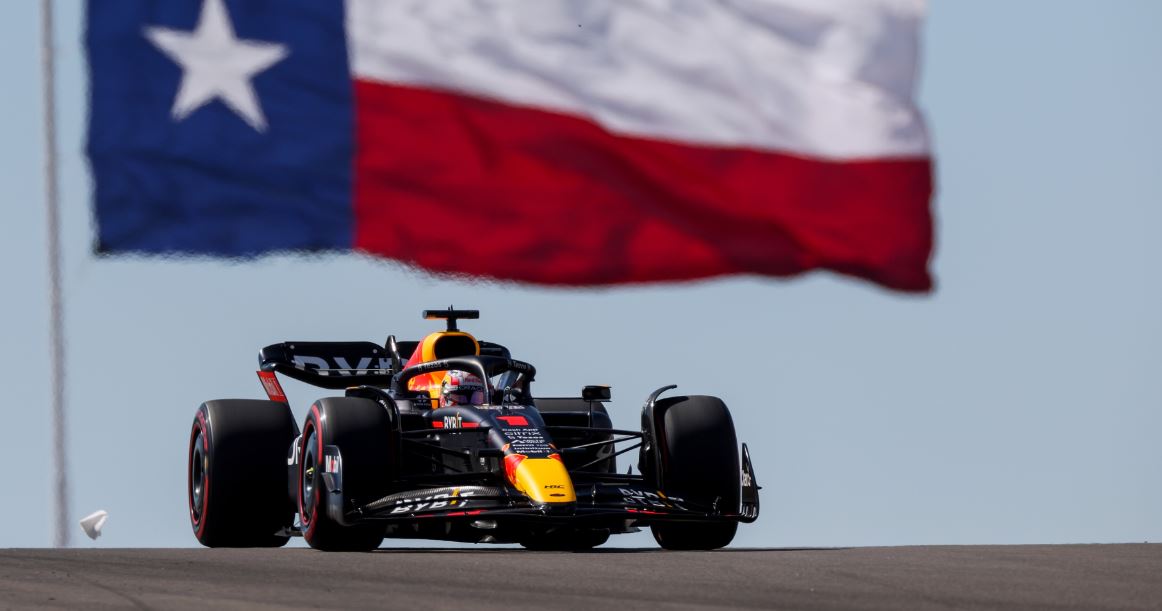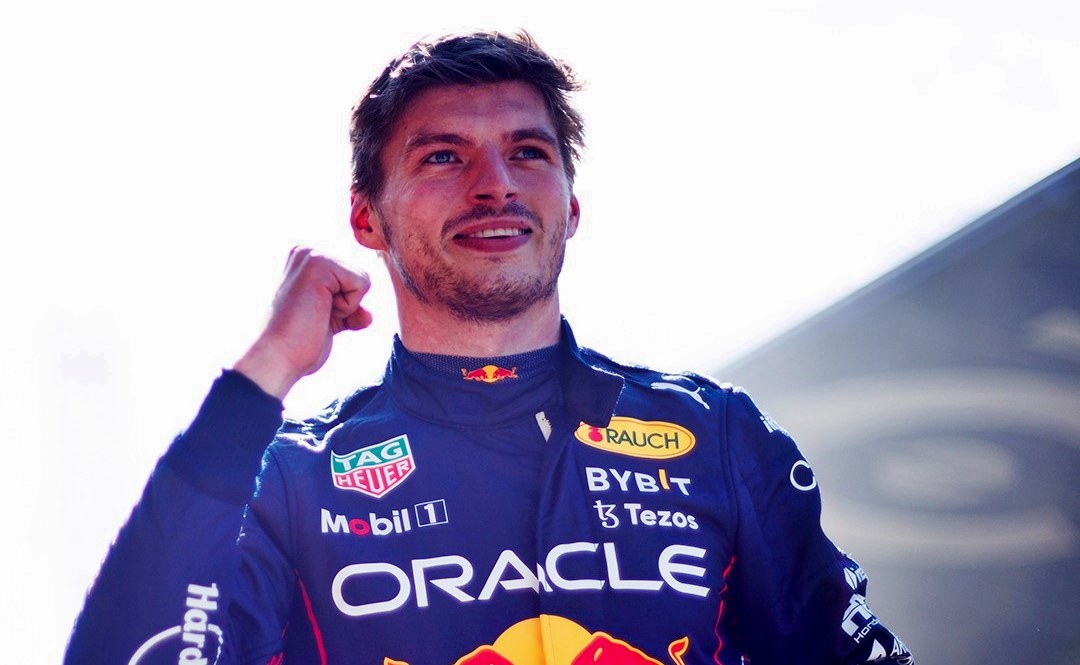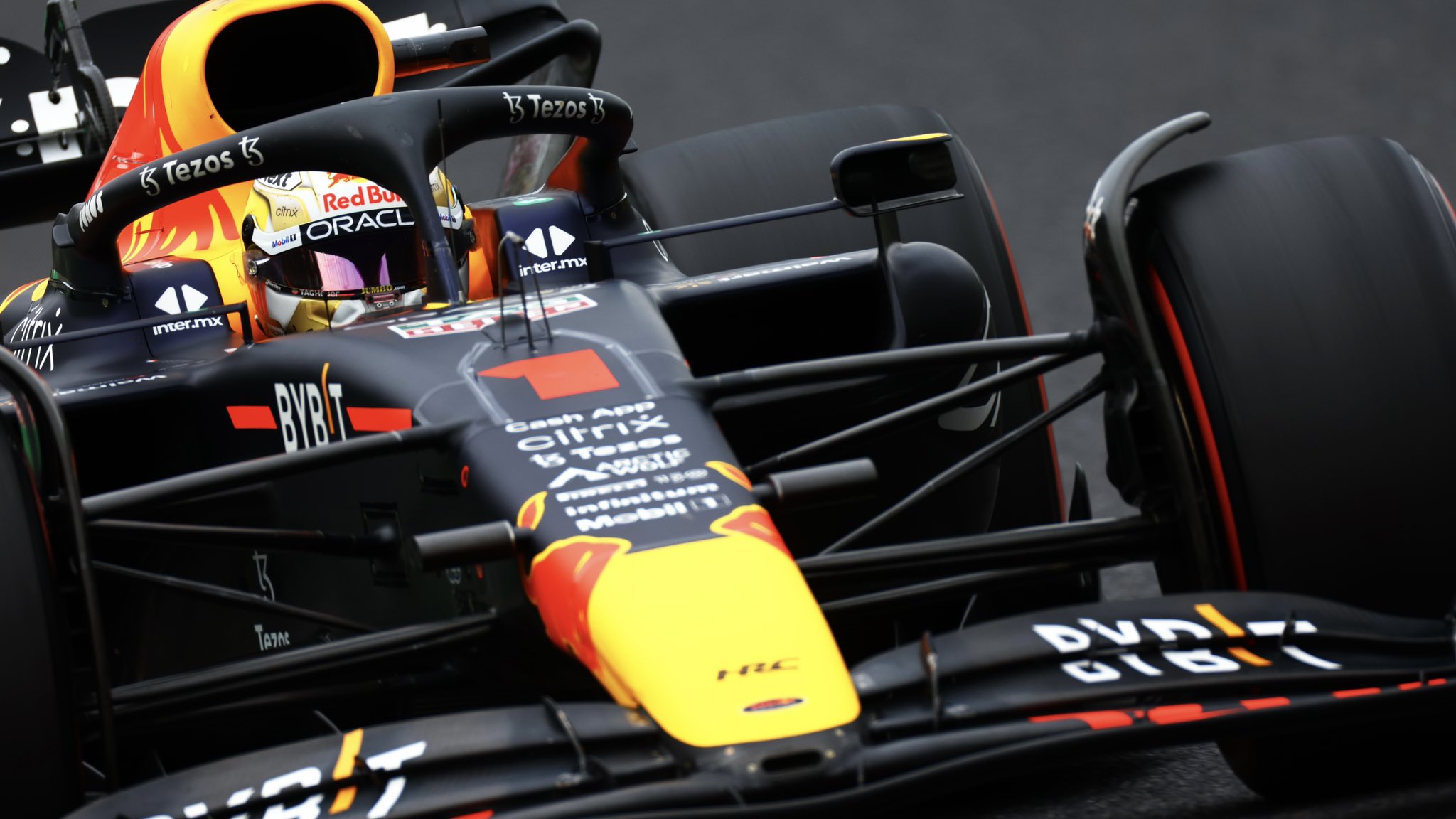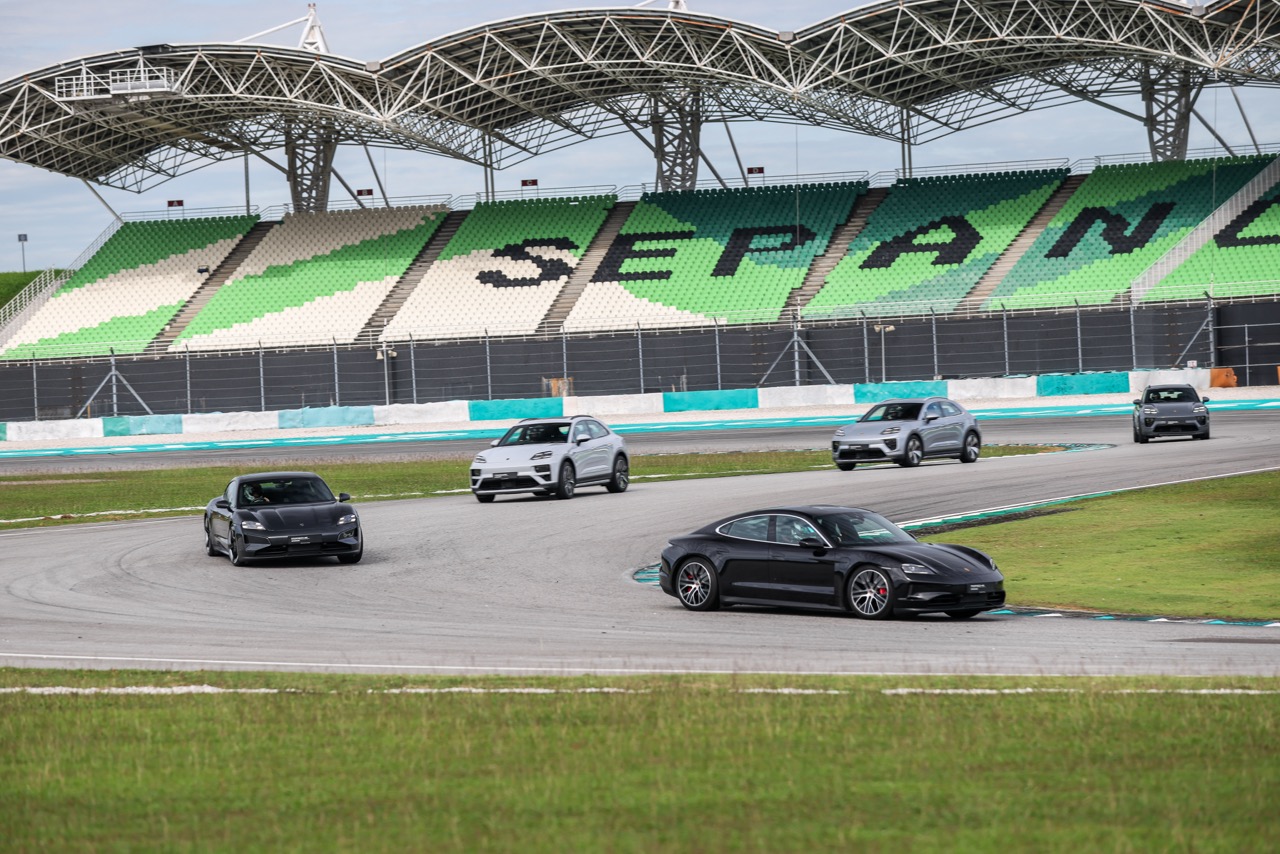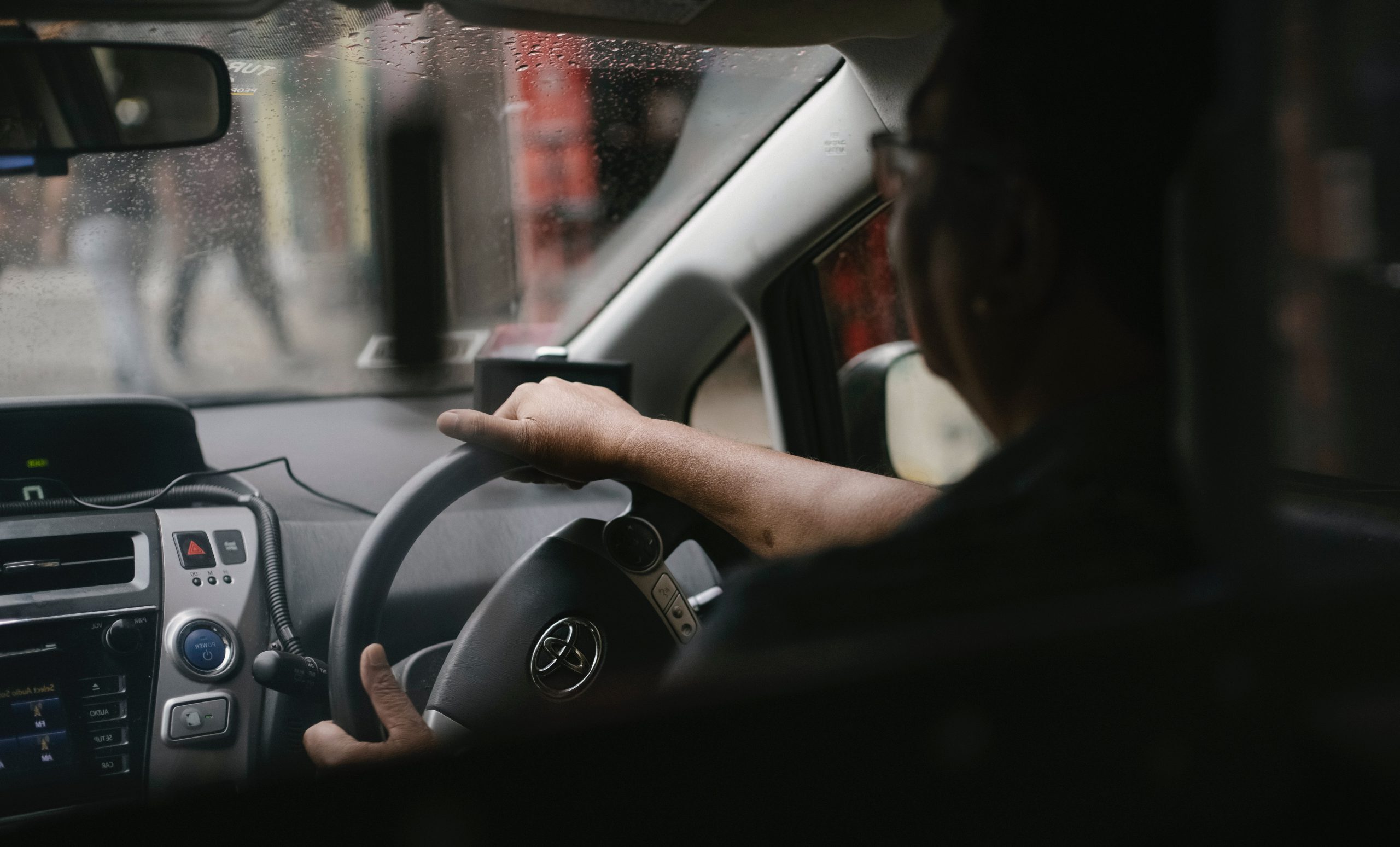Cloudy conditions with the 60% possibility of rain was the forecast as the race was about to start. The damp starting grid filled up with 19 cars as Zhou GuanYu’s crash in the Sprint Race meant that the Alfa Romeo ORLEN driver would have to start from the pit lane.
Red Bull Racing’s Max Verstappen was ready this time, unlike yesterday when he lost out to Ferrari’s Charles Leclerc leaving the starting line. This time he got a great start and even his team mate Sergo Perez in third position slipped past Leclerc. However, it was not good for the other Ferrari driven by Carlos Sainz – a bump with McLaren’s Daniel Ricciardo had both cars in the gravel and Sainz could not get back out. To enable the marshals to recover the Ferrari, the Safety Car came out and took over the lead.
Mercedes-AMG’s George Russell did well to cut through from starting at 11th to place himself in 6th in the convoy behind the Safety Car. Lewis Hamilton managed to improve his 14th starting position to 12th in the running order.
Racing resumed from the fifth lap as the Safety Car left the track. Verstappen amd Perez shot forward and opened up the gap with McLaren’s Lando Norris who had managed to grab third place before the Safety Car came out. But right behind the McLaren driver was championship leader Leclerc who did not want to be delayed from getting to the front.
Aston Martin’s Sebastian Vettel had also done well to move up 5 places and got past Alpine’s Fernando Alonso who was struggling after sustaining damage that took off his sidepod. When he finally got back to the pits, the engineer gave him the bad news that the damage was severe and he might have to retire.
On lap 8 of the 63-lap race, Leclerc finally got past Norris, much to the delight of the home crowd. But his third position was still some 6 seconds from Verstappen who was protected by his team mate.
As the track was drying out, the radar showed that rain could start to fall by lap 22, so decisions were being made to hang on to the intermediates for the time being. The three frontrunners – Verstappen, Perez and Leclerc were well ahead of Norris who was 10 seconds behind the Ferrari and, for the time being, safe from Russell who was occupied with keeping Haas F1’s Kevin Magnussen from passing him.
By lap 15, Hamilton was in the mirrors of the Aston Martin of Lance Stroll and trying to get into 10th and start to think about points. Just ahead of the two was Scuderia Alphatauri’s Yuki Tsunoda who started to become involved in the tussle as well.
The first drive to come in was Ricciardo on lap 18 and his McLaren got medium tyres. He was followed by Pierre Gasly (Scuderia Alphatauri) and Alex Albon (Williams) who changed to the dry-weather tyres. By lap 21, all the cars had made their tyre changes. During his pit stop, Hamilton had contact with Alpine’s Esteban Ocon who was departing after his tyre change and it was deemed an unsafe release, for which the Stewards gave him a 5-second penalty.
The forecast changed to less risk of rain which meant that the medium tyres would have to last for another 39 laps. Ricciardo decided to come in again on lap 27 for slicks but he still had a lot of work ahead as he was way down in 18th. He would come in again another 4 laps later and try another set of tyres.
Perez was doing a good job of keeping Leclerc in third but the Ferrari driver was pushing hard. When told of the increasing efforts, Verstappen widened the gap to 9 seconds but by about halfway through the race, he would start to encounter traffic.
It seemed that Ricciardo, being way back, was a ‘tyre tester’ and from his experiences with the hard tyres, it was better to stick to the mediums for the rest of the race, so Norris would have to think about tyre management for another 25 laps.
By lap 40, Verstappen appeared behind Hamilton, down in 14th, and it must have been hard for the 7-time world champion to let the man he lost to last year pass. Once the Red Bull got past, Hamilton got back to trying to displace Gasly from 13th place. It was obvious that the Mercedes-AMG just did not have the speed to overtake the Scuderia Alphatauri.
With 13 laps to go, Verstappen had built up a comfortable lead of almost 14 seconds. Leclerc was still battling with Perez, while Norris was also safe in 4th place and just had to make it to the end.
On lap 50, Leclerc came in and switched to soft tyres (which he was not 100% convinced was right) and on the very next lap, the two Red Bulls came in and did the same change. Verstappen had such a big gap that he easily returned to the lead as he rejoined the race.
Disaster struck for Leclerc on lap 54 and he spun and hit a barrier. He was fortunate to slide sideways into the barrier so the damage was less but still the front wing was damaged. He managed to get back to the pits but when he got back out, he was done in 8th. With 5 laps left, he had to try to improve his position but make sure he did finish as well.
As two laps remained, some teams started to alert their drivers of rain on some parts of the track, but for Verstappen, there were no worries of challenges before the end. Both Red Bulls were comfortably ahead as they crossed the finish line, with Norris joining them on the podium.
Behind Norris came Russell who had put in a strong effort in those closing laps to prevent Valtteri Bottas from taking fourth place. As for Leclerc, he could only reach up to 6th position, having managed to get past Yuki Tsunoda, by the time the race ended.

